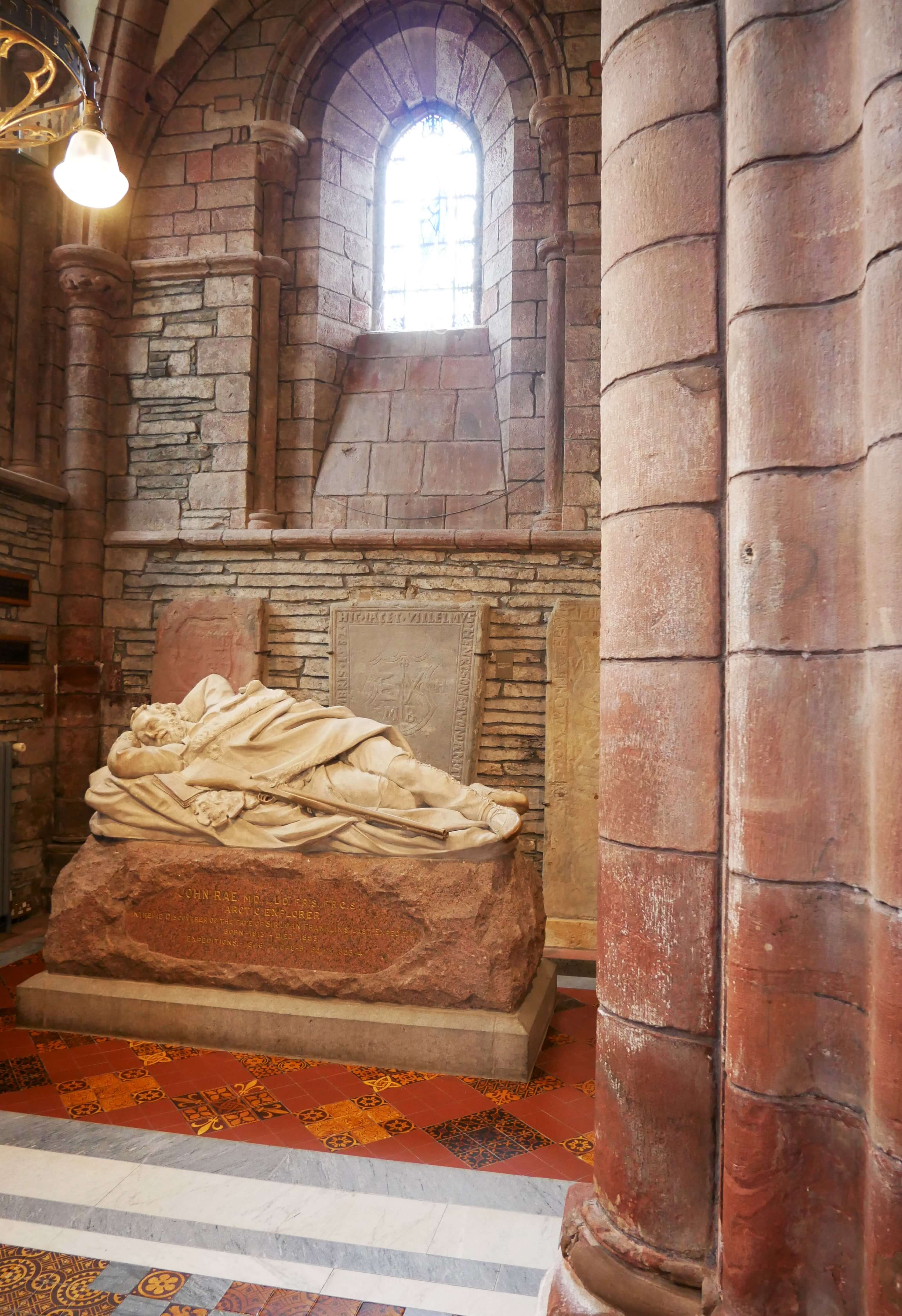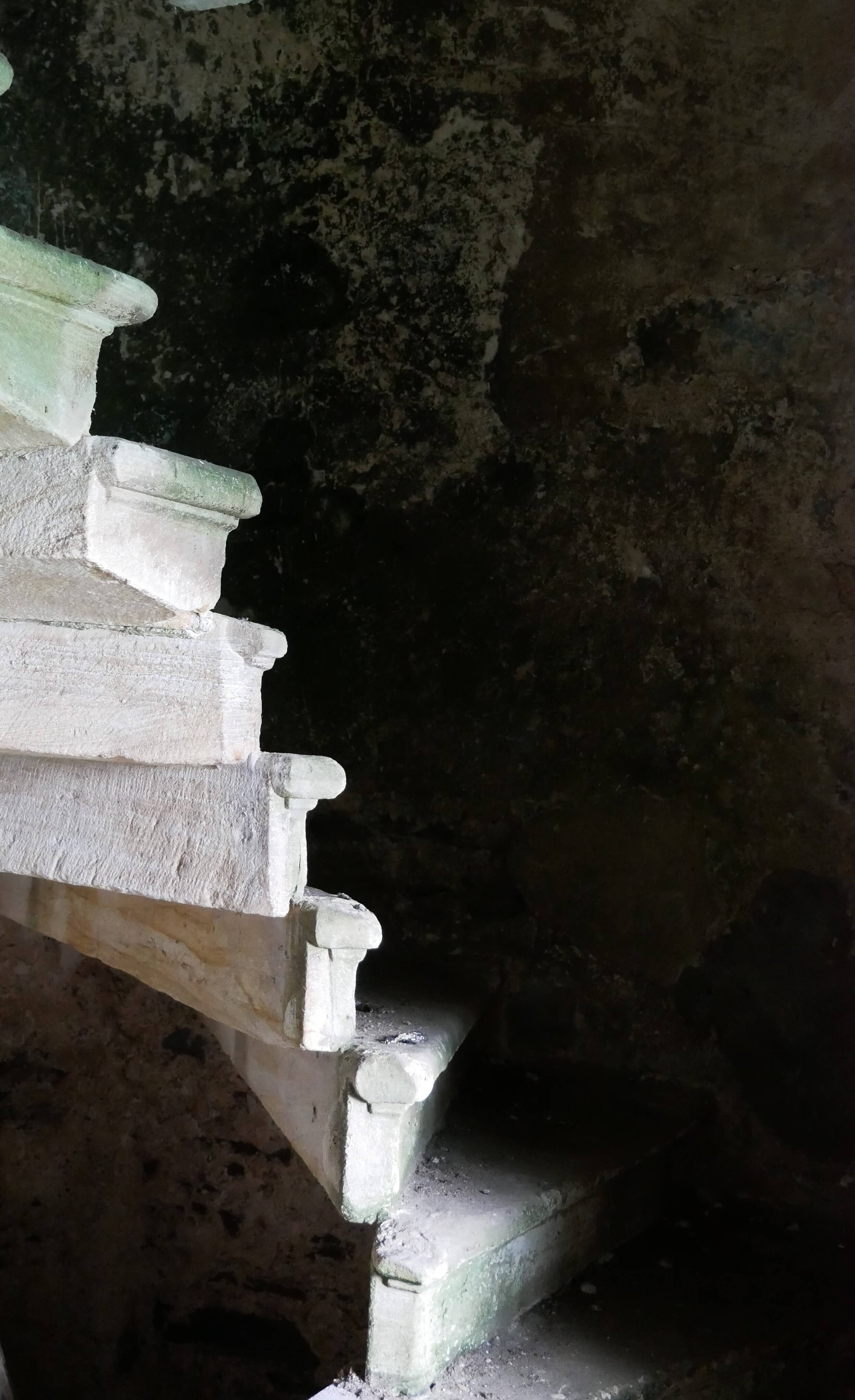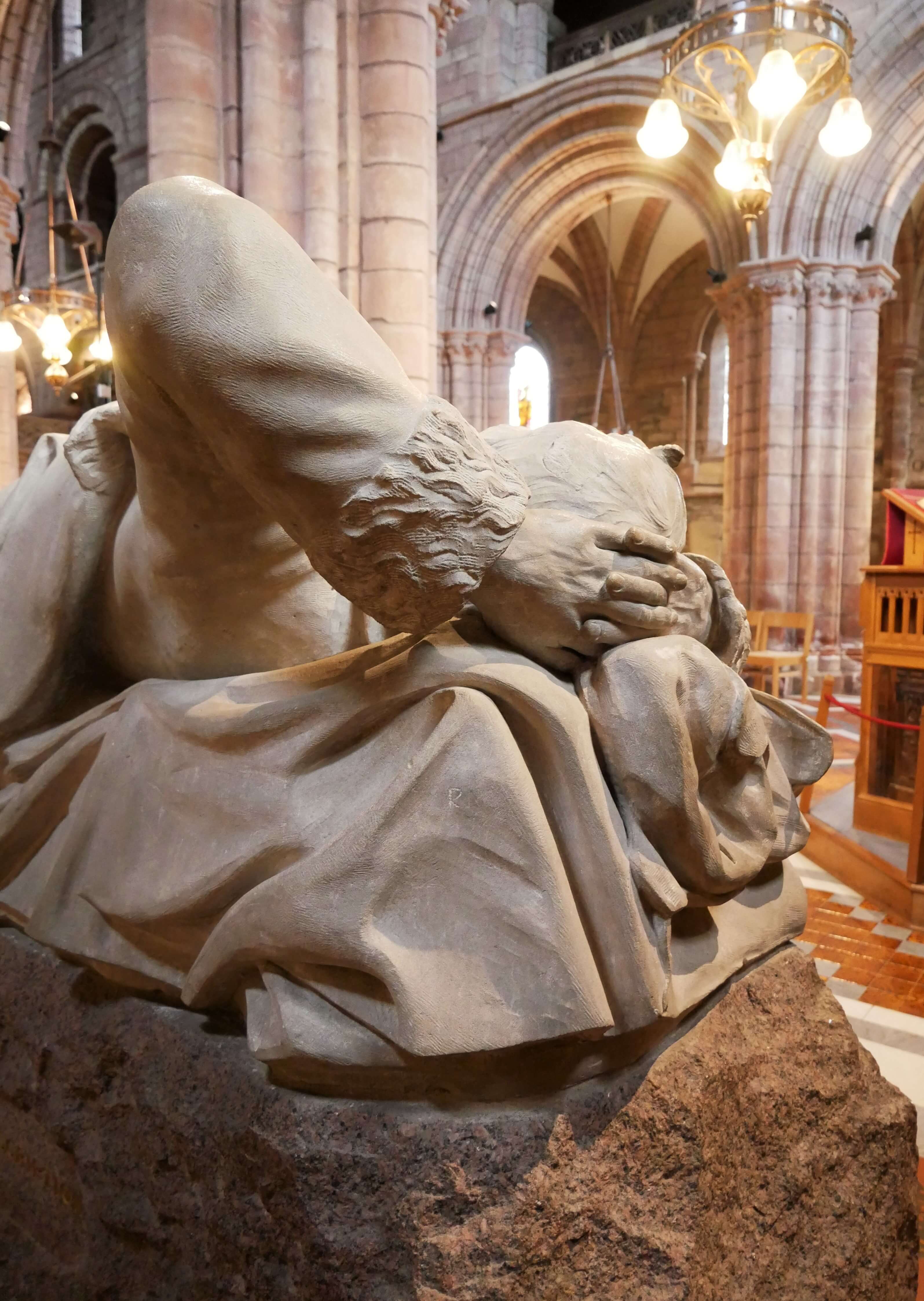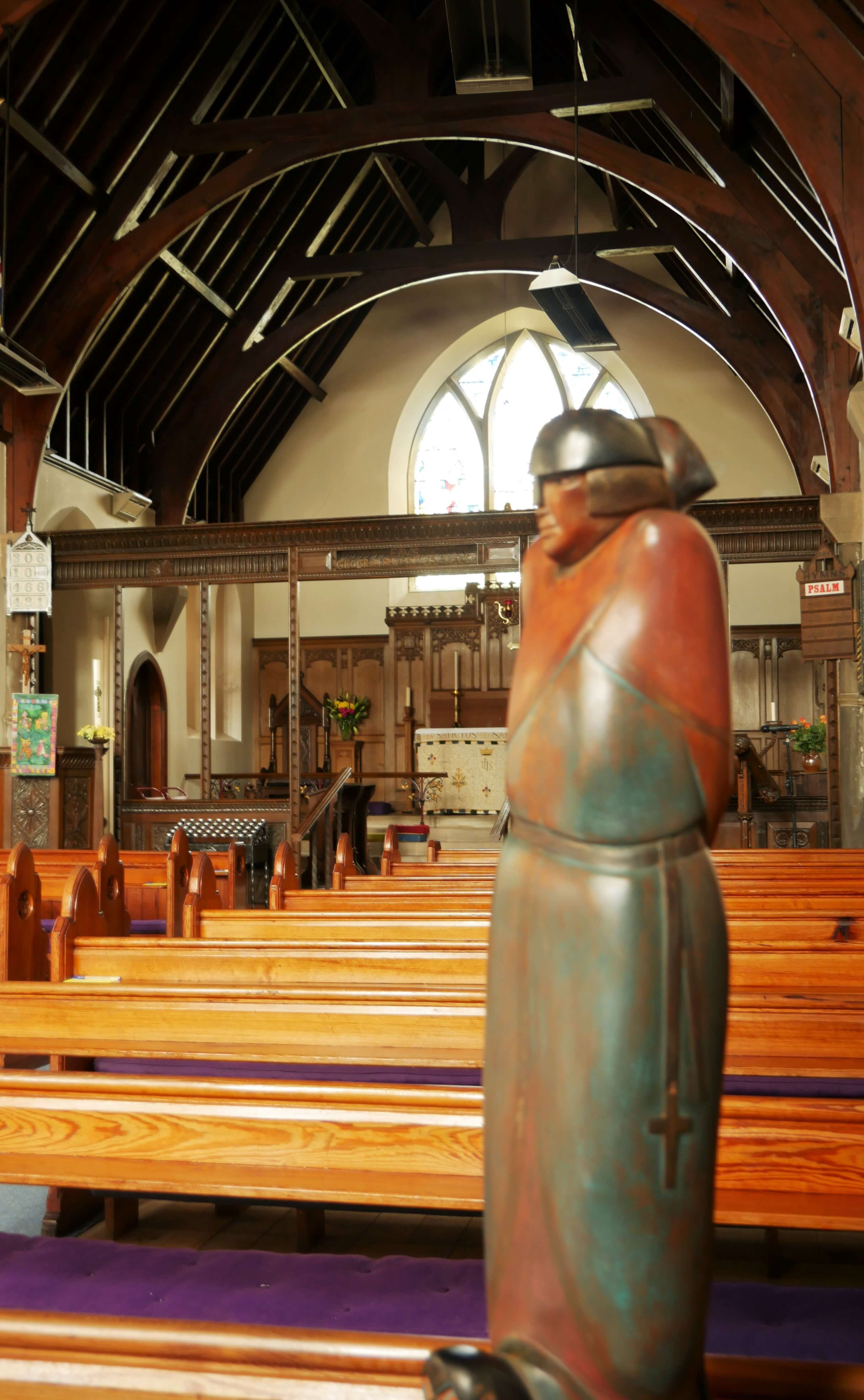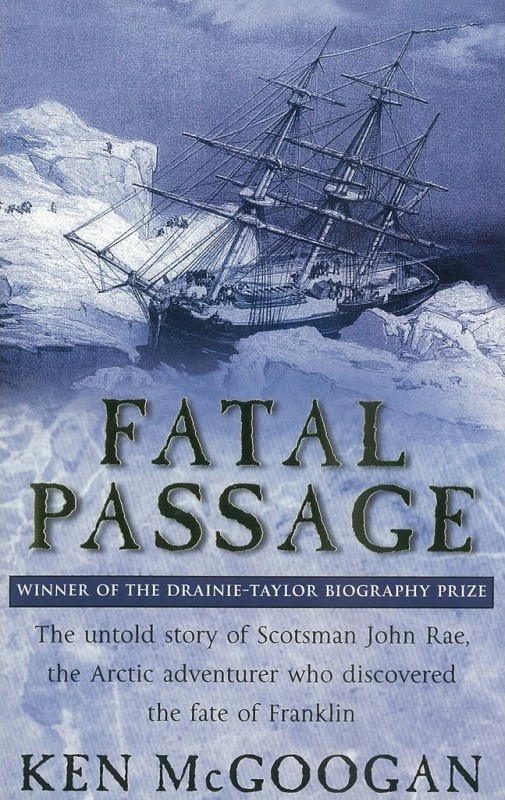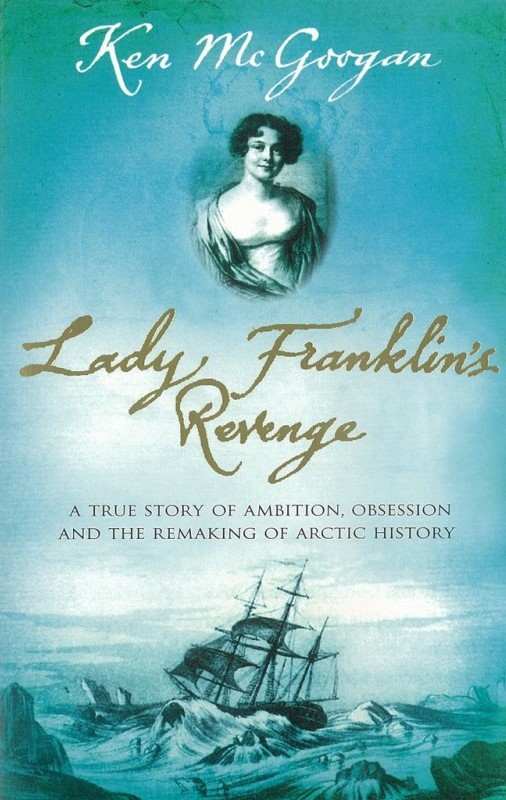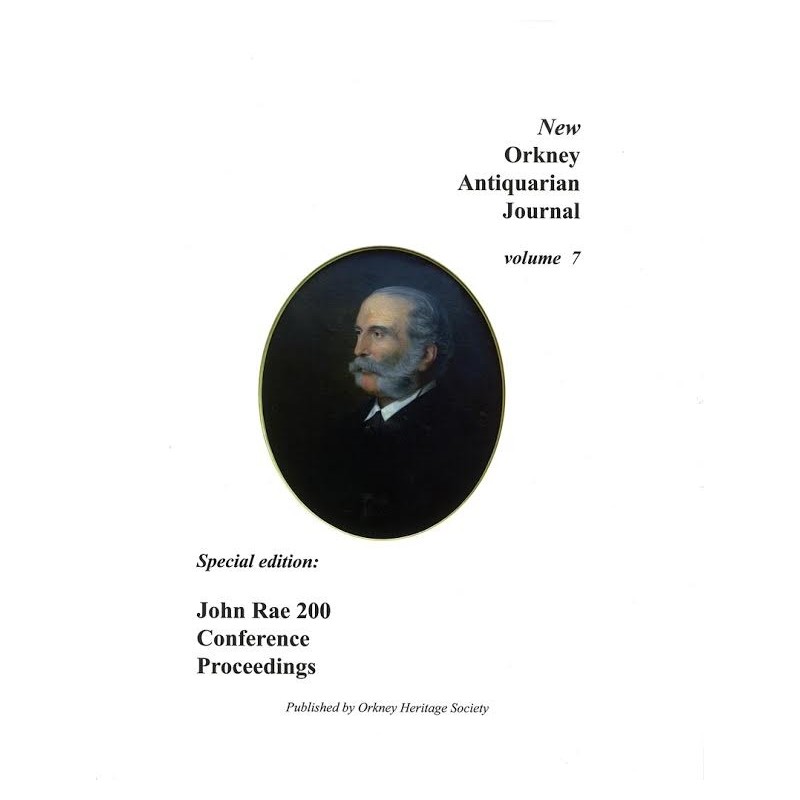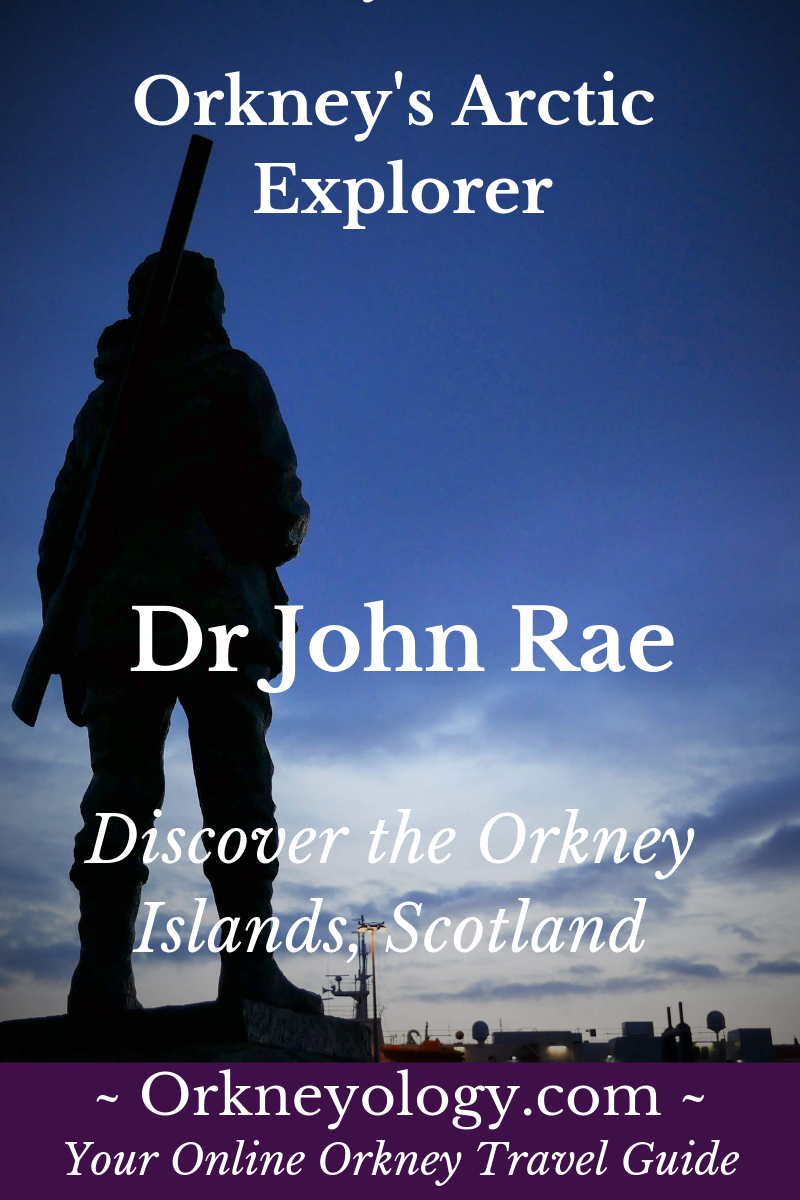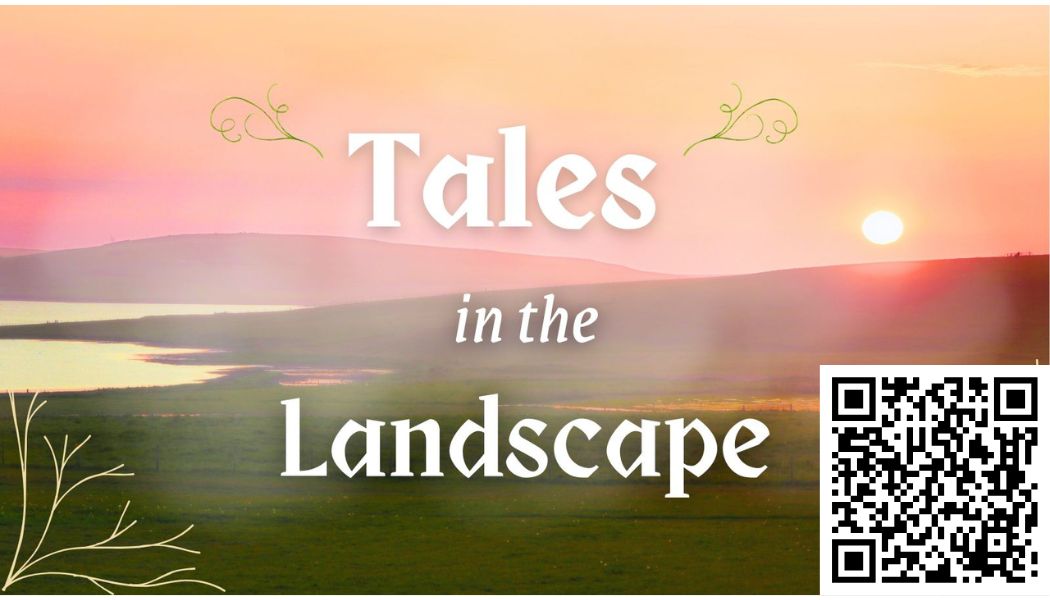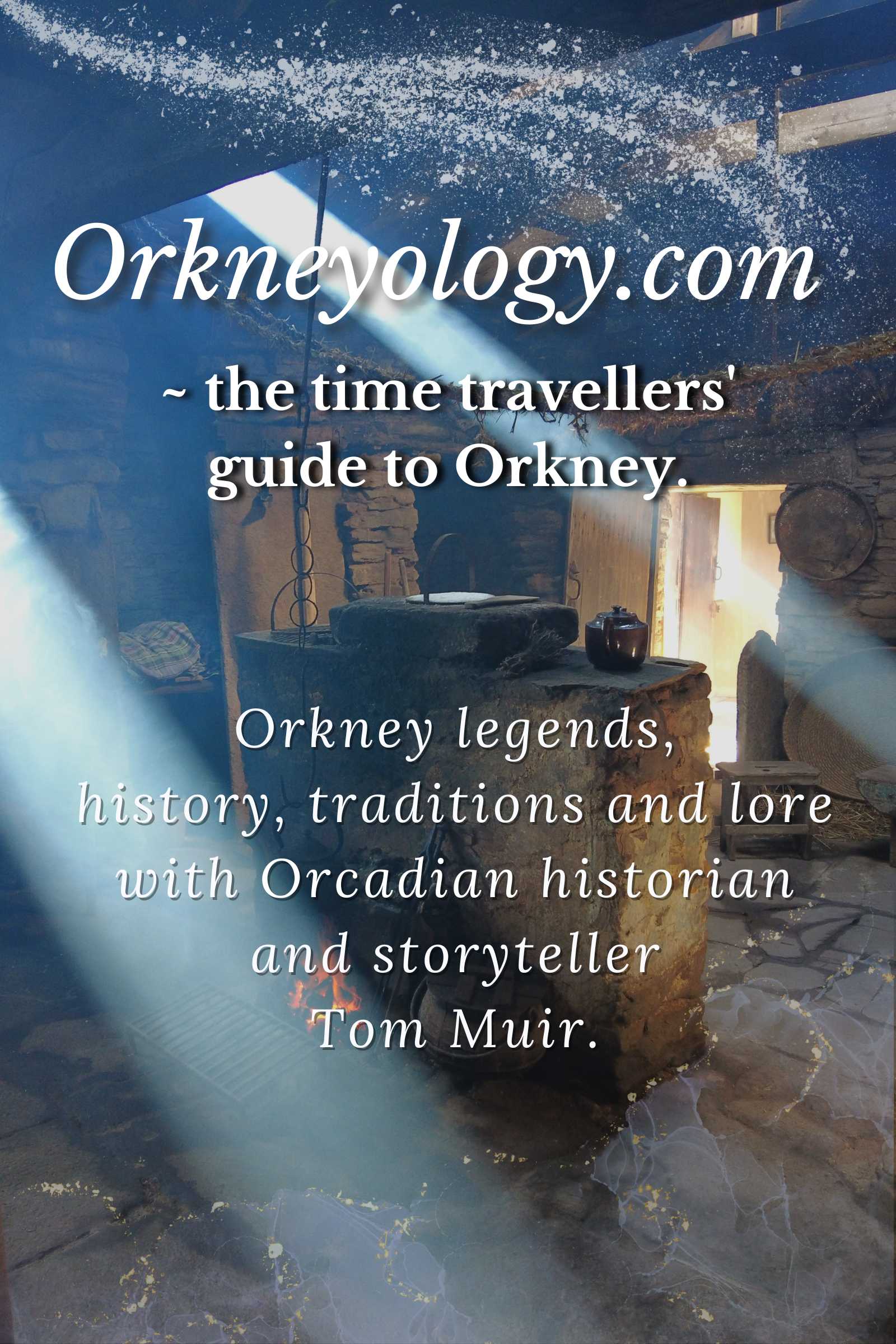John Rae:
a man ahead of his time
... and the surprising reason you might not have heard of him
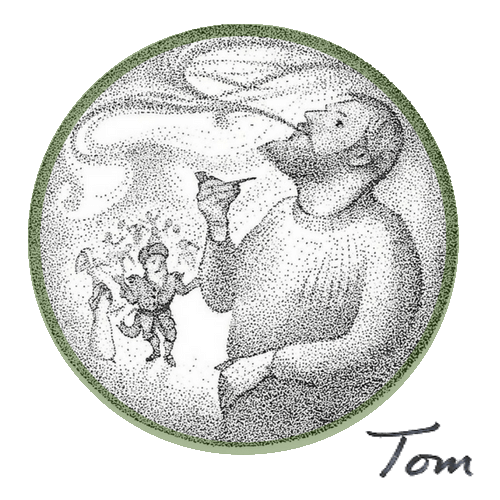
Orkney’s John Rae was one of the most successful of 19th century Arctic explorers.
His success was largely due to his willingness to learn from the Inuit and First Nations people, who knew how to survive in inhospitable places.
This attitude was highly unusual in the Victorian era of prejudice and racial arrogance.
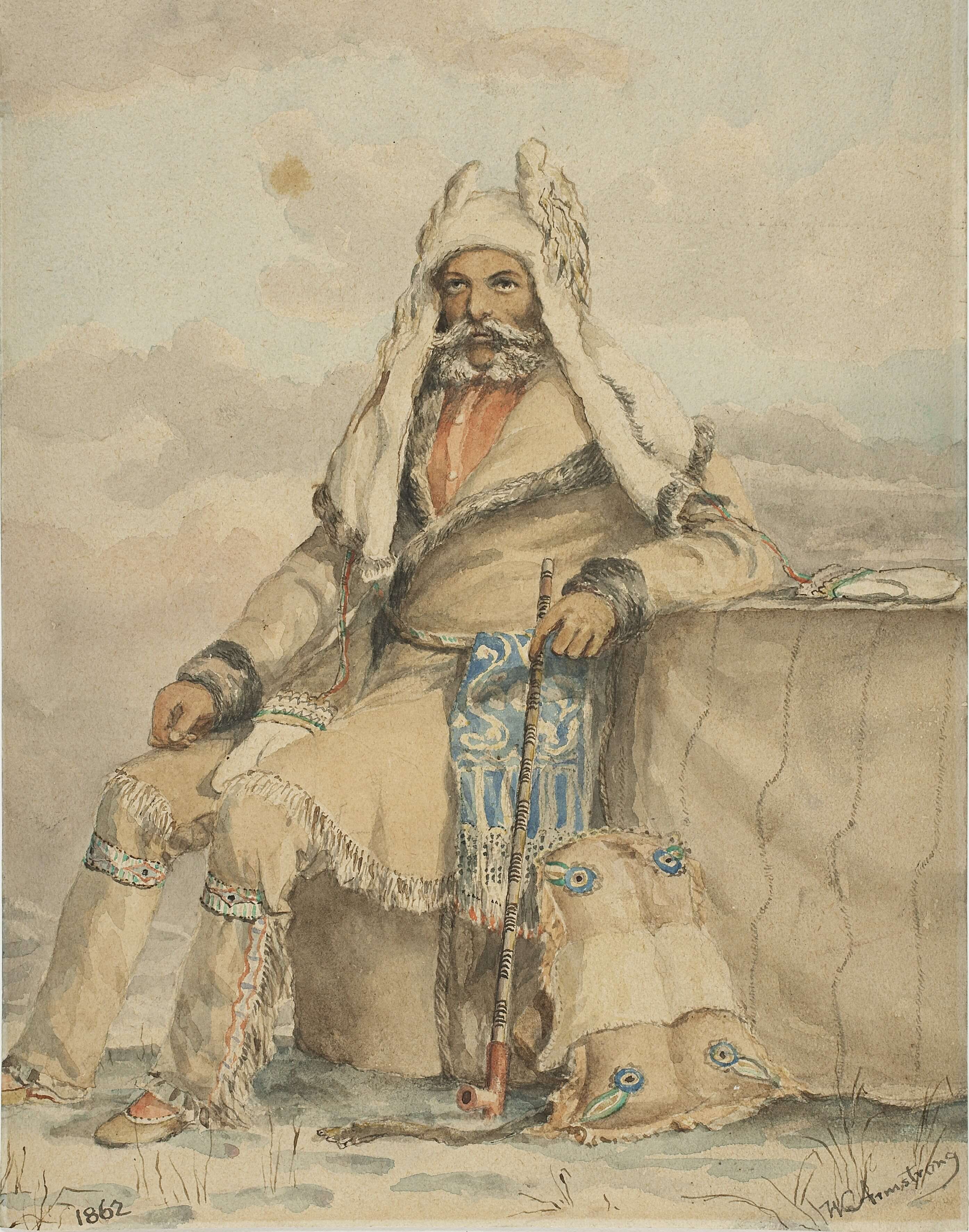
Ironically, Rae’s decency and respect for all people would later be used against him when Lady Jane Franklin used him as a convenient scapegoat and wiped his name out of history.
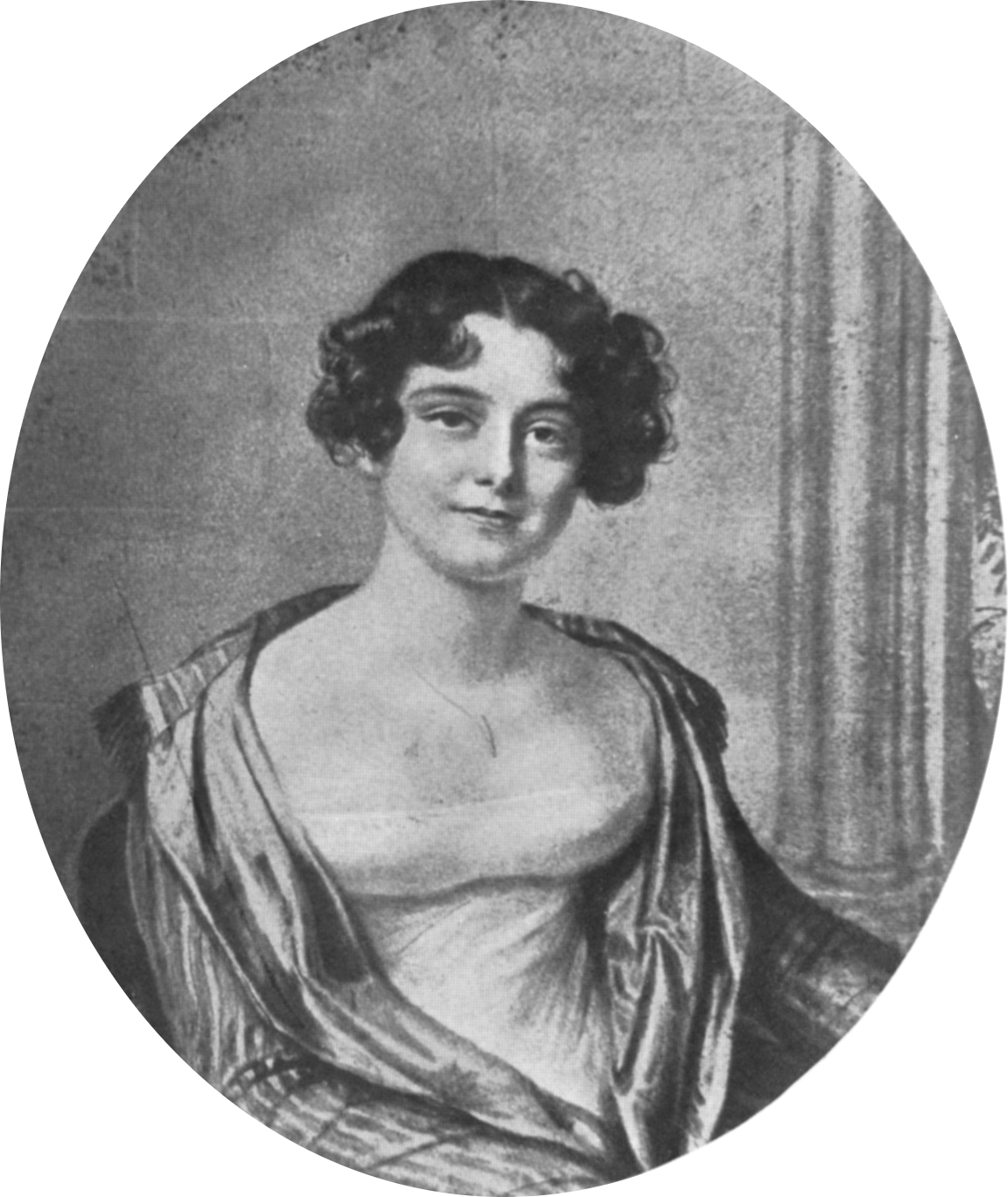
What's on this page?
Expeditions and finding Franklin
A man respected and loved - later life
Explorer training
Rae was born at the Hall of Clestrain in Orphir, Orkney, on 30th September 1813.
He was one of nine children to be raised in the house where their father was factor.
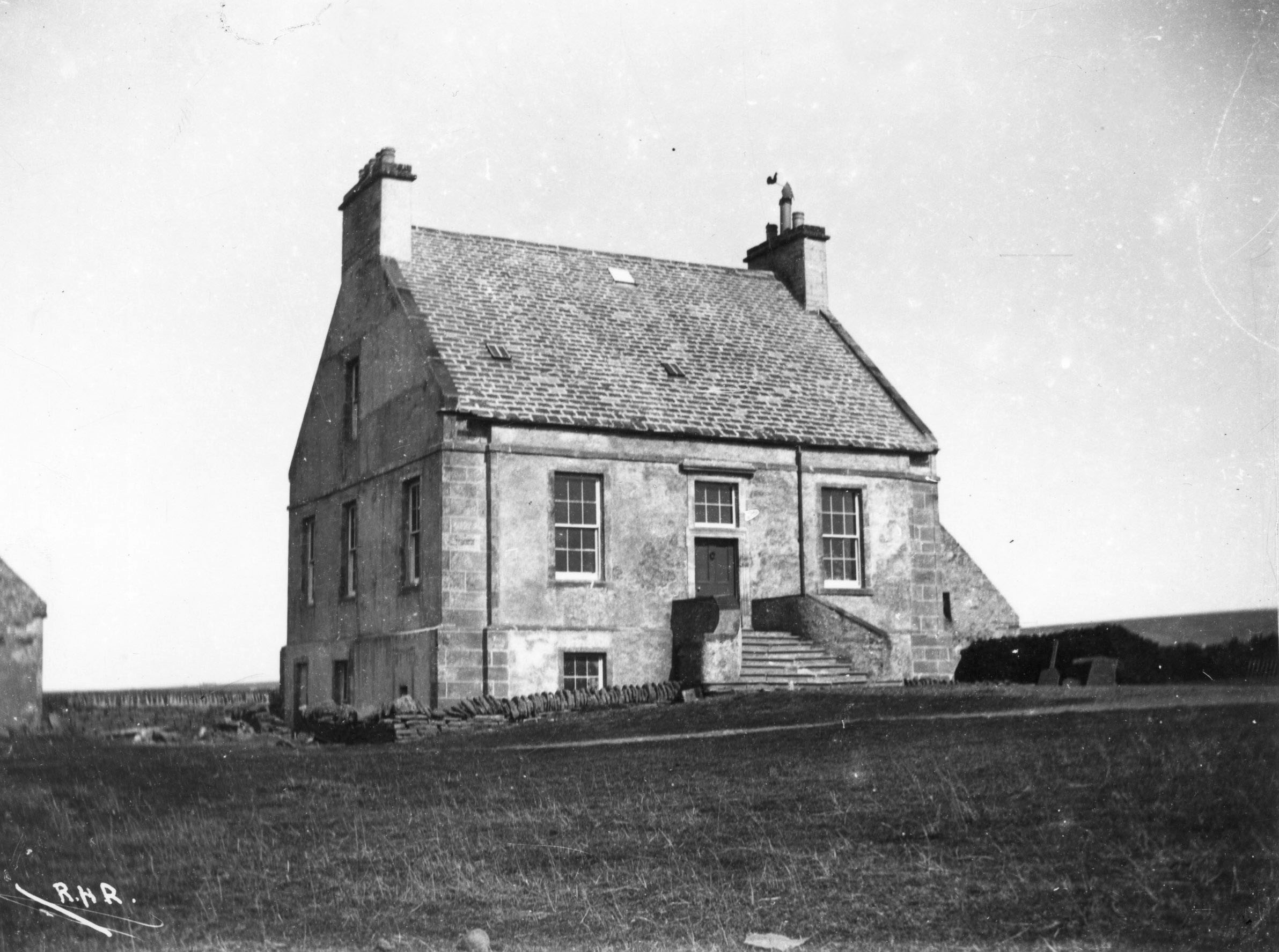
* Image courtesy of Orkney Library and Archive
Young John loved to fish, shoot wild fowl on hill and shore and sail the family’s small boat.
This early education would serve him well in his future career as an explorer and surveyor of the Arctic.
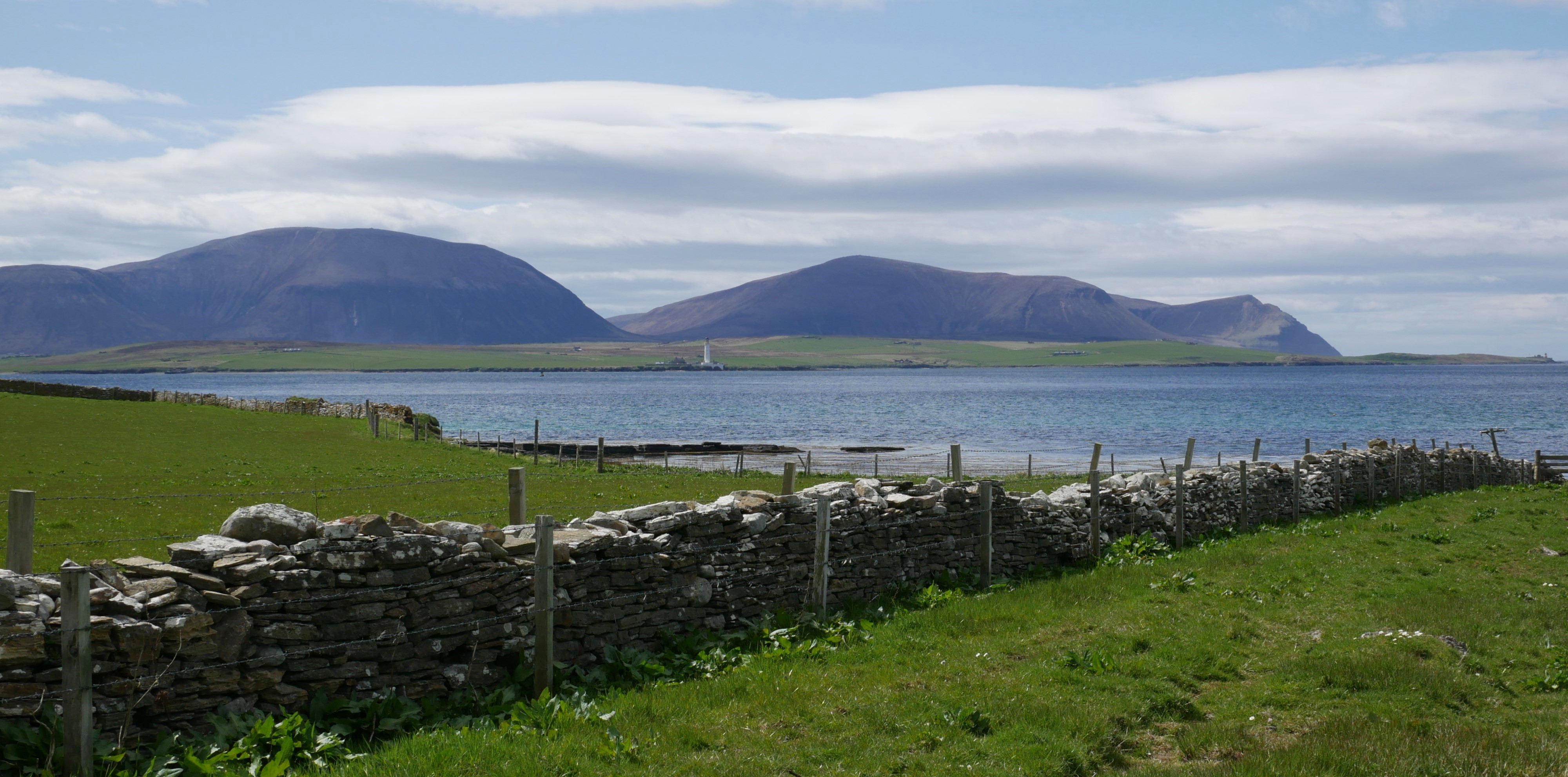
Young Dr Rae
Rae studied medicine at Edinburgh University and the Royal College of Surgeons, qualifying at the astonishing age of nineteen.
His father was the agent for the Hudson’s Bay Company in Stromness at the time.
Young Dr Rae signed on as ship’s surgeon on the Prince of Wales, bound for Canada.
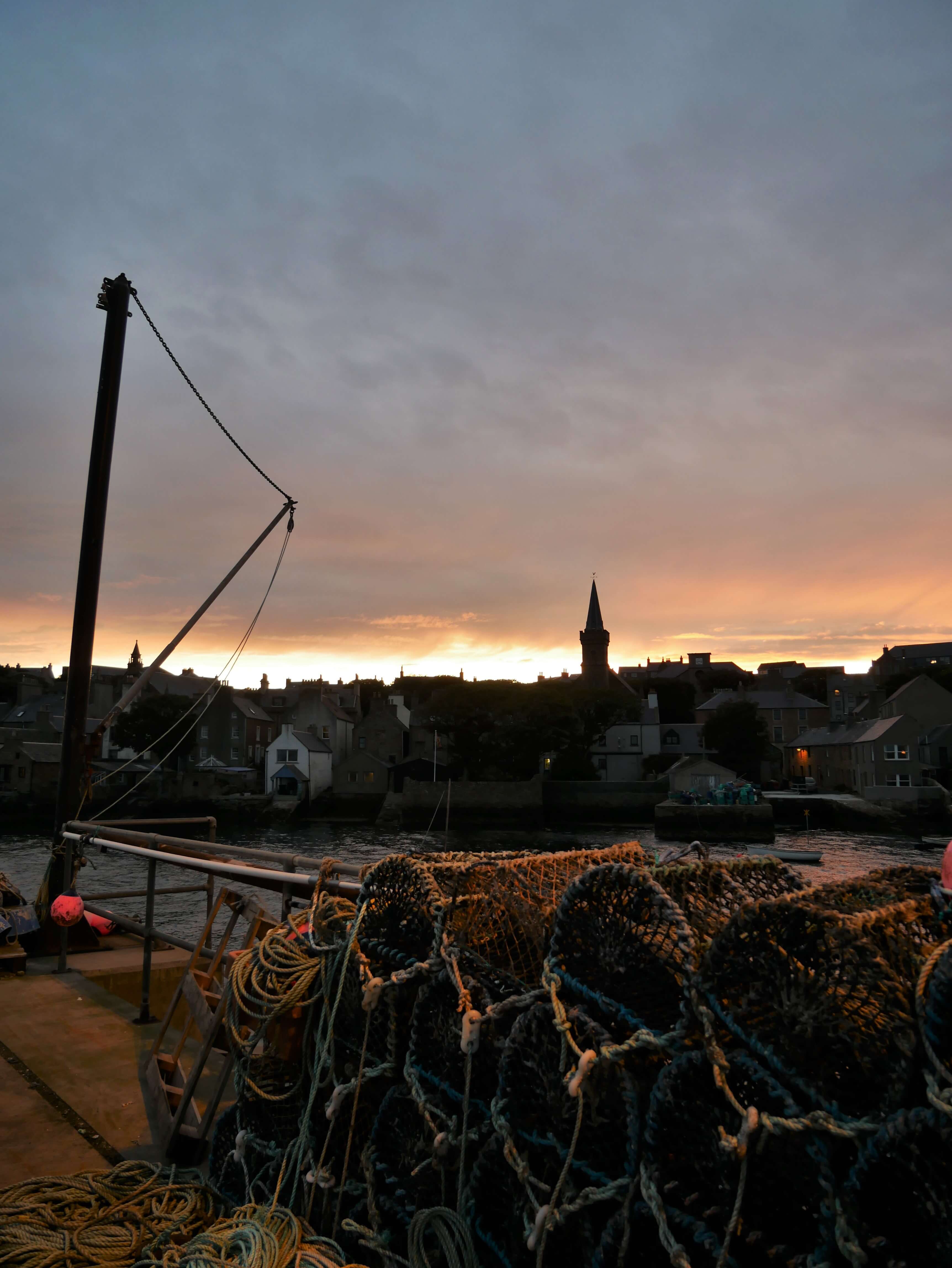 Stromness Harbour
Stromness HarbourRae was forced to winter in Canada when the return route became blocked by ice. A sensible man, he accepted the post of surgeon and clerk at Moose Factory and settled in.
He must have liked the Canadian Arctic. He went on to serve in Moose Factory for ten years.
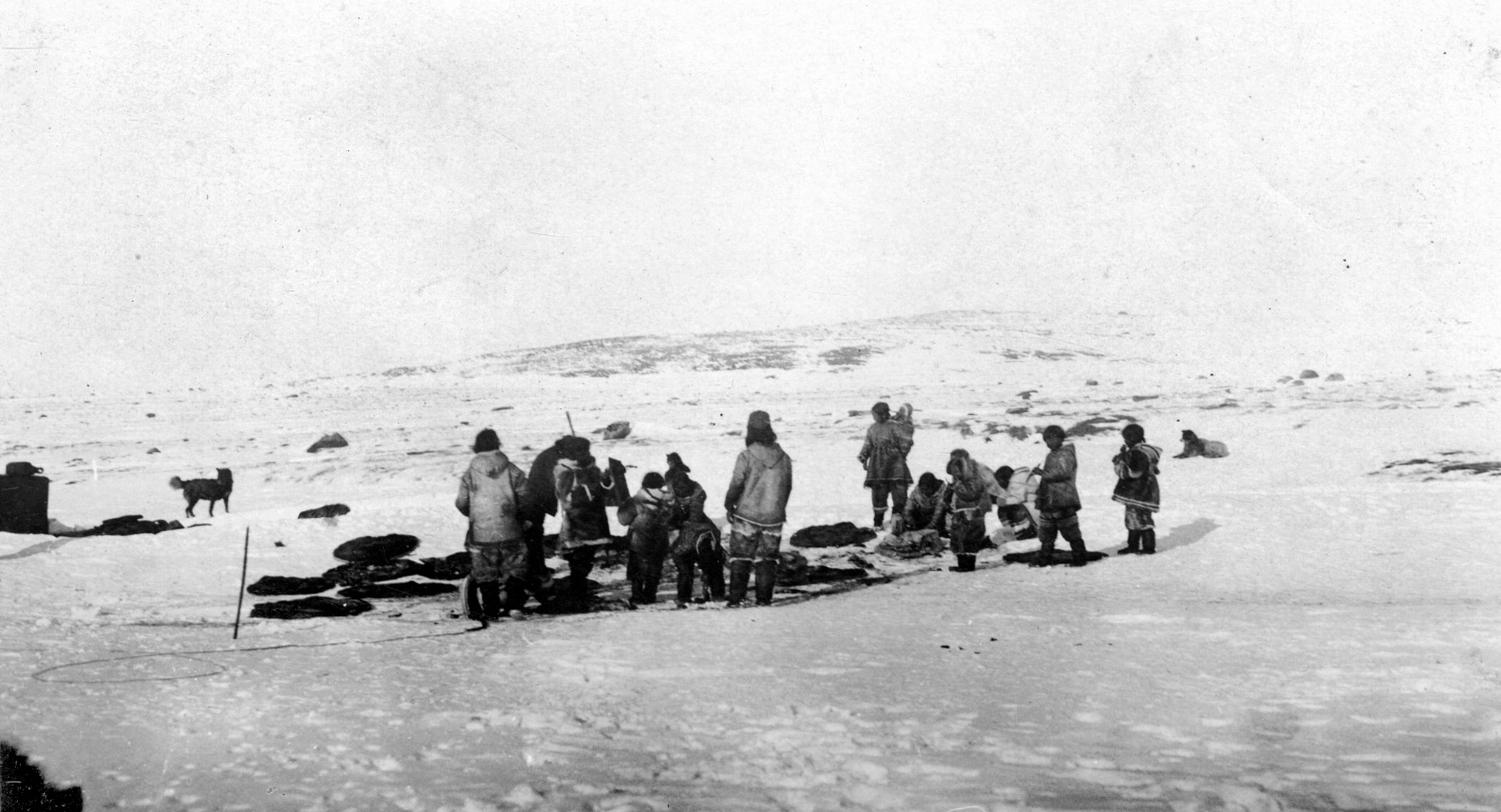
* Image courtesy of Orkney Library and Archive
In his free time Rae hunted and learned travel and survival skills from the First Nations and Metis people.
Crucial for his later success, Rae's indigenous friends also taught him to make snow shoes and use sleds for transportation.
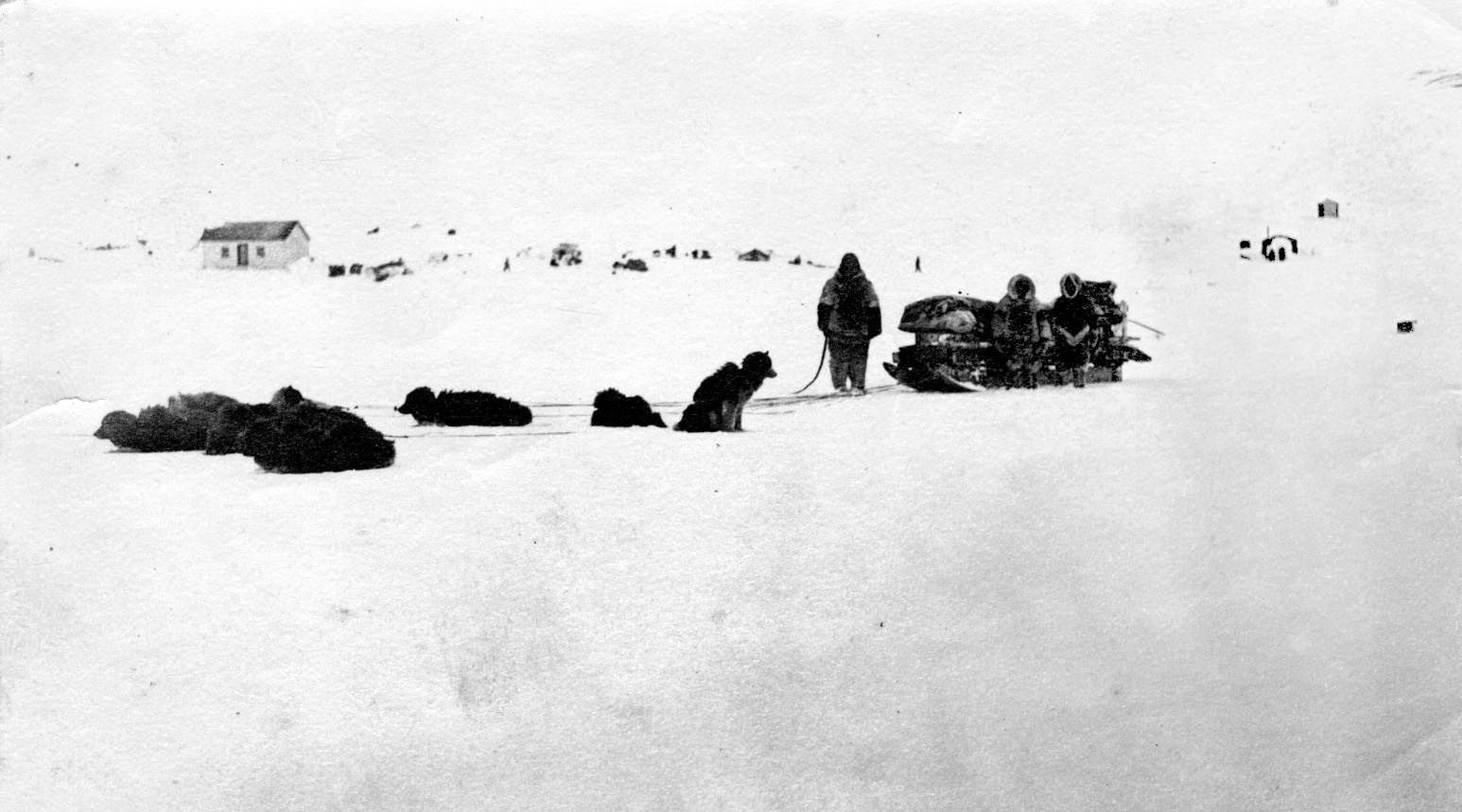
* Image courtesy of Orkney Library and Archive
Surveyor for the Hudson's Bay Company
The Hudson’s Bay Company Governor-in-Chief, Sir George Simpson, selected the skilled and hardy Rae as the fittest man to finish mapping the Arctic coast.
He invited Rae to receive training as a surveyor. Just getting to the training site would prove to be a test of Rae's skill, strength and determination.
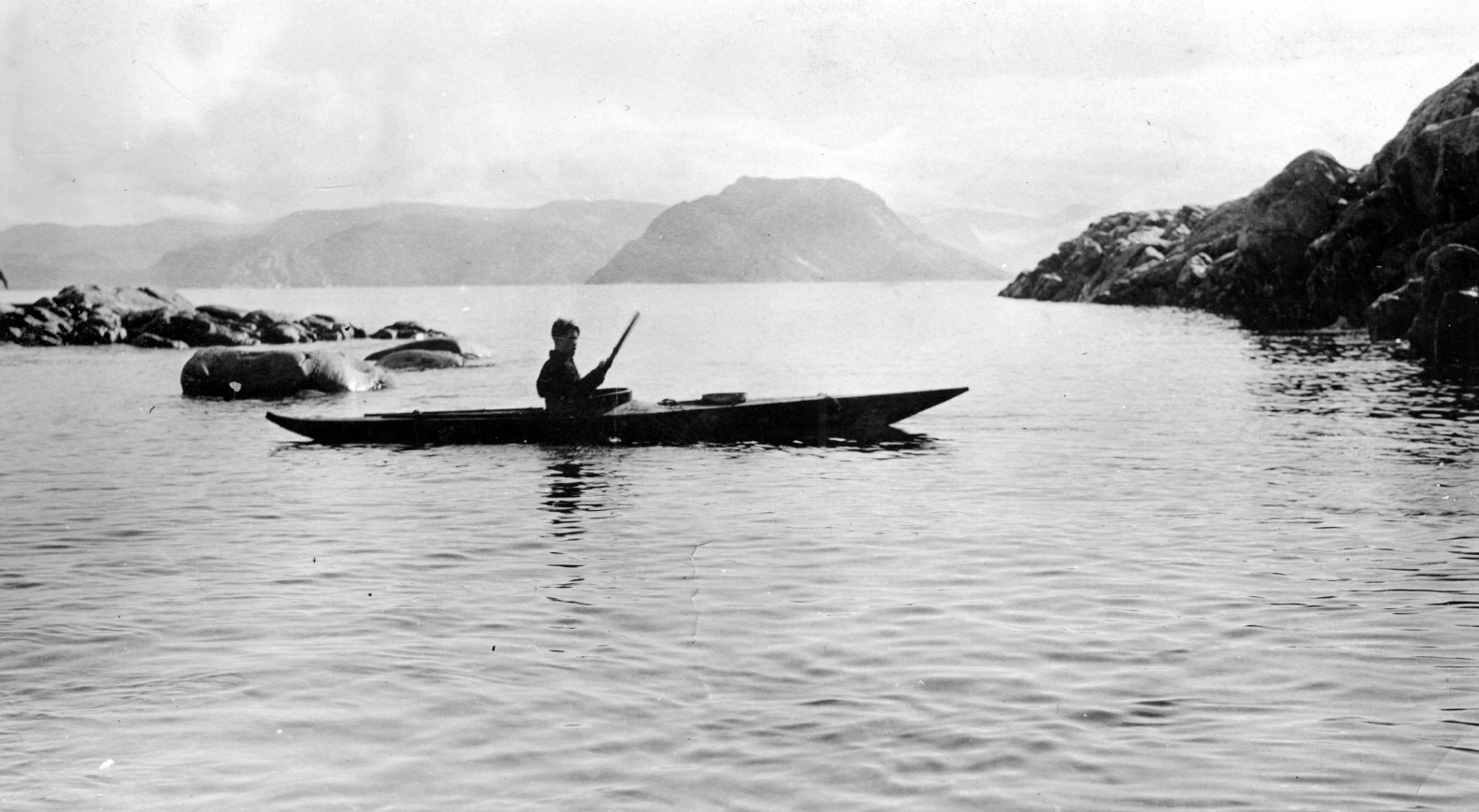
* Image courtesy of Orkney Library and Archive
Rae paddled from Moose Factory to the Red River settlement to reach his tutor, traveling with fellow Orcadian John Corrigall and three First Nations men.
When Rae arrived, he found that the man who was to teach him surveying was deathly ill.
Rae decided to go to Sault Ste. Marie, walking 1200 miles by snowshoes to where he hoped he'd find another teacher.
... 1200 miles
Corrigall refused to use snowshoes, so Rae went ahead, blazing the trail, while his friend struggled behind. When they arrived, the men were told to continue to Toronto - more than 400 miles farther.
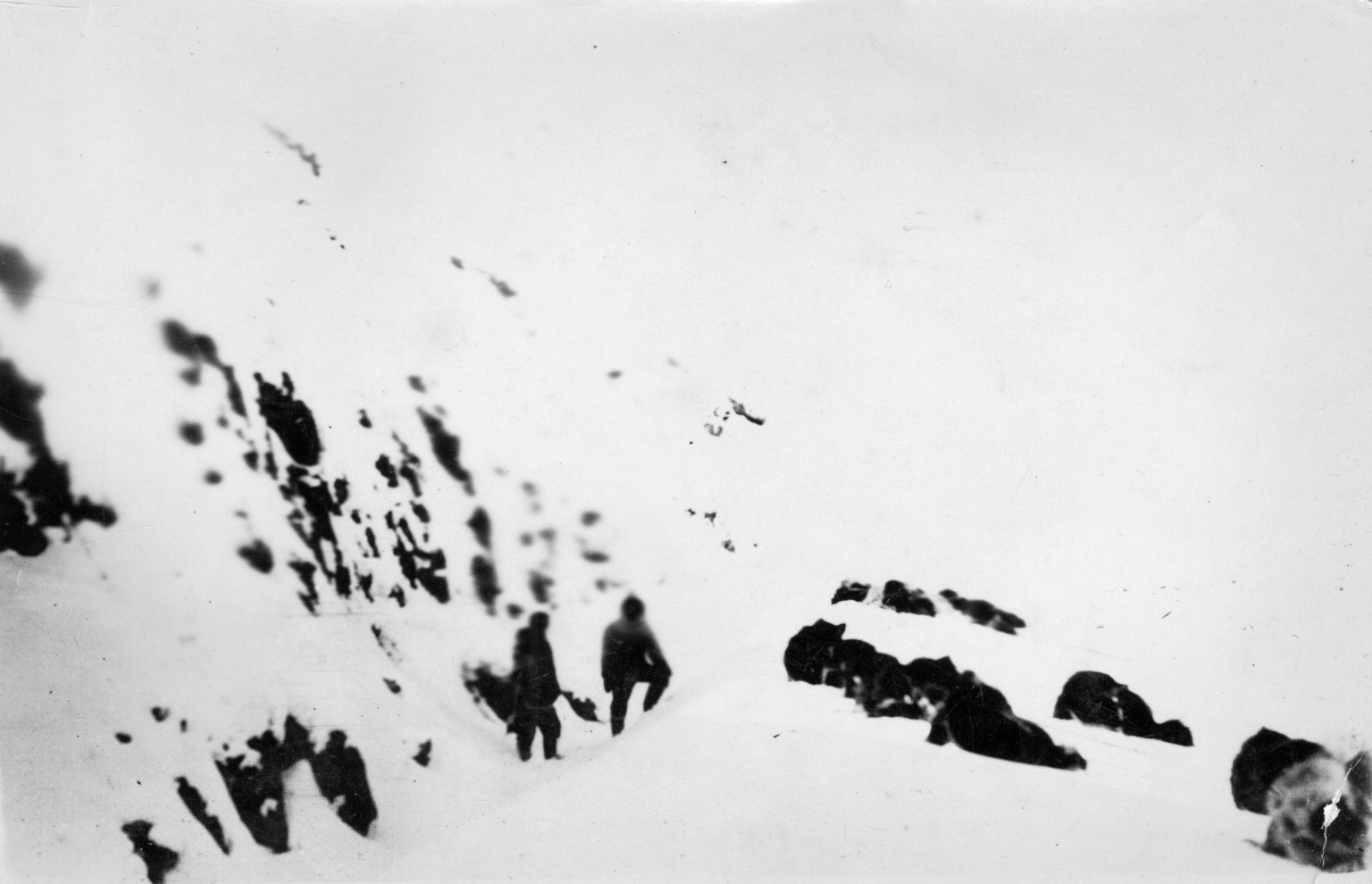
* Image courtesy of Orkney Library and Archive
When they finally arrived in Toronto, Rae had gained two pounds in weight. The duggid ('stubborn' in Orcadian dialect) John Corrigall had lost more than twenty pounds.
The superior efficiency of snowshoes was proven, and John Rae was shown to be the right man for the job of mapping the Arctic coast.
The first expedition
In his first Arctic expedition (1846-7) Rae took just a few men and modest supplies, intending to hunt and live off the land as his First Nations friends had taught him.
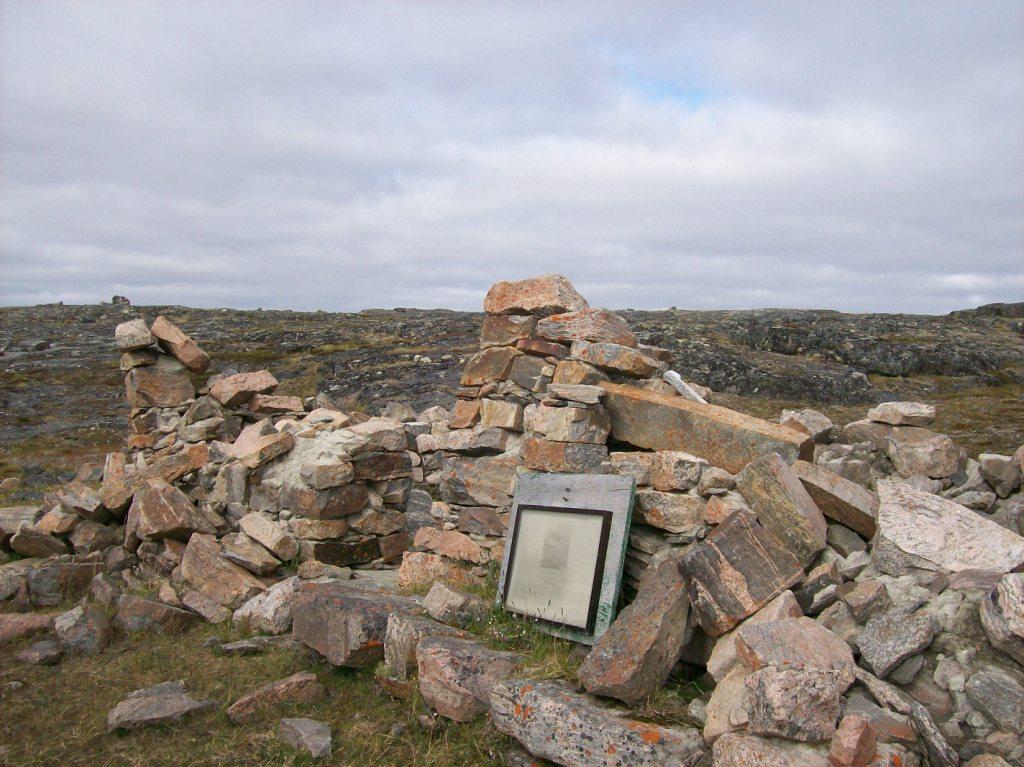
Rae and his men built a stone house in Orkney fashion and called it Fort Hope.
The men always prepared extra food, so they'd have a 'bite and sup' on hand in case of Inuit visitors. But to their dismay, the freezing cold house proved unsuitable.
One day while visiting Inuit friends, Rae was surprised to find his frozen clothing and beard thawing out for the first time in weeks.
That was when the Inuit taught him how to make warm and reusable snow houses.
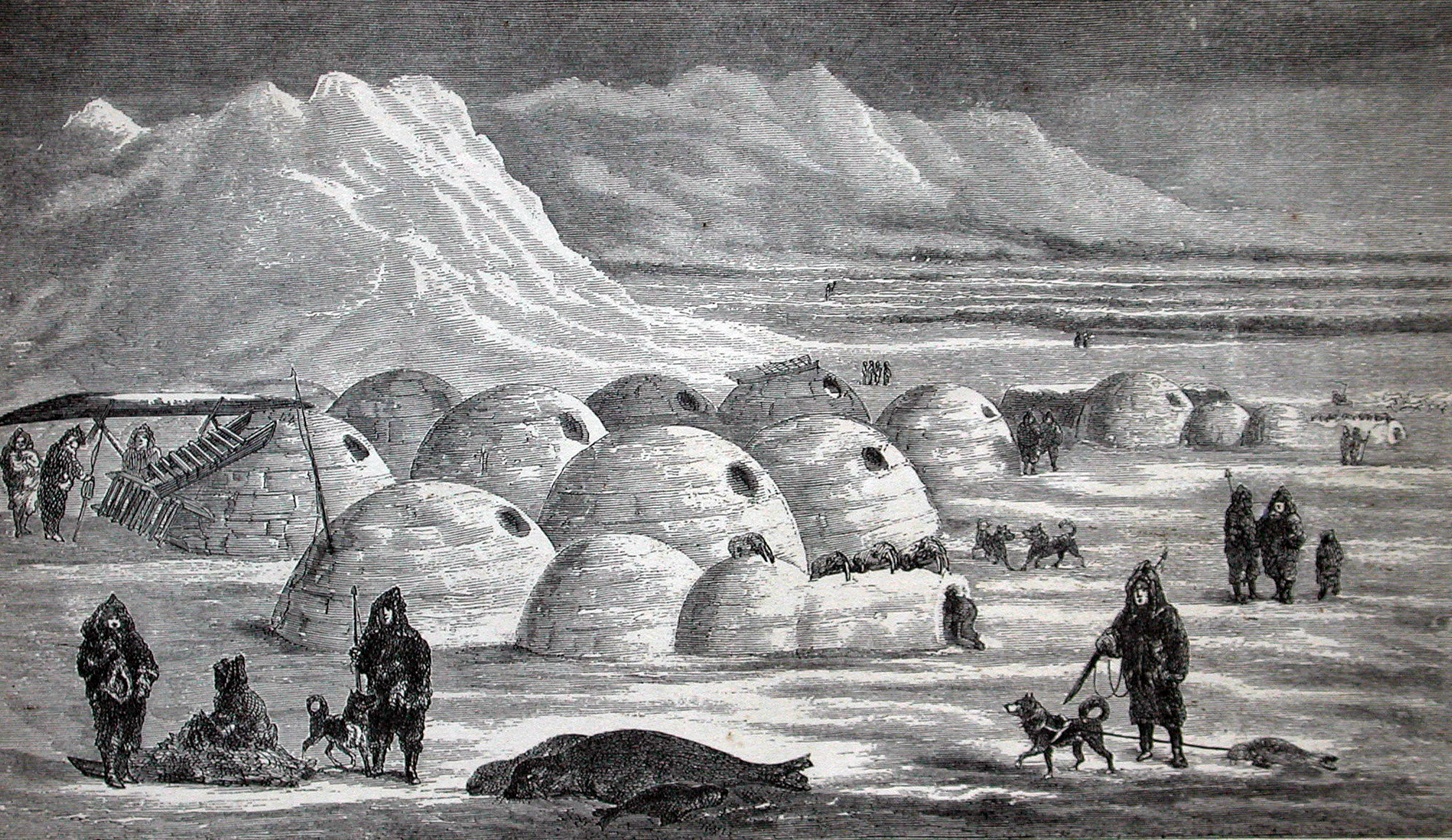
Rae tried to pour water over his house, thinking that a coat of ice would make it more weatherproof.
His friends warned him that this would make the house cold. Only ‘warm’ snow would work, with plenty of air trapped inside.
The Inuit taught him to cache food, as well, wisely providing food for the return journey.
Well prepared by his on-the-job education, Rae went on to explore the Gulf of Boothia on foot and by small boat. He discovered that Boothia was a peninsula and not an island, as everyone had thought.
His discovery corrected a misconception held by the Admiralty that would have cost time and lives in the search for the Northwest Passage.
The search for Franklin's missing ships
Rae returned to the Arctic when he was chosen as second in command for Sir John Richardson’s 1848 search party.
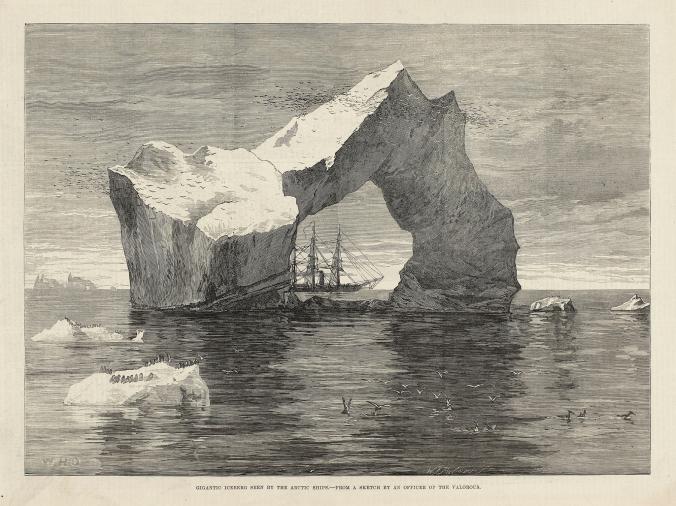
The men were dispatched by the Royal Navy to search for the lost Franklin Expedition. Franklin's two ships, carrying 129 men, had sailed from London in 1845.
Stromness, Orkney, was the last British port of call for Franklin's ships, the HMS Erebus and HMS Terror.
The ships called in to draw water from Login's Well, which can still be seen in Stromness' south end.
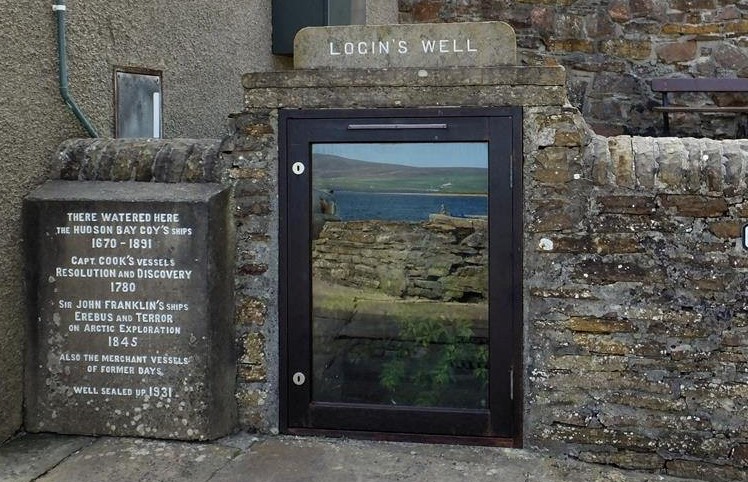
Franklin himself spent his last night on British soil in Stromness, entertained in the home of John Rae's sister, Marion, and her husband, Dr John Hamilton.
The ships had disappeared while searching for the Northwest Passage, thought to be a shortcut from Europe to Asia.
To find such a passage would greatly reduce sailing time and increase the wealth of traders.
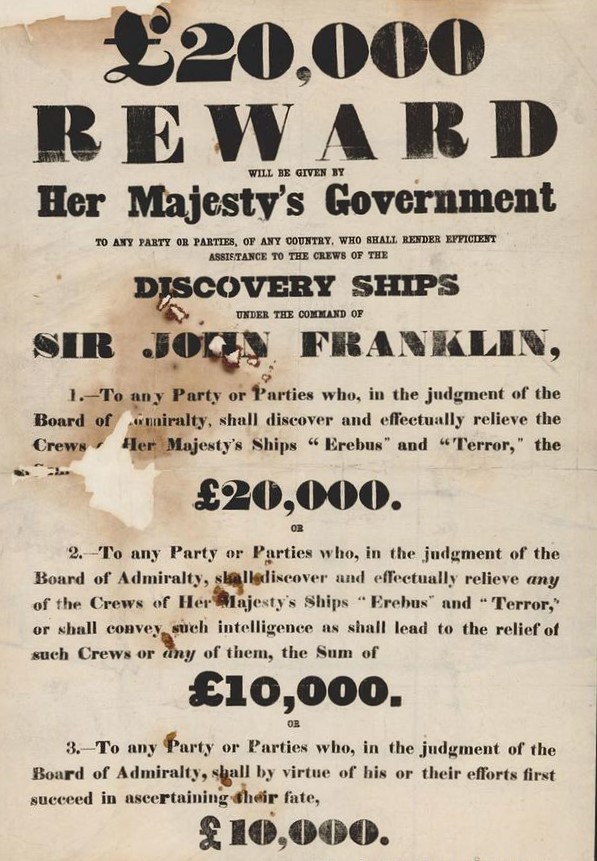
Disappointed at finding no sign of Franklin, Richardson returned to England the next year.
Rae continued, exploring the coastline to Wollaston Land by boat with six men, while continuing the quest for Franklin and his men.
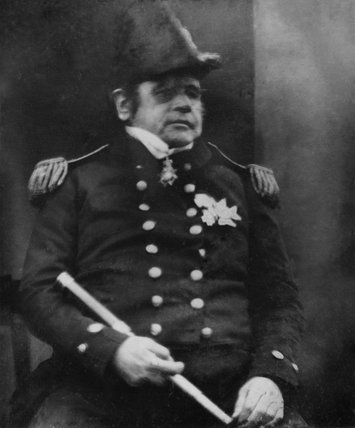
The first clue
In his third Arctic expedition in 1851, Rae discovered the first trace of Franklin’s missing ships.
He found a piece of wood and part of a flagstaff containing the remnants of silk cloth. The piece carried the unmistakable broad arrow mark, marking it as British government property.
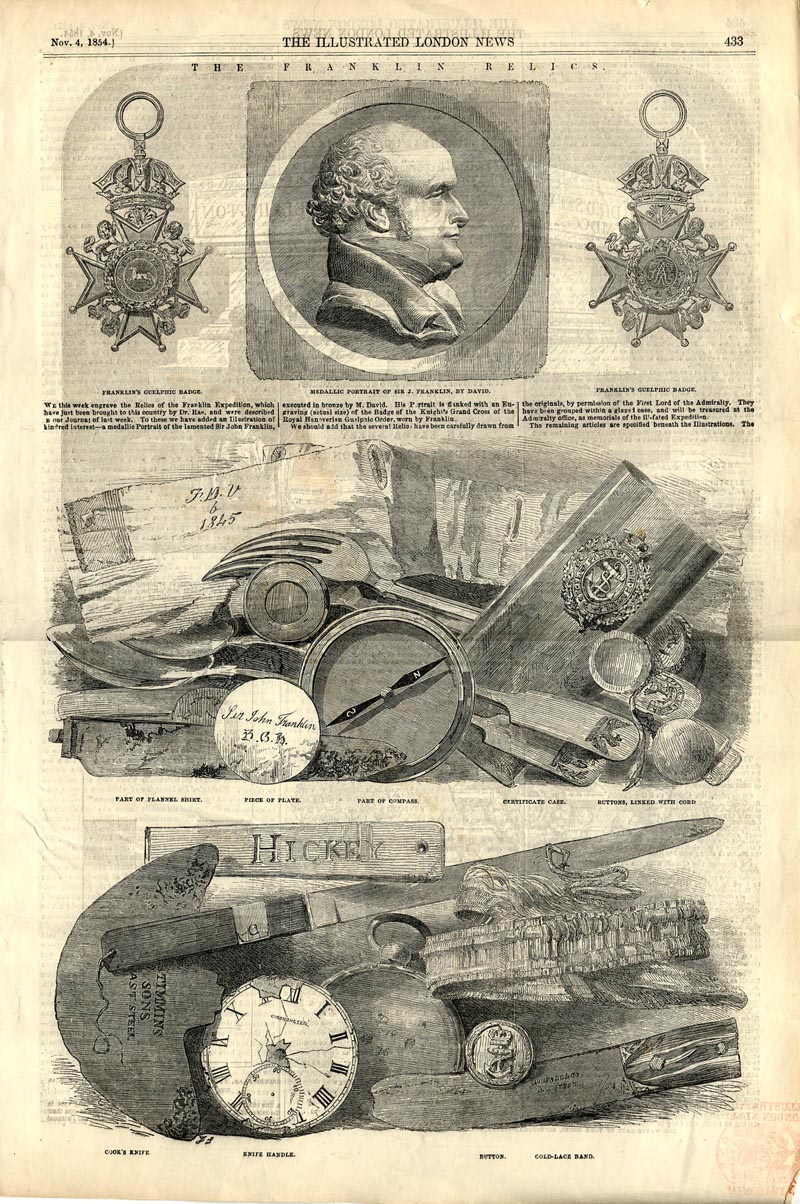
Rae was awarded the Founder’s Gold Medal of the Royal Geographical Society in 1852 for his findings of between 1846 and 1851.
The missing link
During his fourth Arctic expedition (1853-4), Rae made the important discovery that King William Land was not a peninsula but an island.
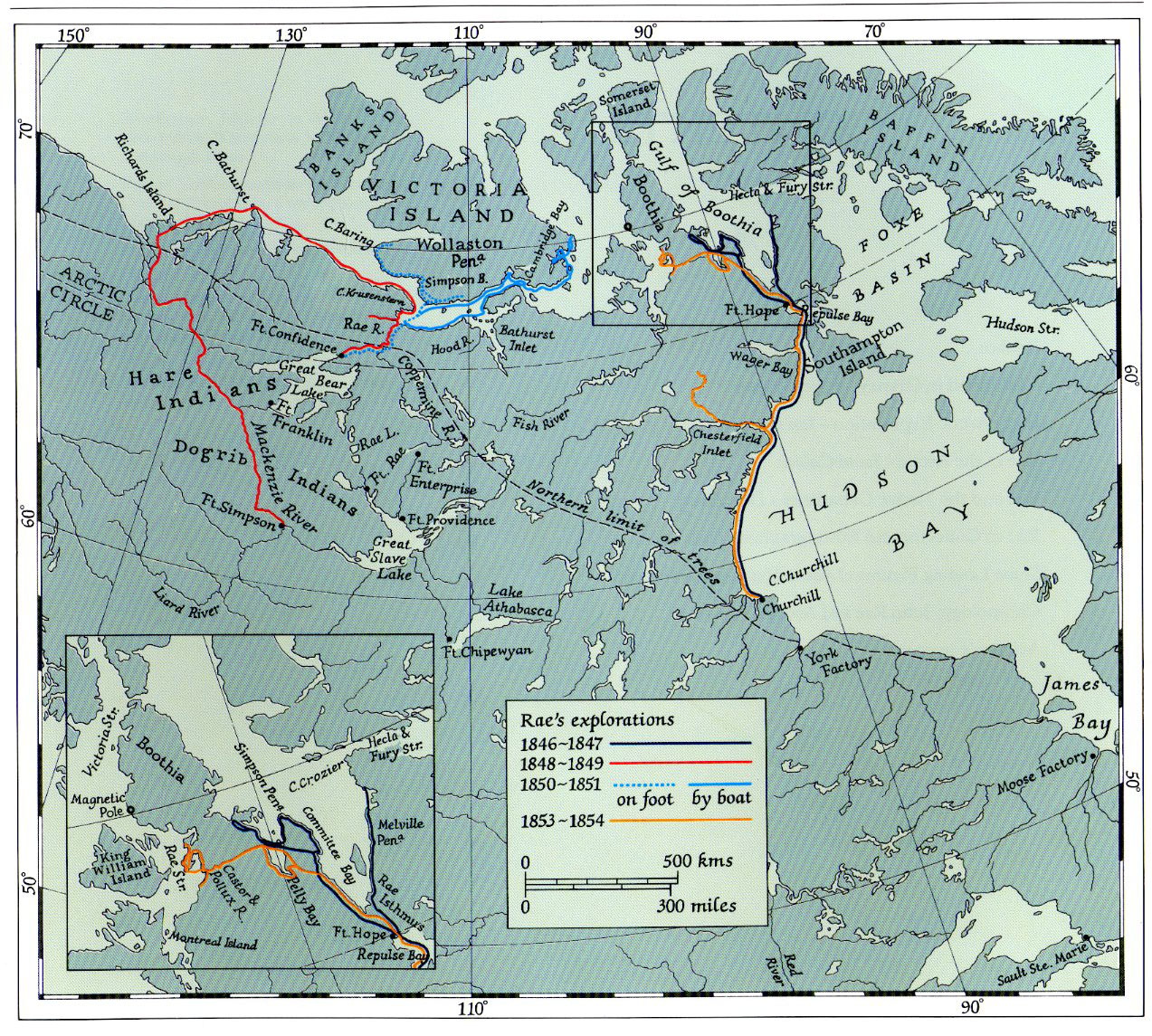
His discovery of Rae Strait, which was named for Rae and skirts King William Land, was the last link in the only navigable Northwest Passage that existed at the time.
Rae's passage was part of the network of open channels that eventually linked the Atlantic and Pacific Oceans.
The route he'd discovered was later successfully navigated by the Norwegian Roald Amundsen in 1903-06.
A dreadful discovery
Rae discovered disturbing evidence during this expedition as to the fate of Franklin and his men.
He met Inuit who told him that a party of around 40 white men had died of starvation on King William Island, resorting to cannibalism in a final desperate attempt to stay alive.
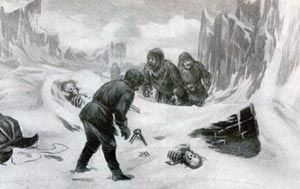
While Rae was prepared for dangerous arctic conditions, the inventory of the Erebus and Terror shows that the Royal Navy crew were not.
The ships carried many unnecessary items: a 1200-book library; a daguerreotype camera; silver cutlery and candlesticks; tinned food (rather than supplying their own food, as Rae and his men were able to do); even a player piano with rolls of music to provide civilised entertainment.
These unfortunate sailors were helpless when things began to go wrong. They had not been prepared for such an alien environment.
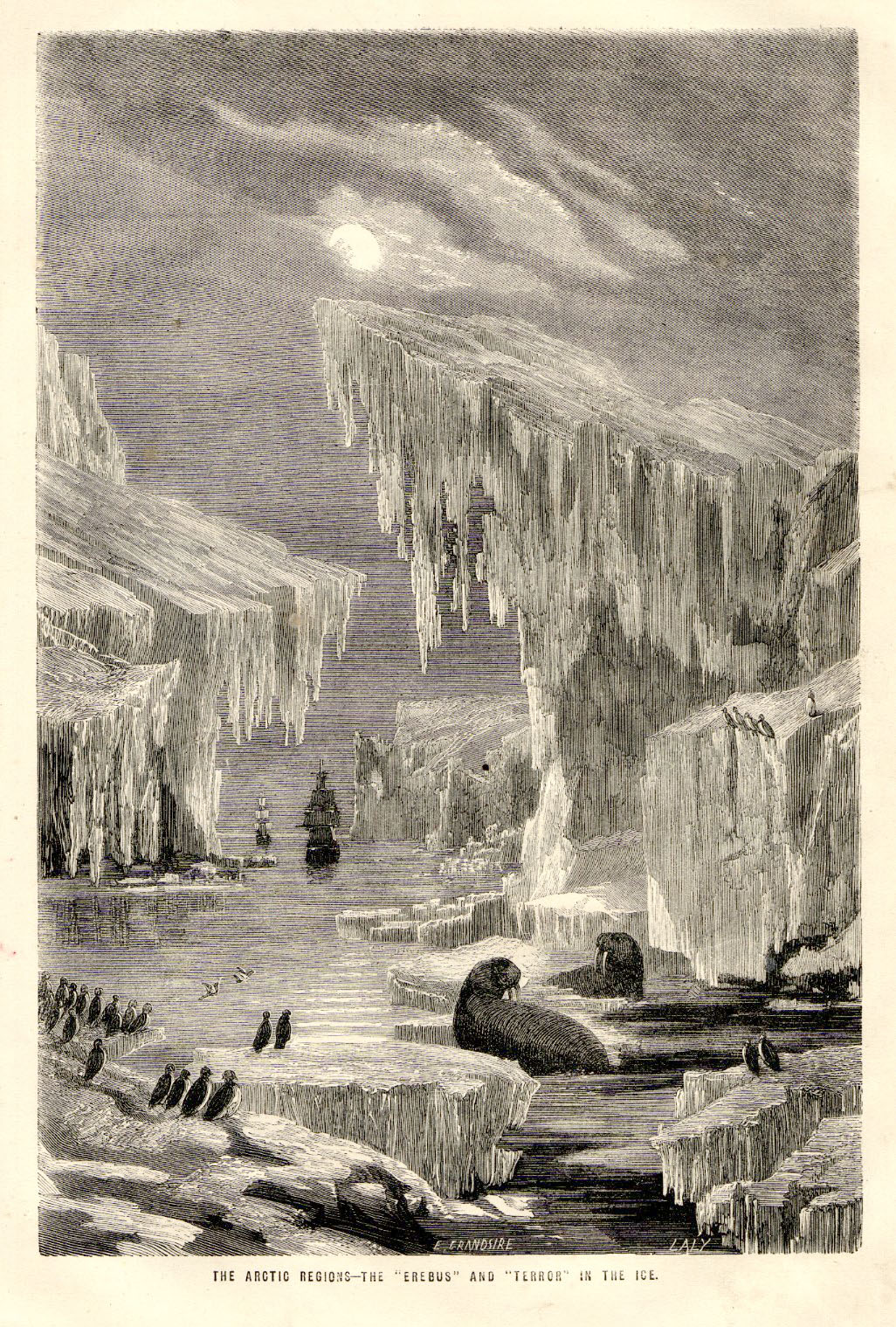
Unluckily for them, Franklin and his men faced an especially bad first winter. Their ships soon became hopelessly locked into the ice.
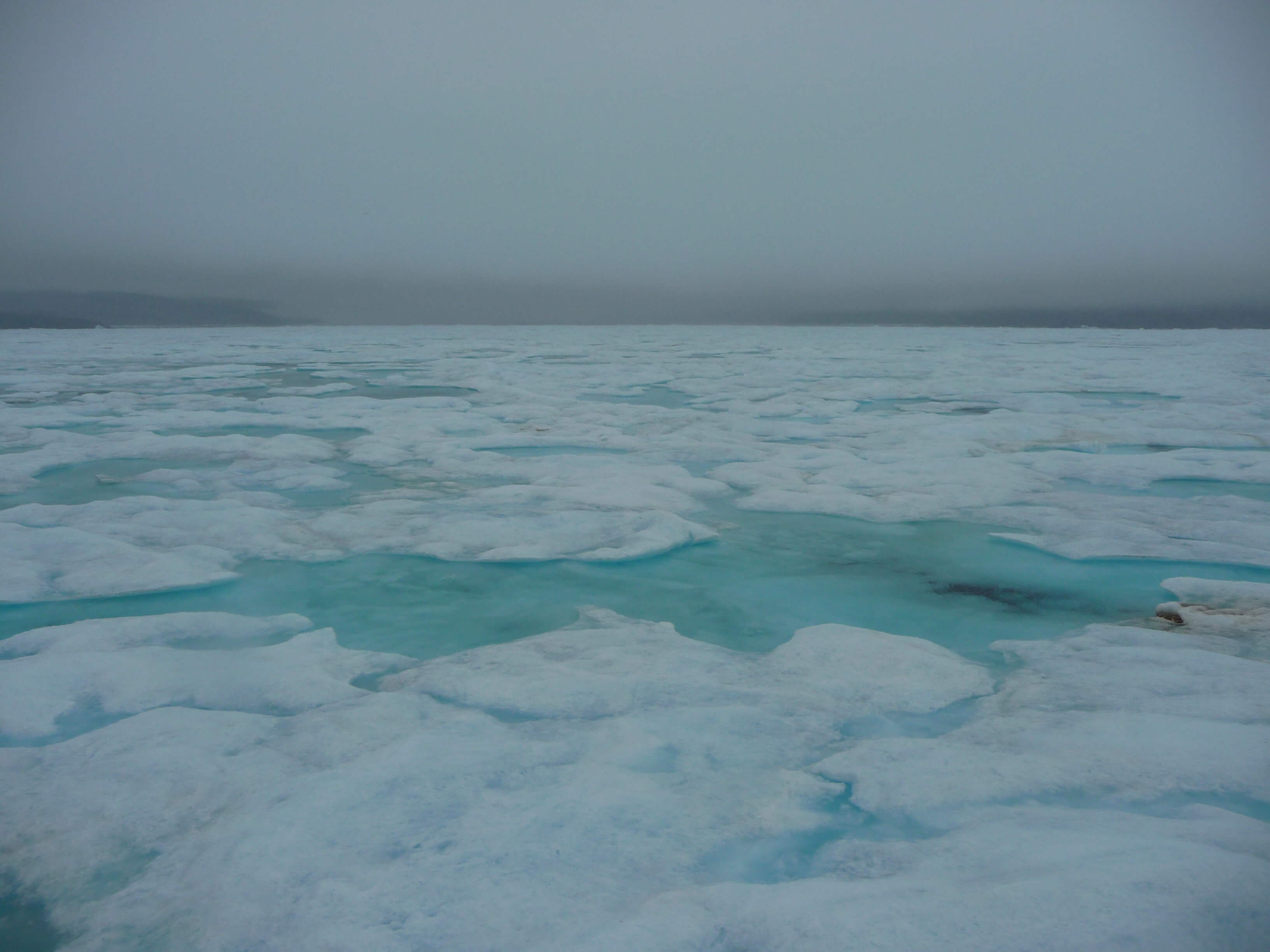
Rae knew that Inuit only traveled in extended family groups of 10-12 people - no more than the land could support.
Franklin's 129 men were trying to survive without adequate knowledge and in impossible conditions.
The starving, frozen men left a note in a cairn that they were going to try to find a river, which could lead them to a settlement.
With the last of their strength, the survivors dragged a small boat over the snow. For unknown reasons, the boat was loaded down with dead weight - things like cutlery, books, candlesticks and the dead Franklin's medals.
The boat had been turned around when it was found, as if the men had decided to head back to the ship. Skeletons were found nearby.
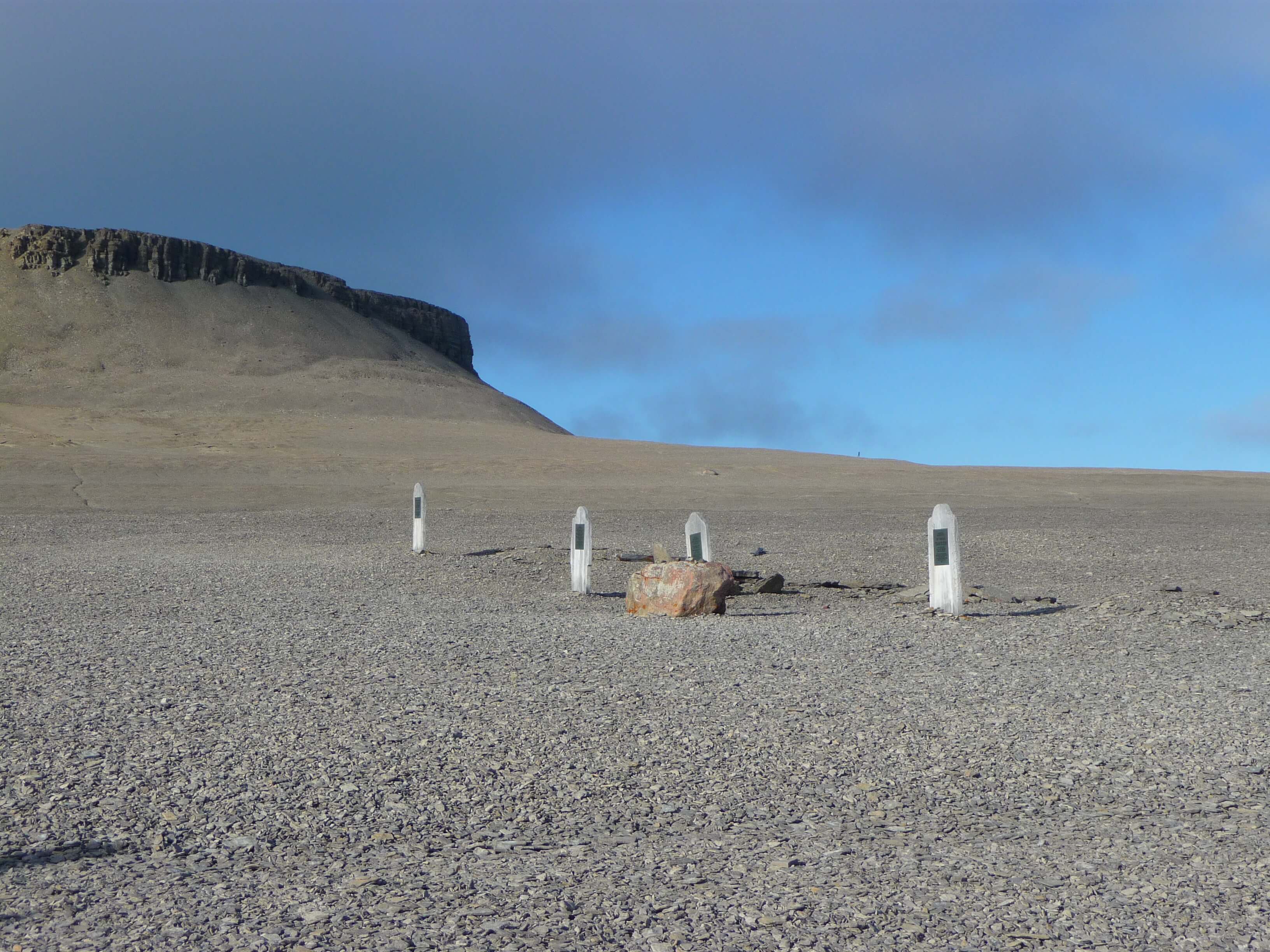
John Rae, scapegoat
Returning to London heavy with with the tidings of the fate of Sir John Franklin and his crew, Rae walked straight into a storm of controversy.
Lady Franklin had been aggressively harassing the Admiralty for years. She'd even moved across the street from their offices, to more conveniently bedevil them.
The Admiralty called Lady Franklin's house 'The Battery', because she kept firing at them from her house.
But the Admiralty had bigger problems by now. They had a war to fight by this time - the Crimean War. They wanted to get the lady off their backs.
In walked the hapless John Rae, clutching his report.
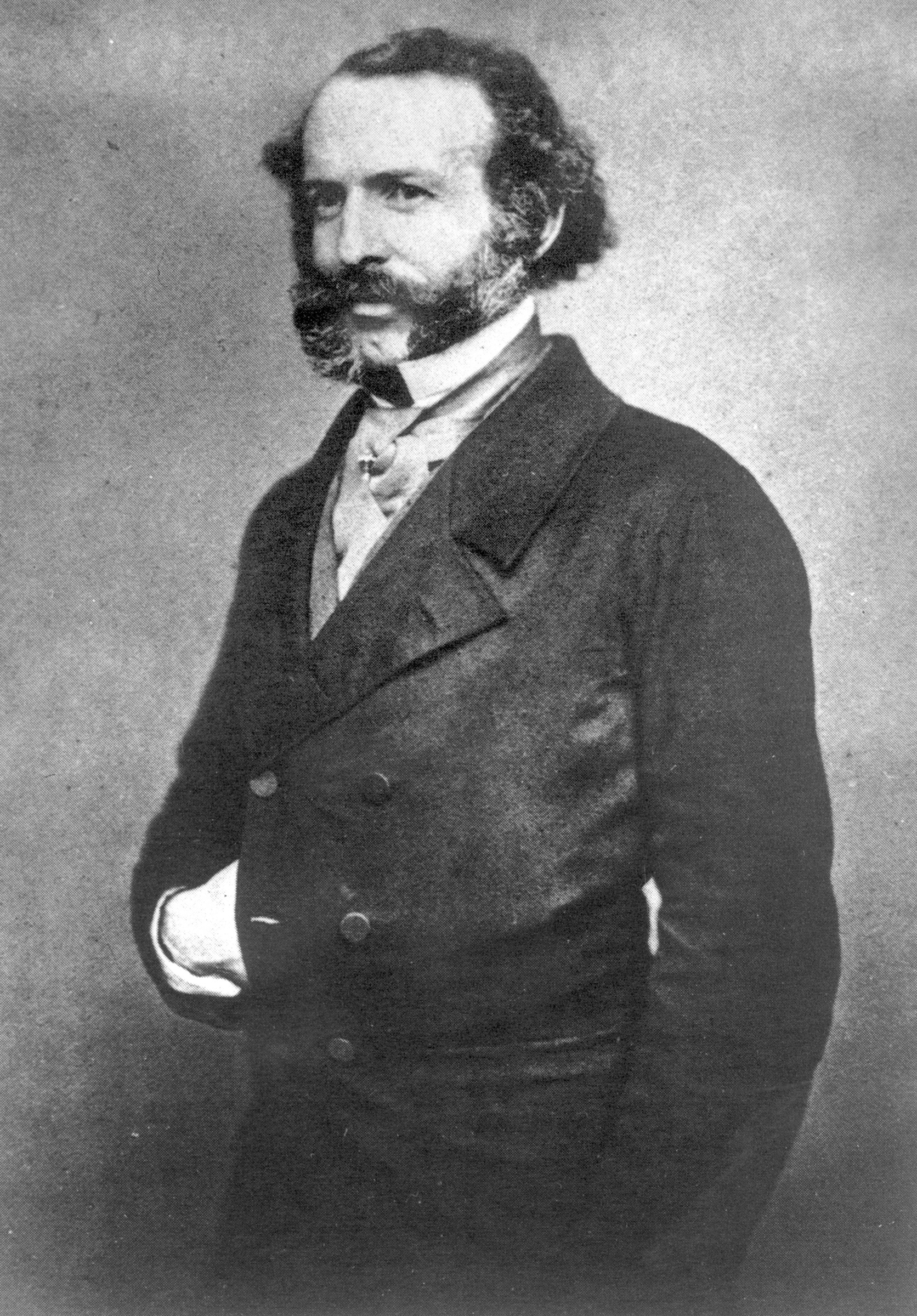
* Image courtesy of Orkney Library and Archive
Although Rae had prepared a sensitively-worded account of his findings to be released to the public, the Admiralty issued his unedited report to The Times.
This was the full account, containing the stories of cannibalism.
We don't know why the Admiralty chose to release the unedited version of the report. But it's certain that Rae never intended for the general public to hear the tragic details of the men's last days.
He wanted to spare the sailors' grieving families the knowledge of their suffering.
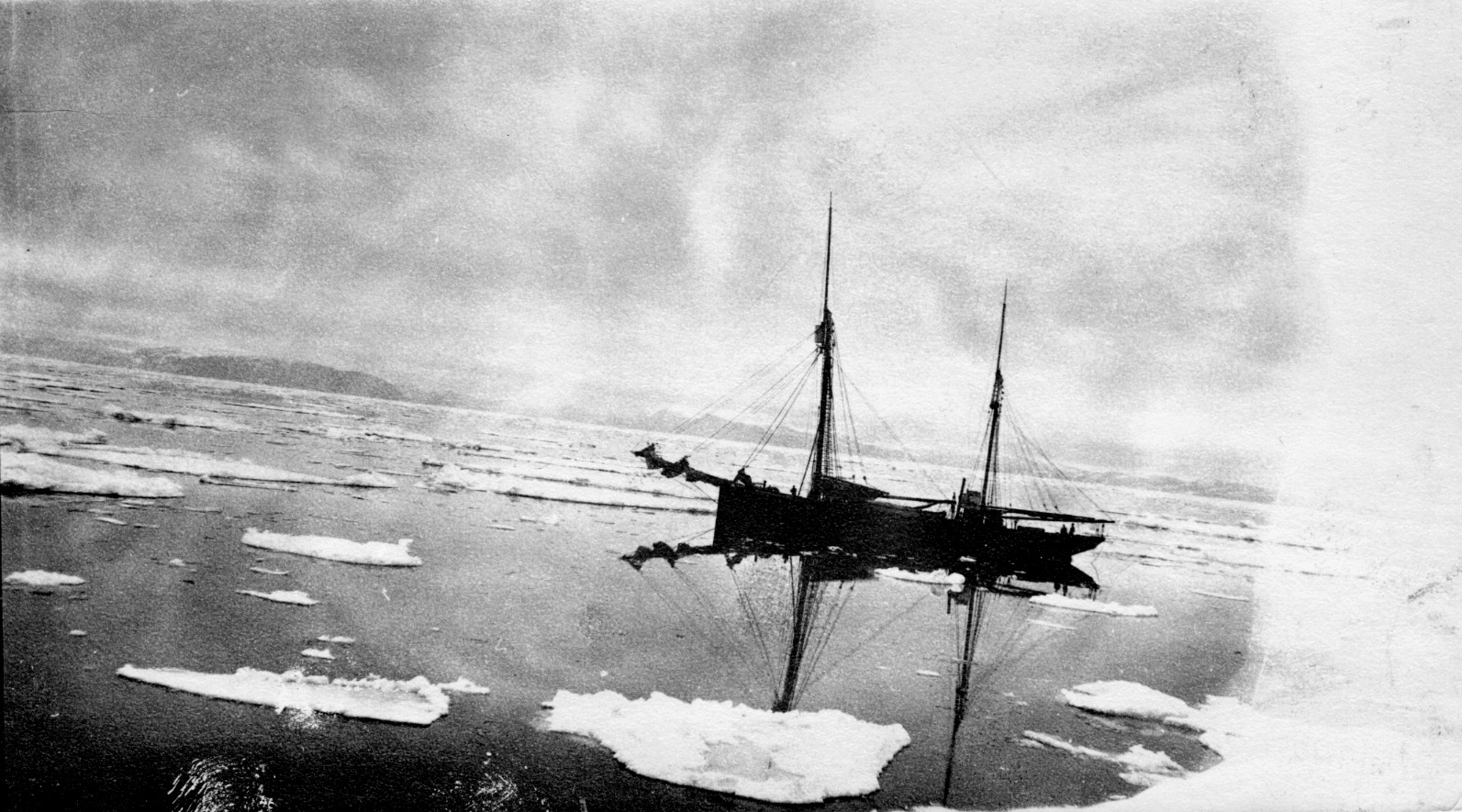
* Image courtesy of Orkney Library and Archive
It seems likely that Rae was simply caught in the crossfire between the formidable Lady Jane Franklin and the Admiralty.
Nevertheless, Rae's honest report was his undoing.
Hell hath no fury
Victorian high society wasn't known for its loving acceptance and understanding. Lady Franklin knew that her name pared with the ghastly rumors of cannibalism would mean the destruction of her insulated world.
Not one to quietly accept defeat, the outraged lady ferociously defended her husband's reputation ... along with her own privileged position.
She rallied support from Charles Dickens.
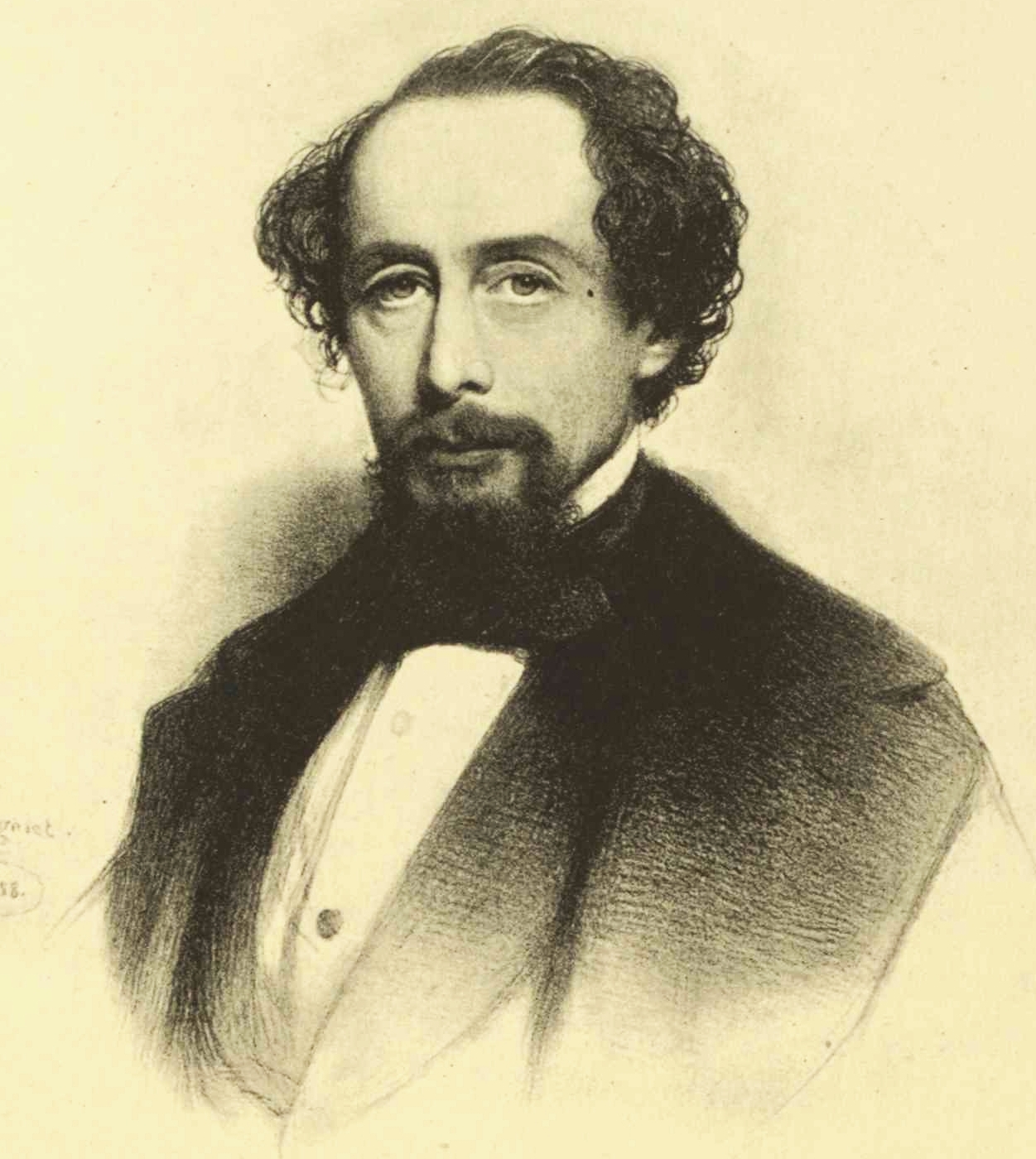
Yes, that Charles Dickens.
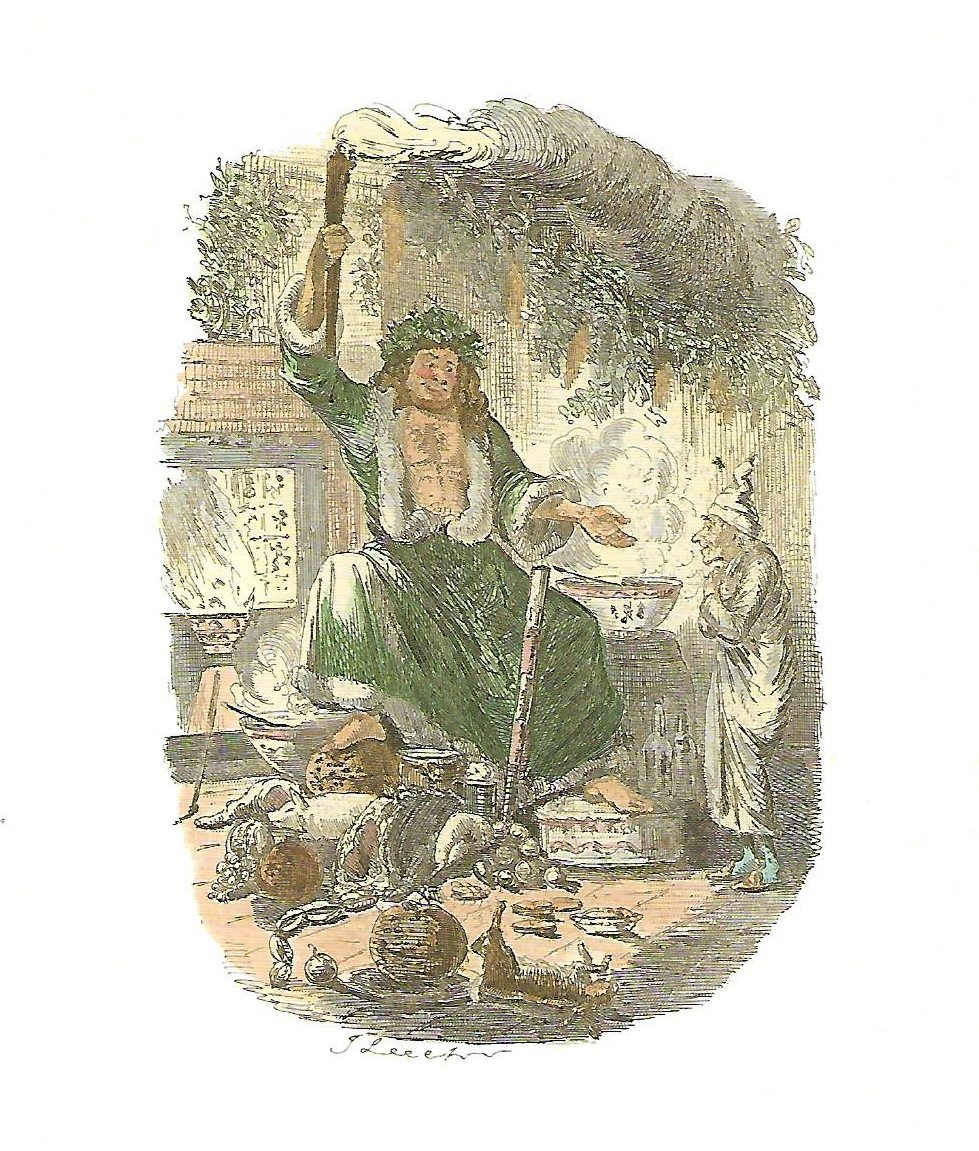
Pressured by the influential Lady Franklin, Dickens used his popular magazine, Household Words, to cast doubt on the Inuits' story and to denounce Rae.
John Rae was publicly attacked for daring to suggest the unthinkable - that Englishmen, of all people, would resort to cannibalism.
At the same time, the Inuit people were vilified as savages, liars and murderers.
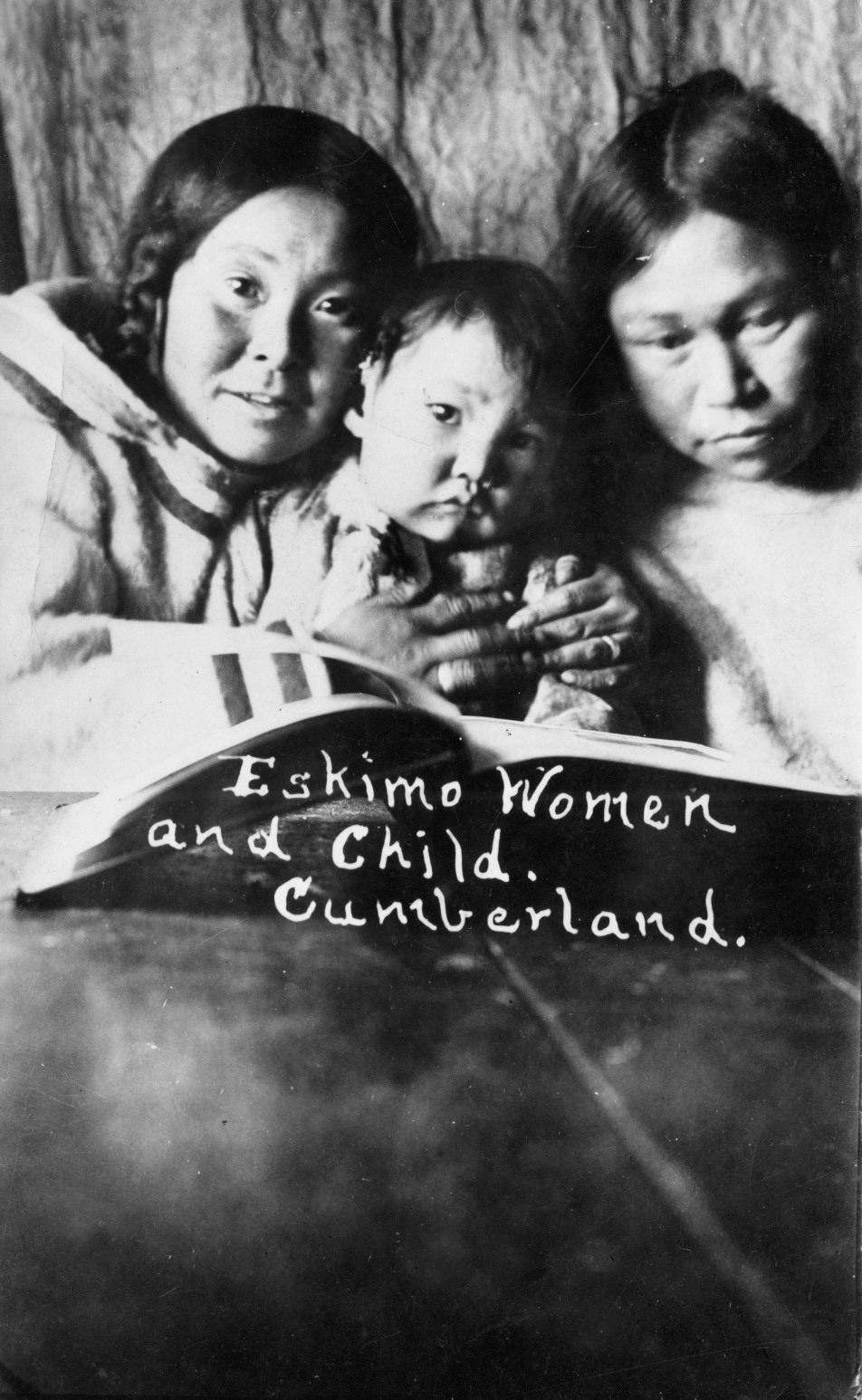
* Image courtesy of Orkney Library and Archive
The public bought it.
Having successfully destroyed John Rae's reputation, Lady Franklin cemented her victory by proclaiming her husband the discoverer of the Northwest Passage.
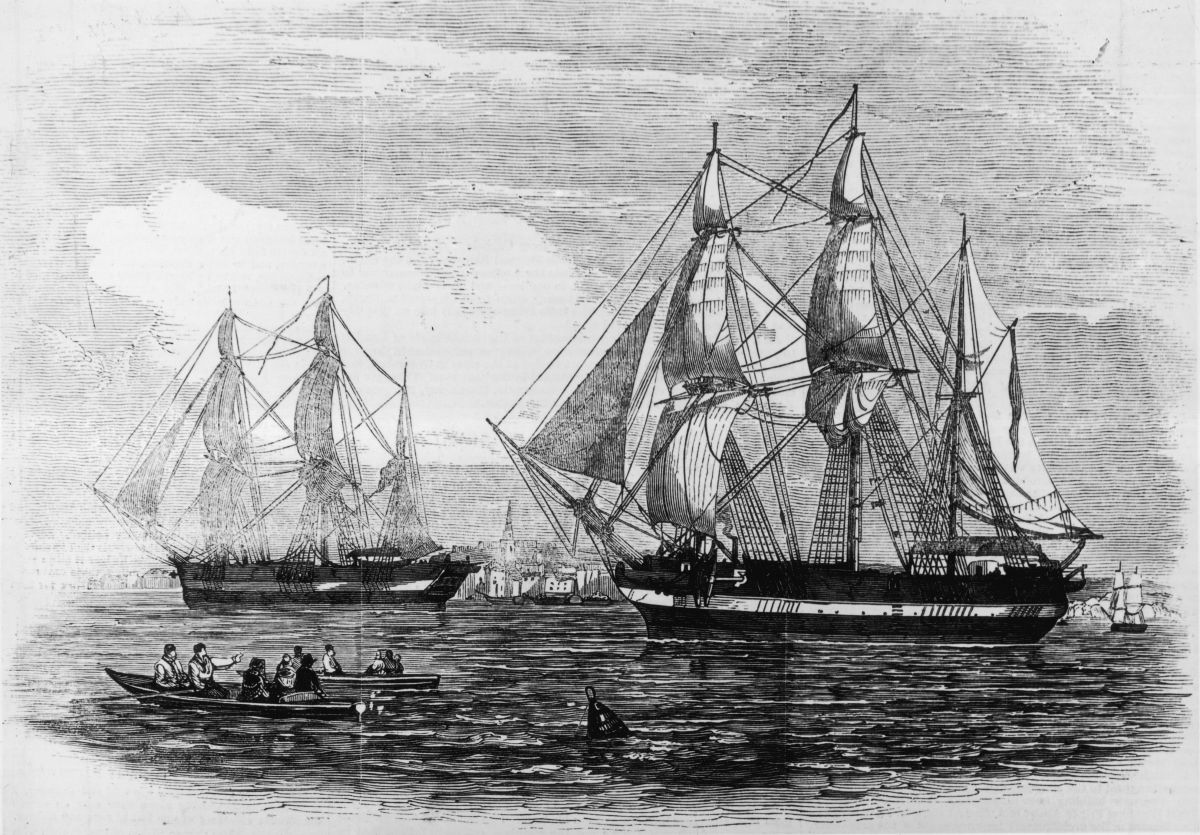
She had the lie written in stone, erecting a bust of Franklin in Westminster Abbey.
In fact, the unfortunate leader had died early in the ill-fated expedition, with all of his men to follow.
There was no triumphant return for the Erebus and the Terror. The expedition reported no new discoveries about the Northwest Passage.
The important information that was brought home from the Arctic was John Rae's discovery of Rae Straight - the last link that made the Northwest Passage navigable.
So why was Rae the only Arctic explorer who did not receive a knighthood?
Even today, many books of history fail to mention Rae and his considerable accomplishments.
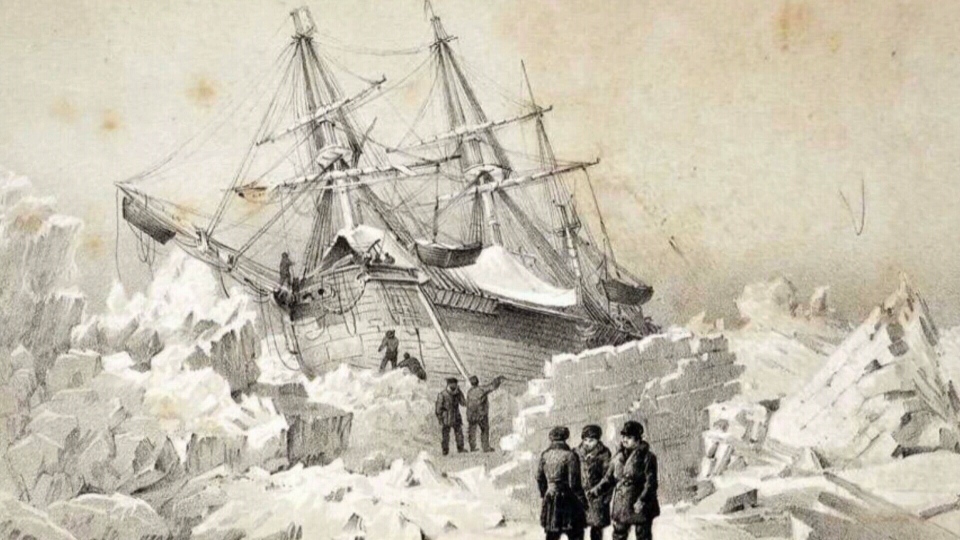
Listen to Radio Orkney's interviews of Edinburgh artist Barbara Rae CBE RA RSA and comedian/author Michael Palin, talking about Rae, Franklin and Arctic exploration. I review books from both of these luminaries in my suggested reading list at the bottom of the page.
No need to choose sides
Today, people sometimes erroneously suppose that it's Franklin-against-Rae, that to admire one of these men means having to despise the other.
But both men were admirable in different ways, and each no doubt admired the other's accomplishments.
If anyone had empathy for Franklin and his men, it was John Rae. He knew better than most the hardships of the Arctic and how quickly things could unravel, even with careful preparation.
Despite Lady Franklin’s persecution, Rae was eventually awarded the £10,000 reward offered for news of the fate of the Franklin expedition.
True to his nature, he shared the reward with his men.
A man both respected and loved
John Rae married Catherine (Kate) Thompson in 1860 when he was 47.
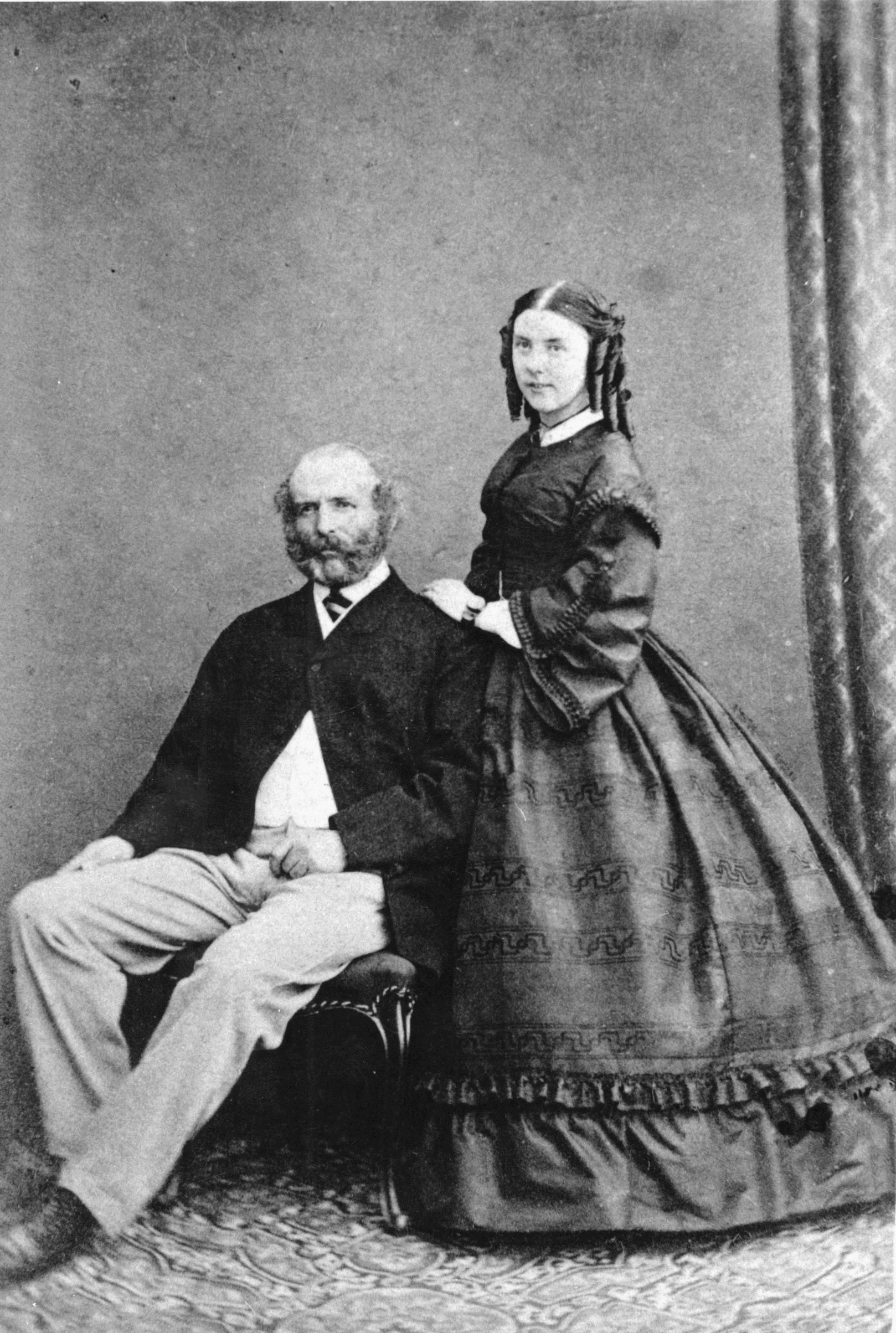
* Image courtesy of Orkney Library and Archive
He continued his rugged work, surveying the route for a telegraph link from Britain to Canada, via Iceland and Greenland. And in 1865 he surveyed the Red River to Victoria for another telegraph link from America to Russia.
Despite his difficulties, Rae was highly respected among his peers. When his career ended, he’d mapped 1,755 miles of Arctic coast either on foot or in small boats.
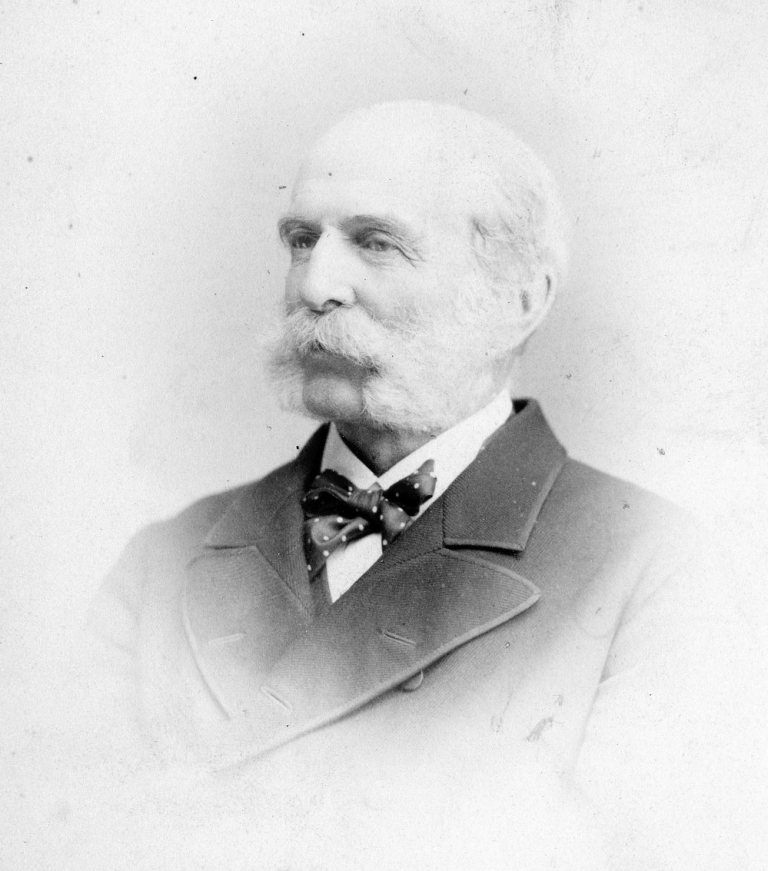
* Image courtesy of Orkney Library and Archive
His respect for the indigenous peoples of Canada made him many friends.
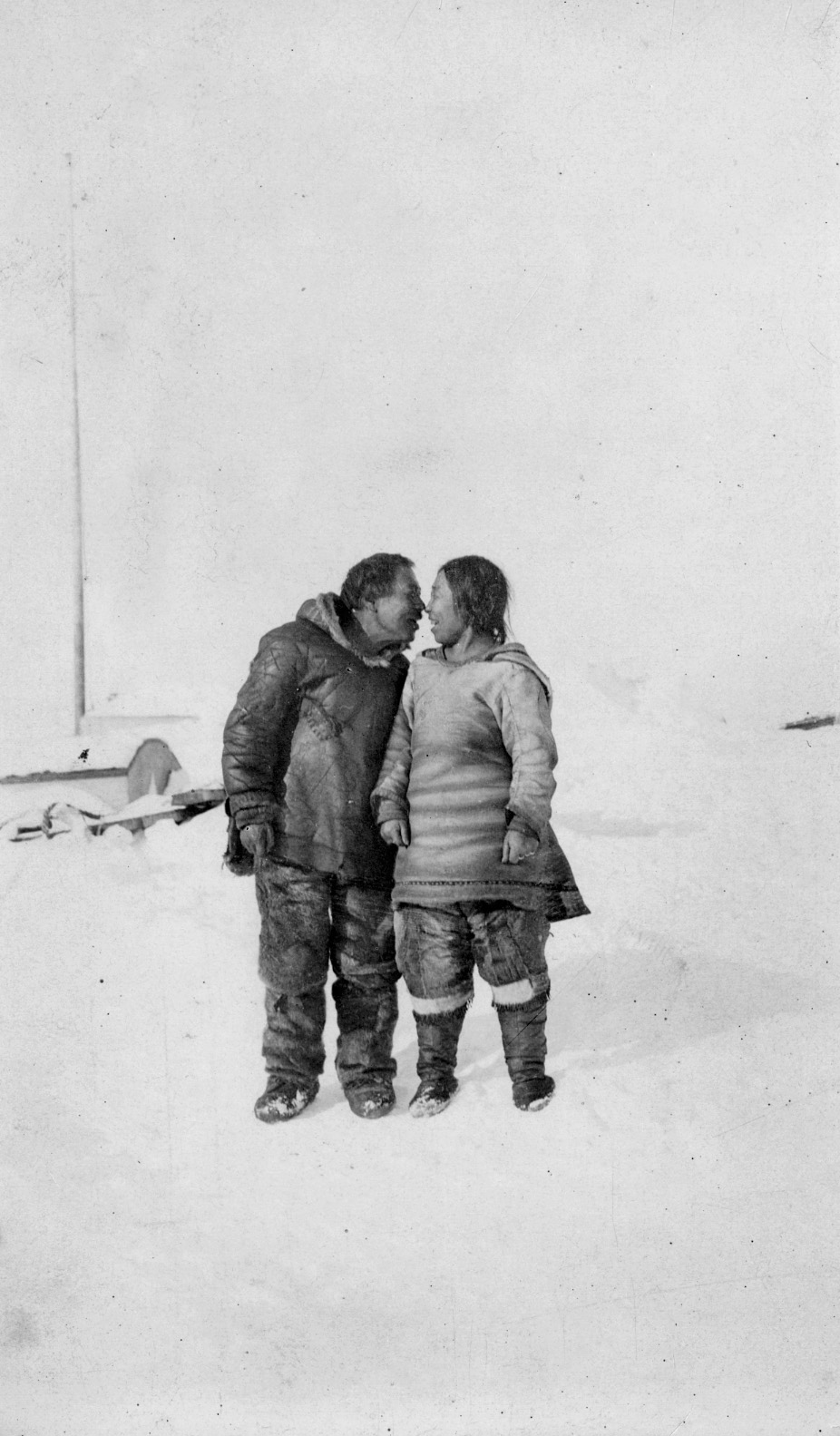
* Image courtesy of Orkney Library and Archive
Their descendants respect John Rae to this day.
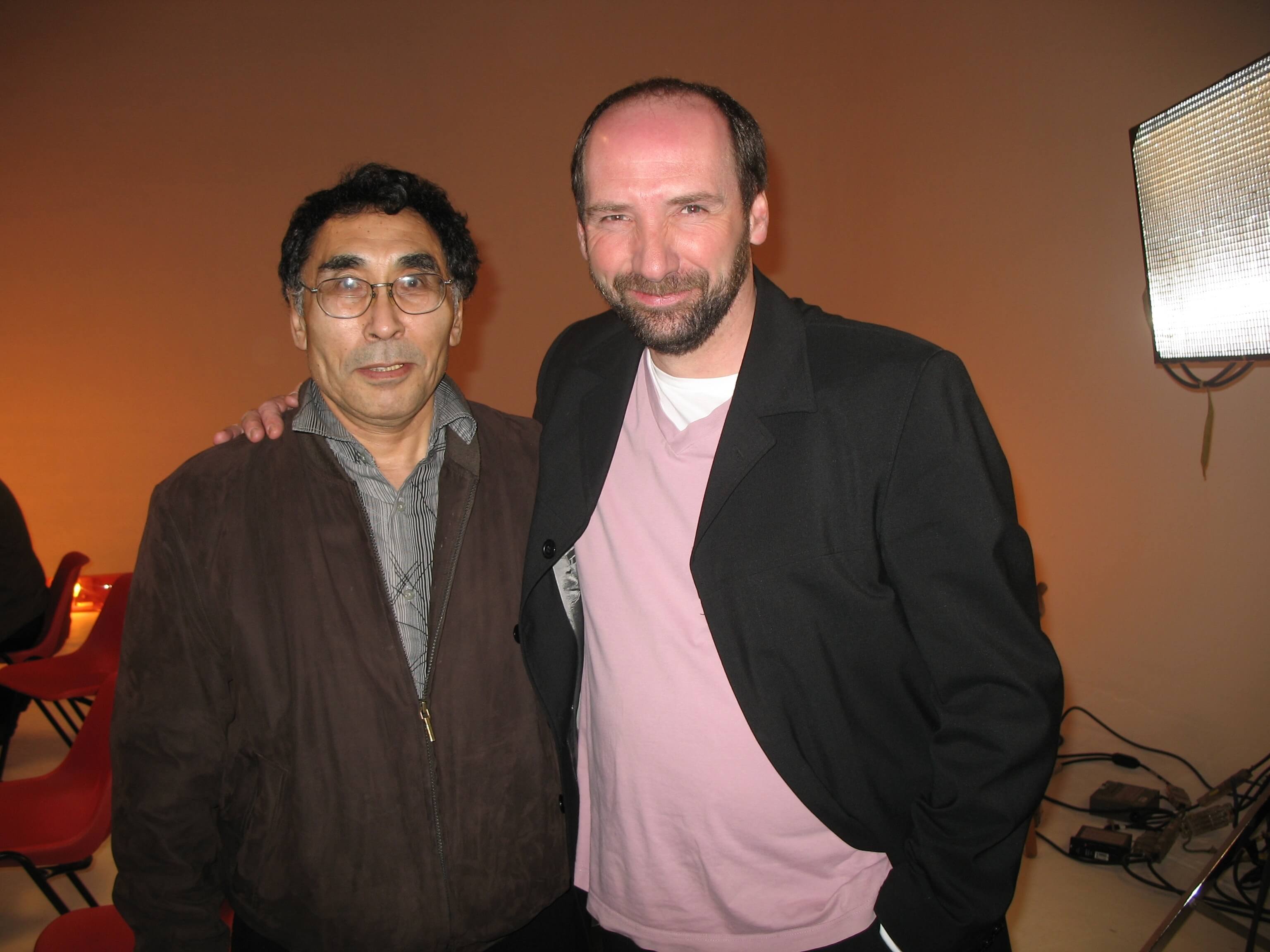 Healing old wounds - Tagak Curley, Inuit statesman, with Gerald Dickens, great-great grandson of Charles Dickens
Healing old wounds - Tagak Curley, Inuit statesman, with Gerald Dickens, great-great grandson of Charles Dickens
Erasing John Rae
Lady Franklin’s relentless campaign to have Rae removed from the history of Arctic exploration meant that many of his discoveries were attributed to Royal Navy expeditions - an injustice that he robustly fought.
Unfortunately, she was partially successful. Until the recent tide of interest, most people knew nothing about the man and his great achievements.
Many still don't.
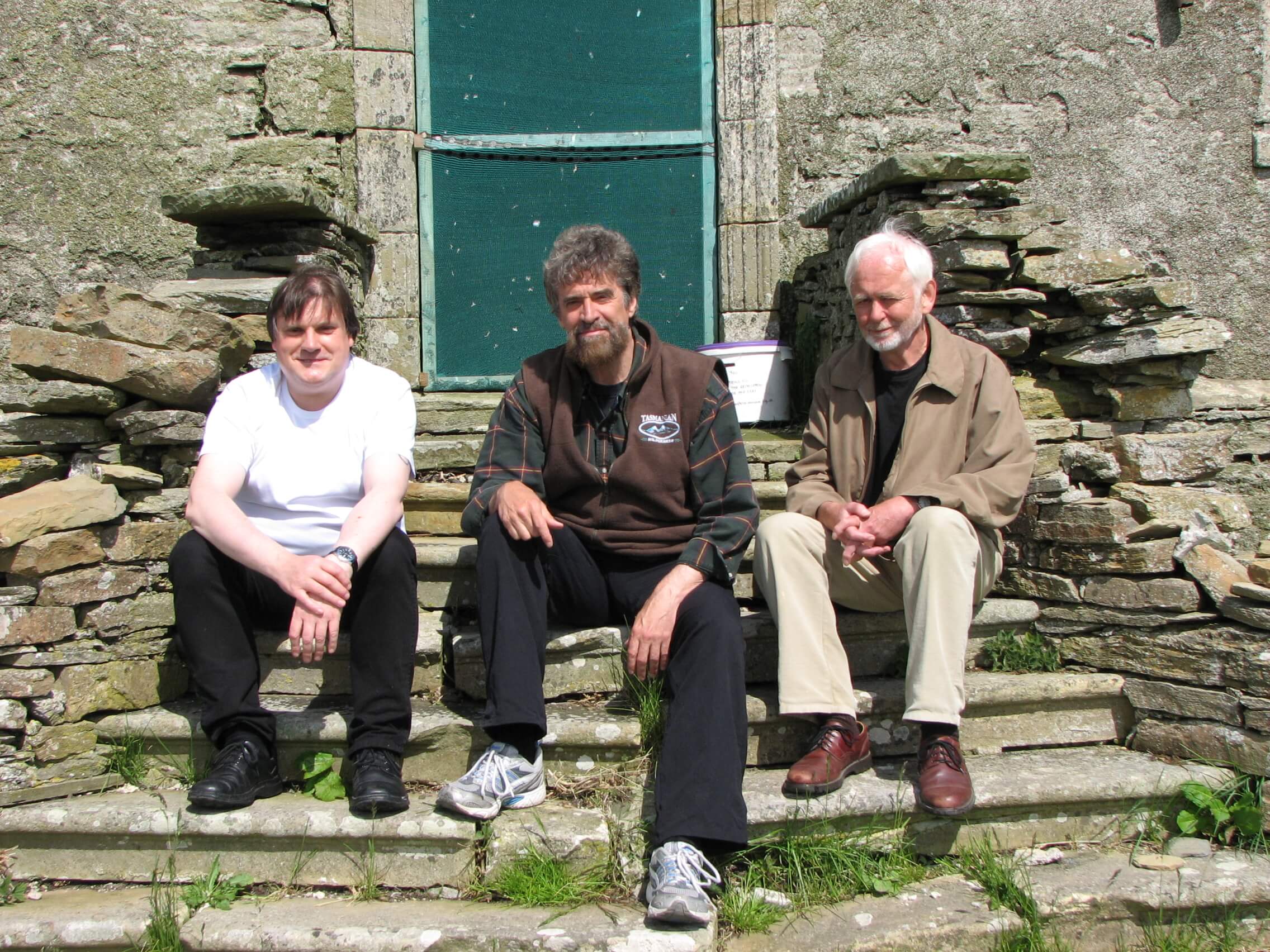 Authors Tom Muir, Ken McGoogan and Bryce Wilson - longtime champions of John Rae and very good friends, at the Hall of Clestrain
Authors Tom Muir, Ken McGoogan and Bryce Wilson - longtime champions of John Rae and very good friends, at the Hall of ClestrainRae eventually retired to Orkney, renting Berstane House to the east of Kirkwall, but later moving to London.
He died in his house at 4 Addison Gardens, London, on 22nd July 1893.
His wife, Kate, had his body brought home to Orkney for burial in the grounds of St Magnus Cathedral.
Note from Rhonda:
At a recent fundraising event to aid in the restoration of the Hall of Clestrain, a local woman was kind enough to read an old family letter.
The letter had been written by Kate Rae on the day of her husband's funeral in Kirkwall and was addressed to one of the men who had served as pall bearer - the reader's ancestor.
The tone of the letter was so loving and warm when Kate spoke of her "dear husband" that I couldn't help but feel pleased. It's comforting to think that this man who was so badly used in his professional life was at least happy in his marriage.
Voluntary public subscription paid to have a memorial erected to John Rae inside the cathedral the following year.
Traces of Rae in Orkney ...
John Rae and the Stromness Museum
You can see many artefacts relating to Dr John Rae in Stromness Museum. I'm sure Rae would approve, since he was a member of the museum.
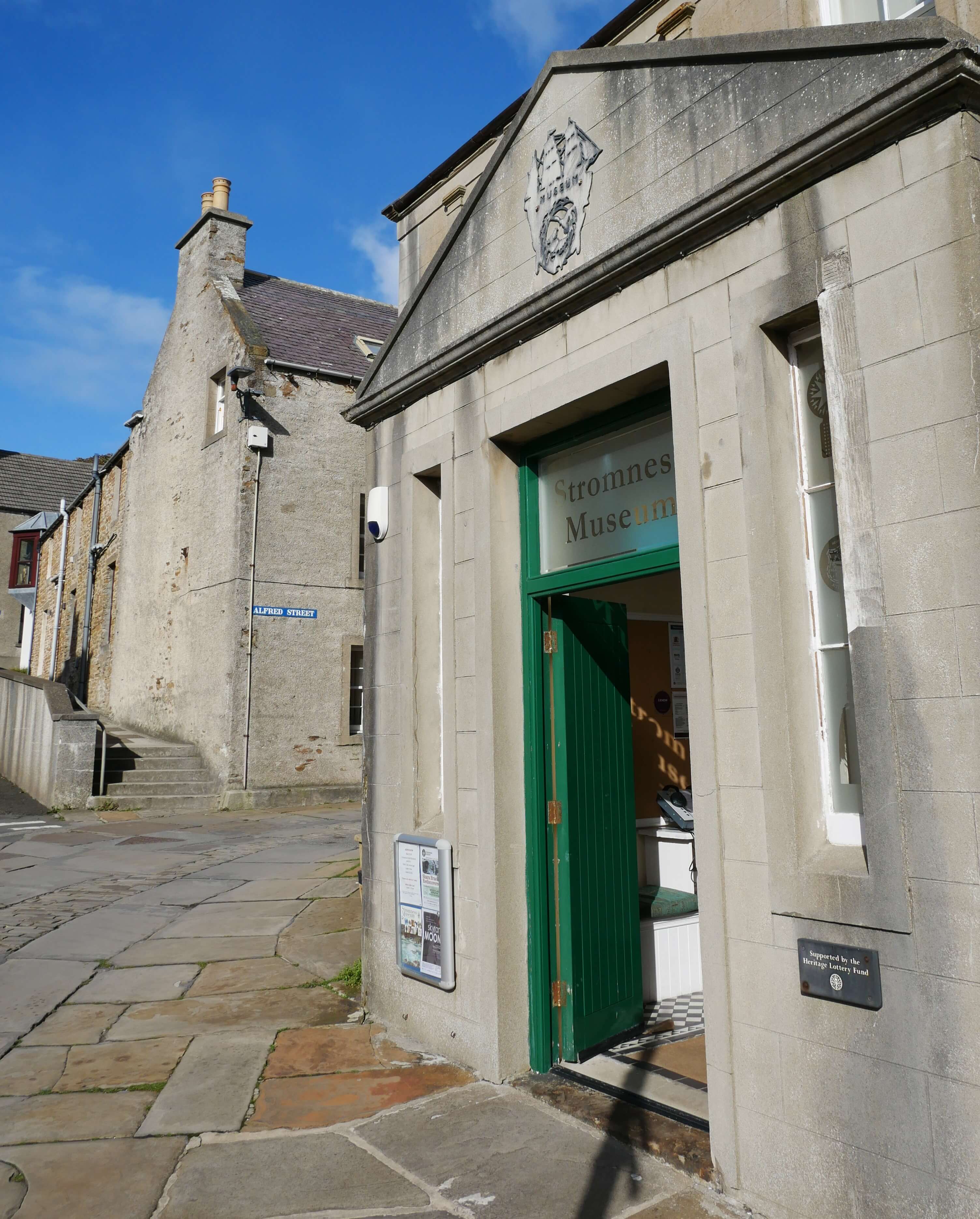
Kate Rae donated his octant and shotgun, along with a portrait of Rae. A beautiful pair of his snow shoes are a more recent loan to the museum.
He made them himself.
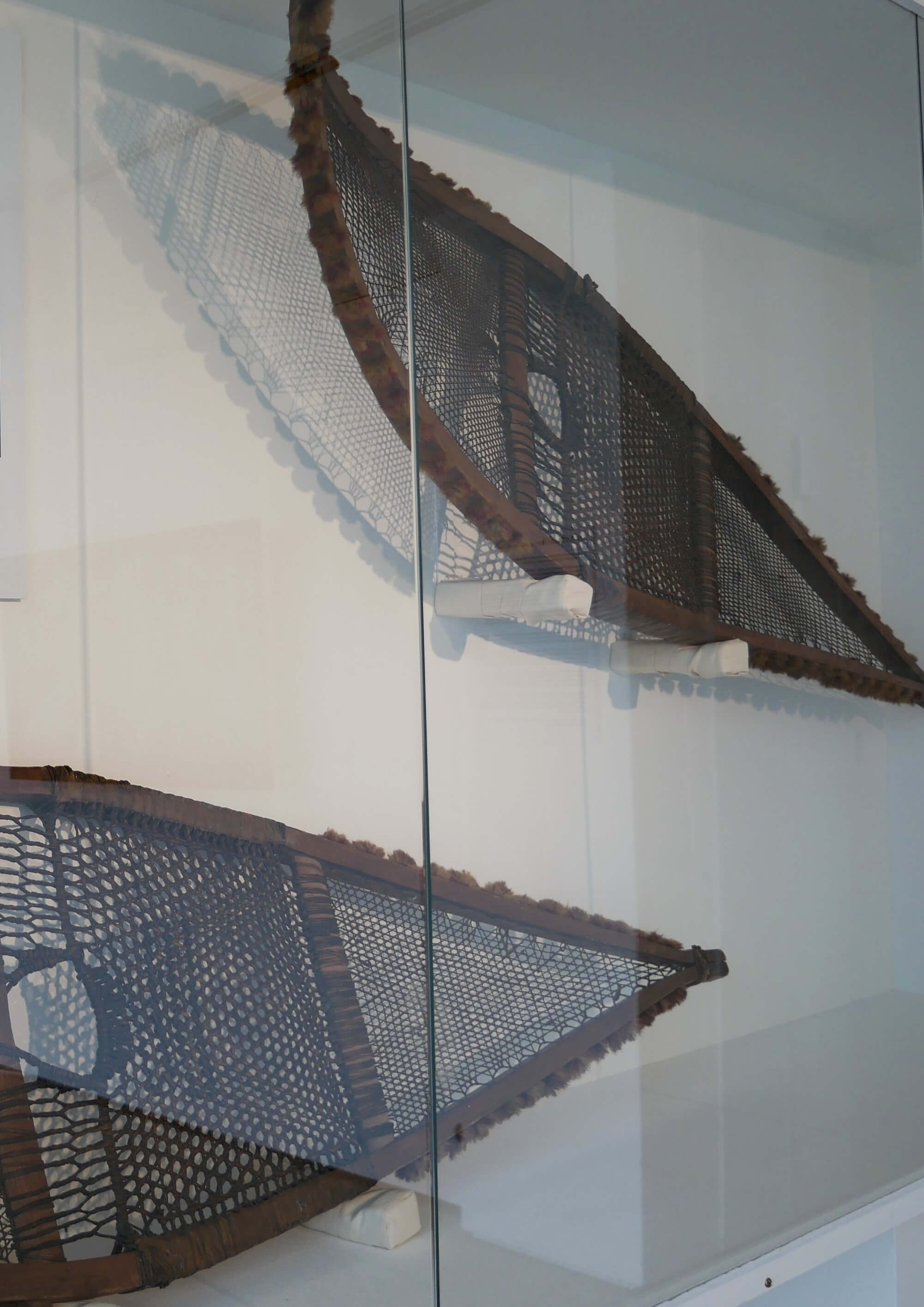
You can also see a very rare example of a Halkett Cloth Boat, which was issued to Rae for an expedition but never used.
He left it with his friend Samuel Baikie, who kept the boat at his wood yard.
While Rae used indigenous methods of survival, he was not averse to using cutting-edge technology, which the Halkett boat was at the time.
Coated with rubber to make it airtight, it was inflated with a pair of bellows. Unfortunately, the bellows have been lost.
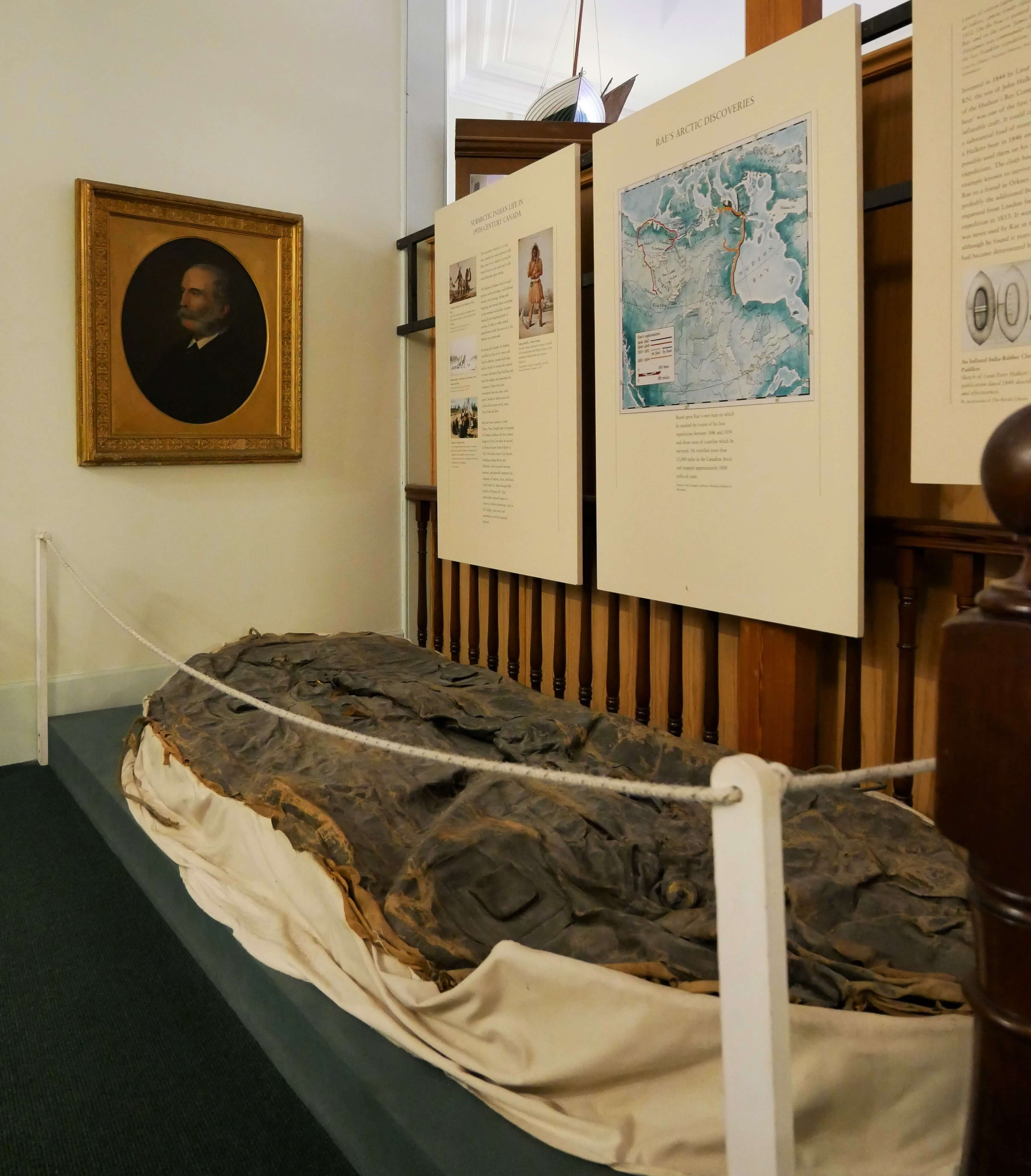
You can also see a large diorama of Rae paddling his Halkett Cloth Boat.
The diorama was originally created for the National Museums Scotland 1993 exhibition about Rae: ‘No Ordinary Journey’.
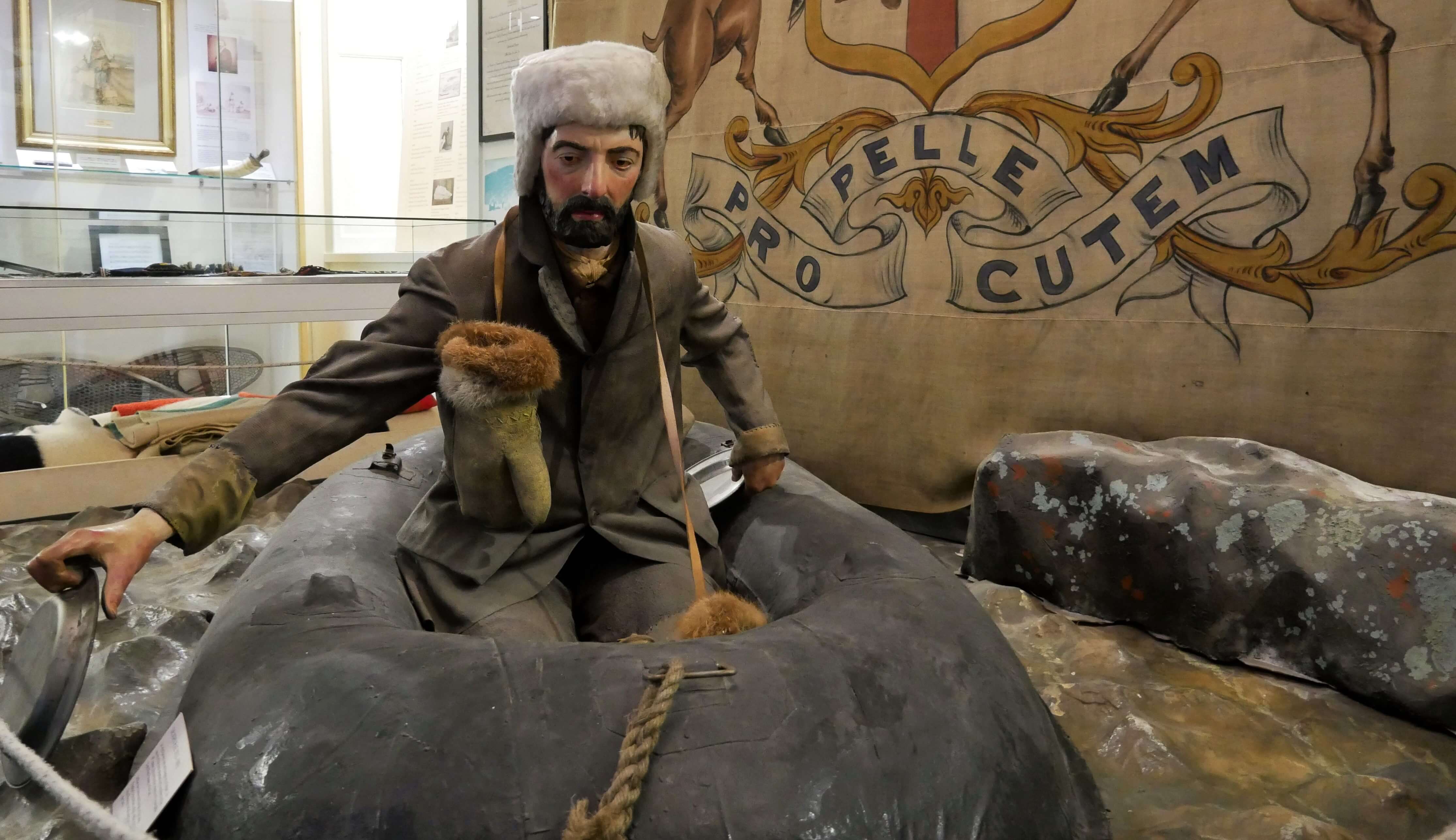
This exhibition was also shown in Kirkwall at Tankerness House Museum, now called the Orkney Museum.
I was working there at the time, and remember that the wood and fibreglass base was so large that we couldn’t get it through the door and up the stairs to the exhibition room. It had to be cut in two.
The diorama was later donated to Stromness Museum.
Among thousands of unique items, the Stromness Museum has artefacts from the Franklin expedition: Sir John Franklin's Artic medal, a quid of tobacco and a powder horn.
Also on display are pieces from the Hudson's Bay Company and Inuit and First Nations people.
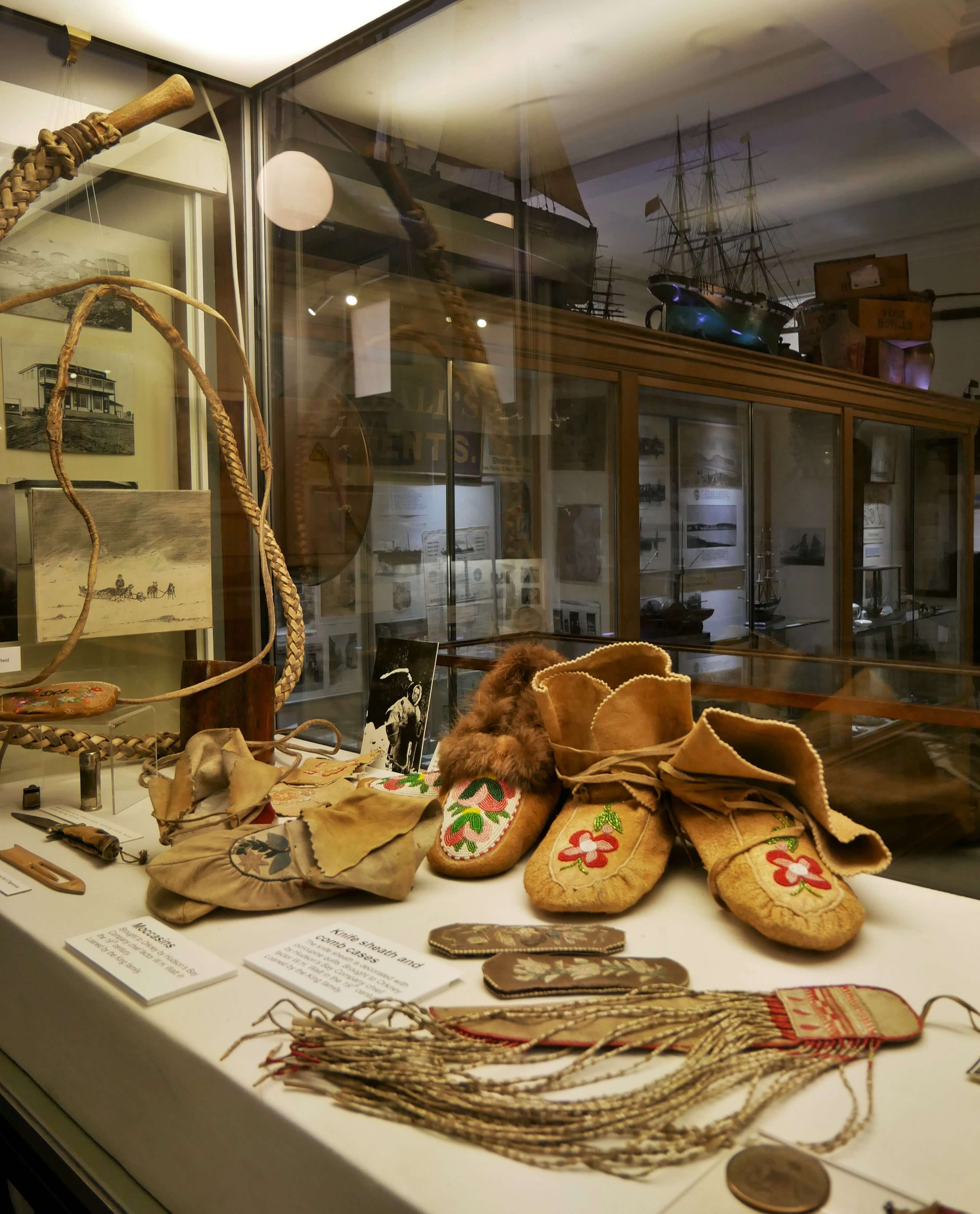
The Stromness Museum is one of Orkney's treasures. A small fee gives you seven days of happy explorations.
Open April 1 - October 31, daily from 10am - 5pm
and
November - December; February - March
11am - 3.30 pm, Mon-Sat
The Hall of Clestrain
The birthplace of Dr John Rae is in a ruinous state. Its roof was blown away during the 1952 hurricane. A corrugated asbestos sheet roof was erected to save the walls from crumbling, but the house was abandoned.
Orcadians being very practical people, the lower level was later converted for use as a pigsty.
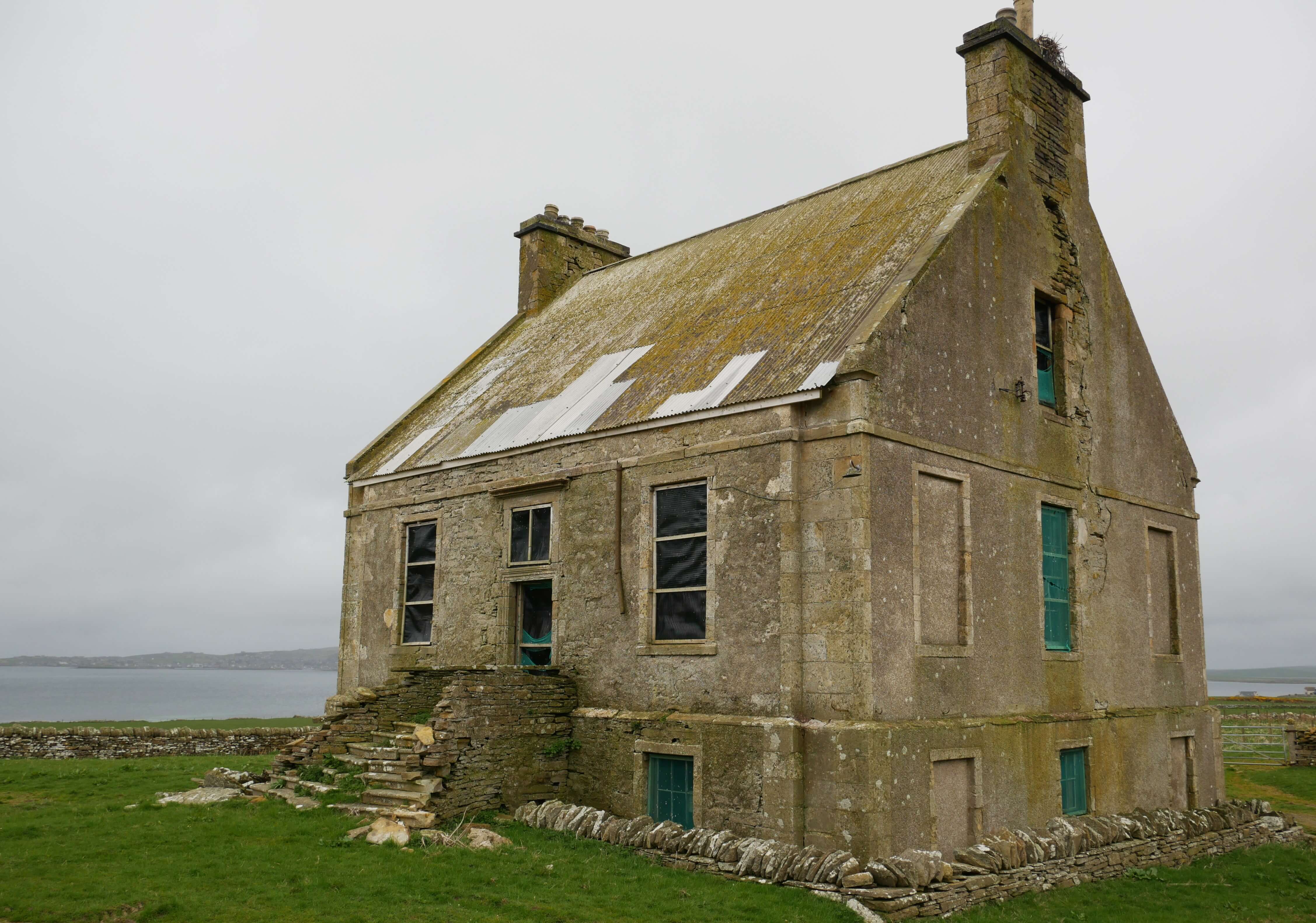
The house was built for Patrick Honeyman, who owned the second largest estate in Orkney. He had admired the grand houses that were springing up in the ‘New Town’ in Edinburgh and he wanted a slice of that for himself.
He built the Hall of Clestrain in 1769 to replace the old Ha’ (Hall) down by the shore.
The house originally had a shallow pediment above the front door. Legend has it that local folk warned that this sort of roof would not withstand an Orkney gale.
They were right.
Sir William Honeyman appointed Lanarkshire man John Rae - our explorer’s father - to be the factor (overseer) for his Orkney estate.
The elder John Rae was allowed to live in the Hall of Clestrain with his wife and large family.
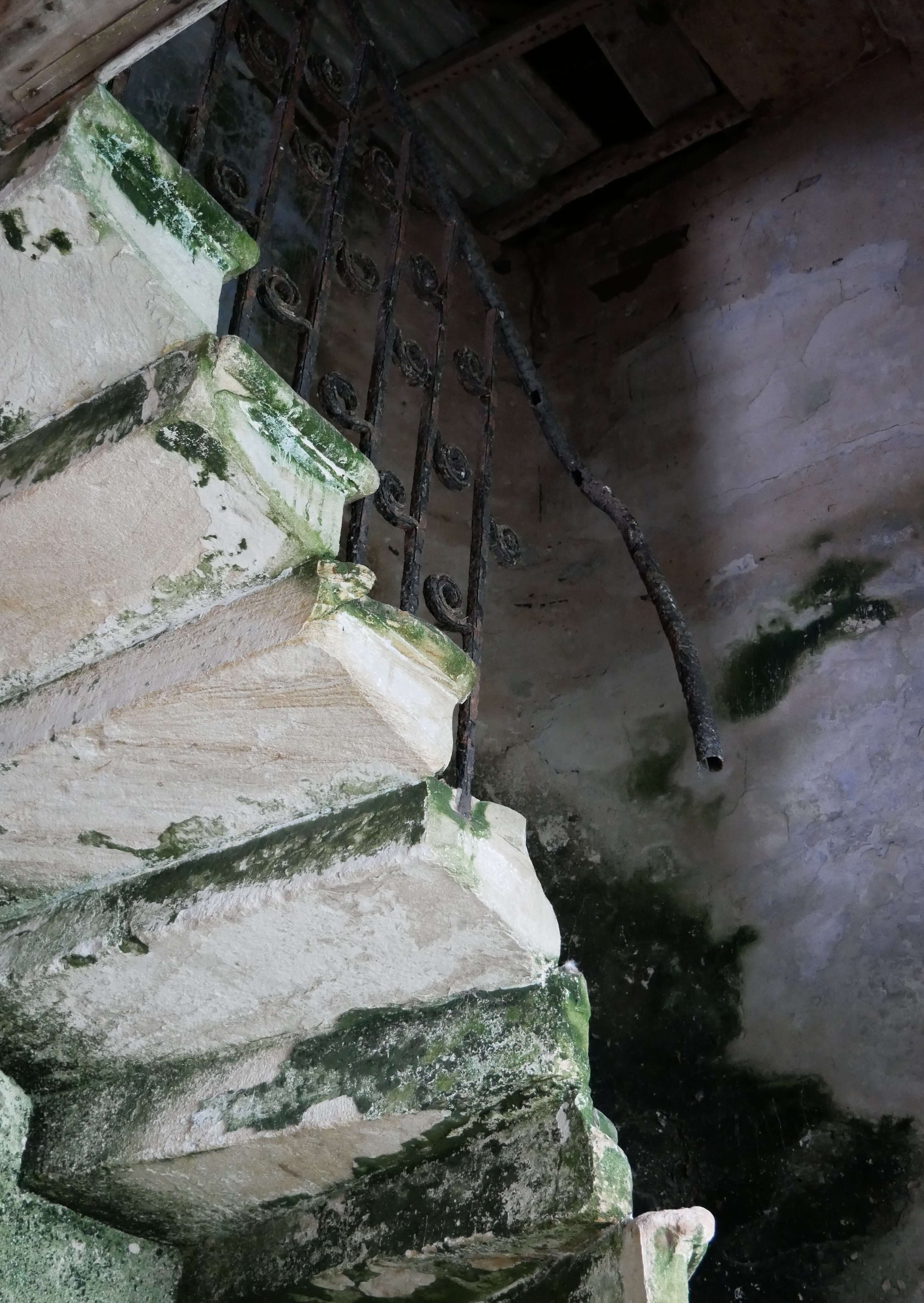
Patrick's estate passed to his son, Sir William, Lord Armadale, an Edinburgh Law Lord who lived in a fine mansion in Lanarkshire.
Sir William bought the Sutherland estate from his maternal grandfather. This included Armadale, from which he took his title.
He was one of the first to clear the crofters from Sutherland, turning Armadale over to sheep before selling the land to the 1st Duke of Sutherland, who continued the clearances.
Read more about the violent cruelty perpetrated on poor Scottish crofters in our friend Gareth Wardell's blog, Grouse Beater - 'Scotland's most popular under-the-radar political website.'
Sir Walter Scott once dined at the Hall of Clestrain with John Rae Snr and his family. On 16th August 1814, Scott was visiting Orkney as a guest of the Commissioners of Northern Lights on their yacht Pharos.
Young John Rae was only eleven months old at the time. He heard the story told so often that he later thought he remembered the illustrious event.
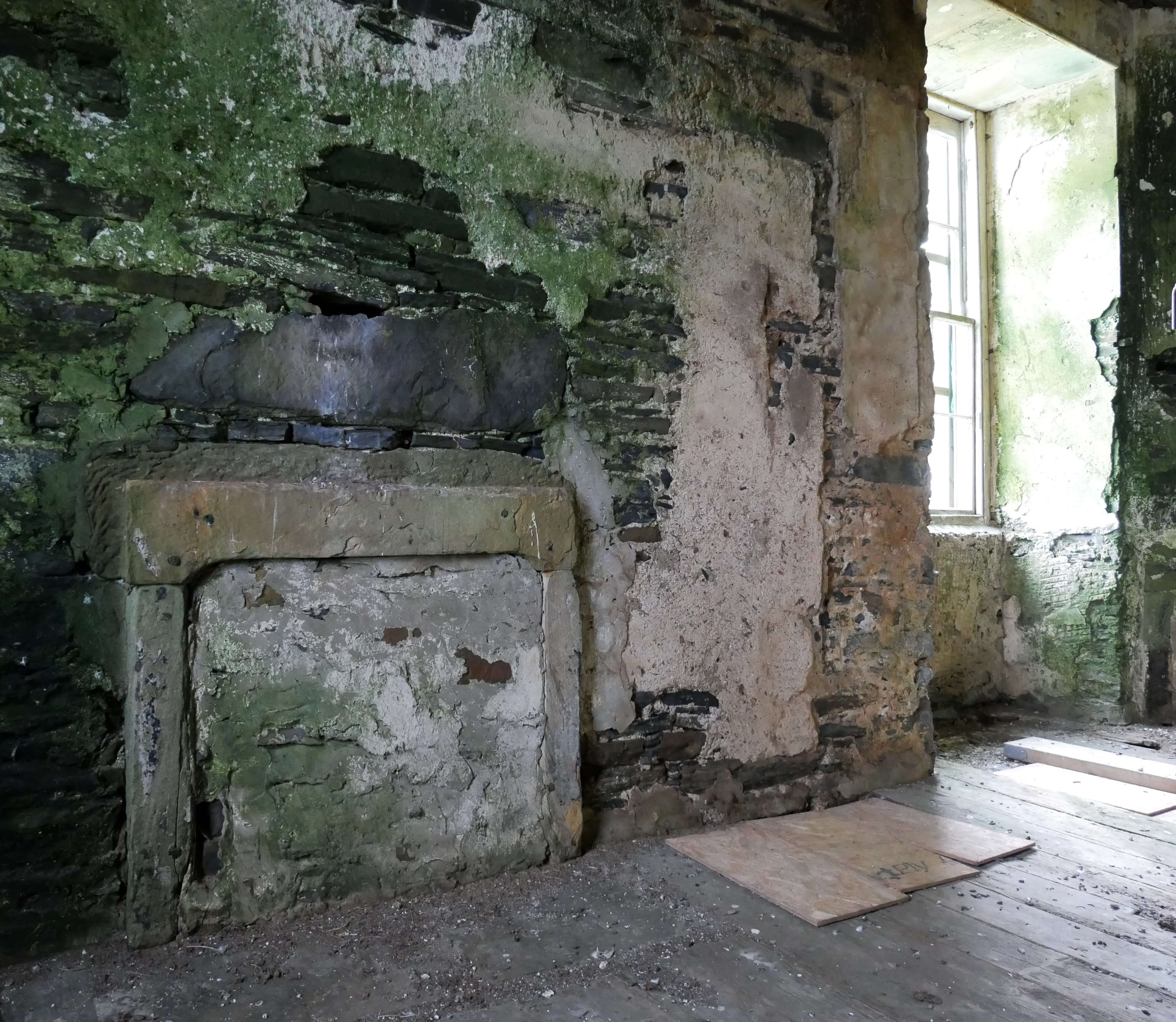
Read more about the Hall of Clestrain, and how you can help with efforts to restore this historic building.
The boat noust
Along the shore from the Hall of Clestrain are the remains of a wall-lined boat noust (pronounced 'nowst'), where the Raes kept the family boat.
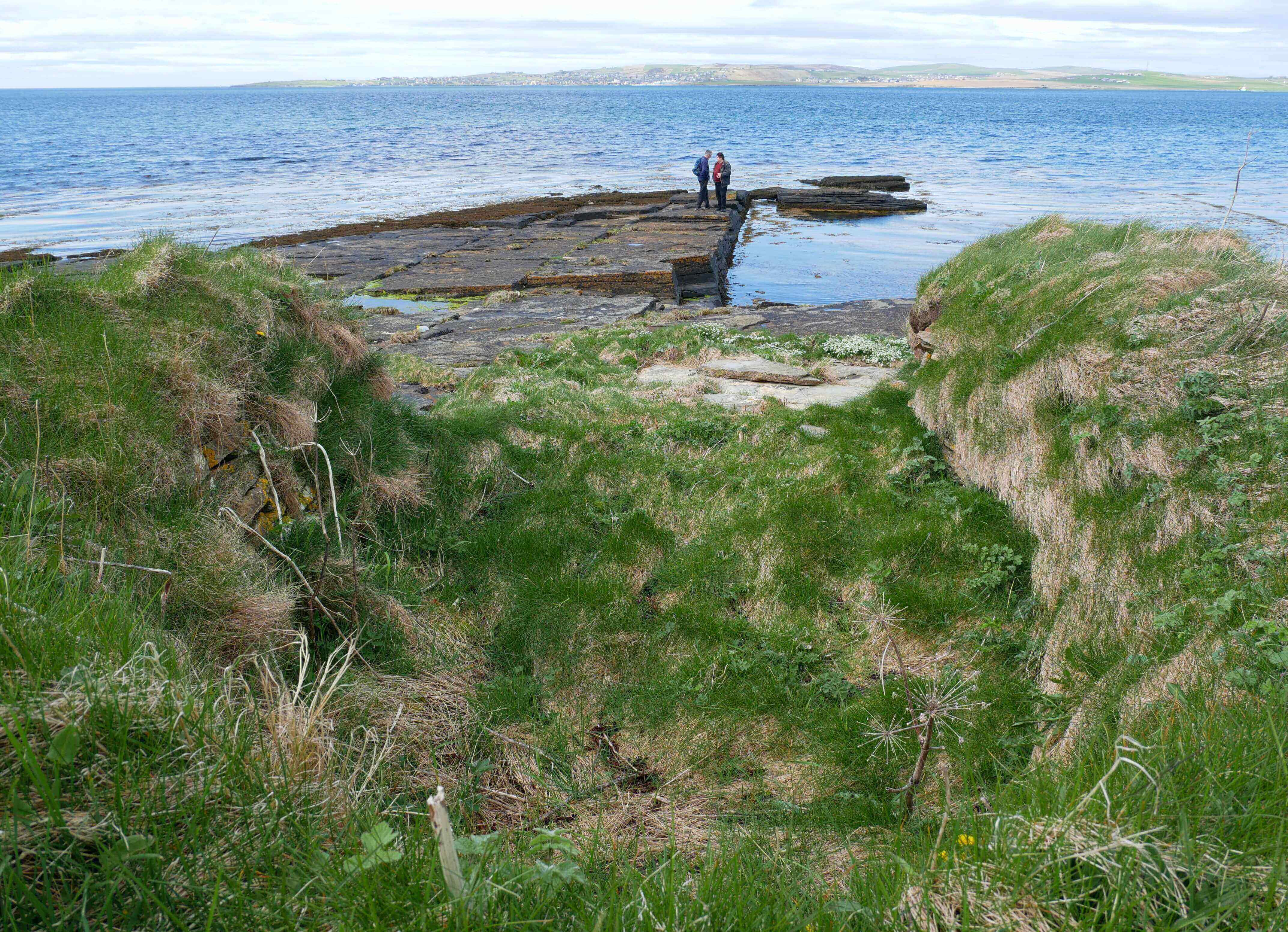
Rae remembered how he and his brothers would race the local pilot boats as they headed out.
Pilots would earn money by boarding incoming ships and guiding them through dangerous waters and safely into Stromness harbour.
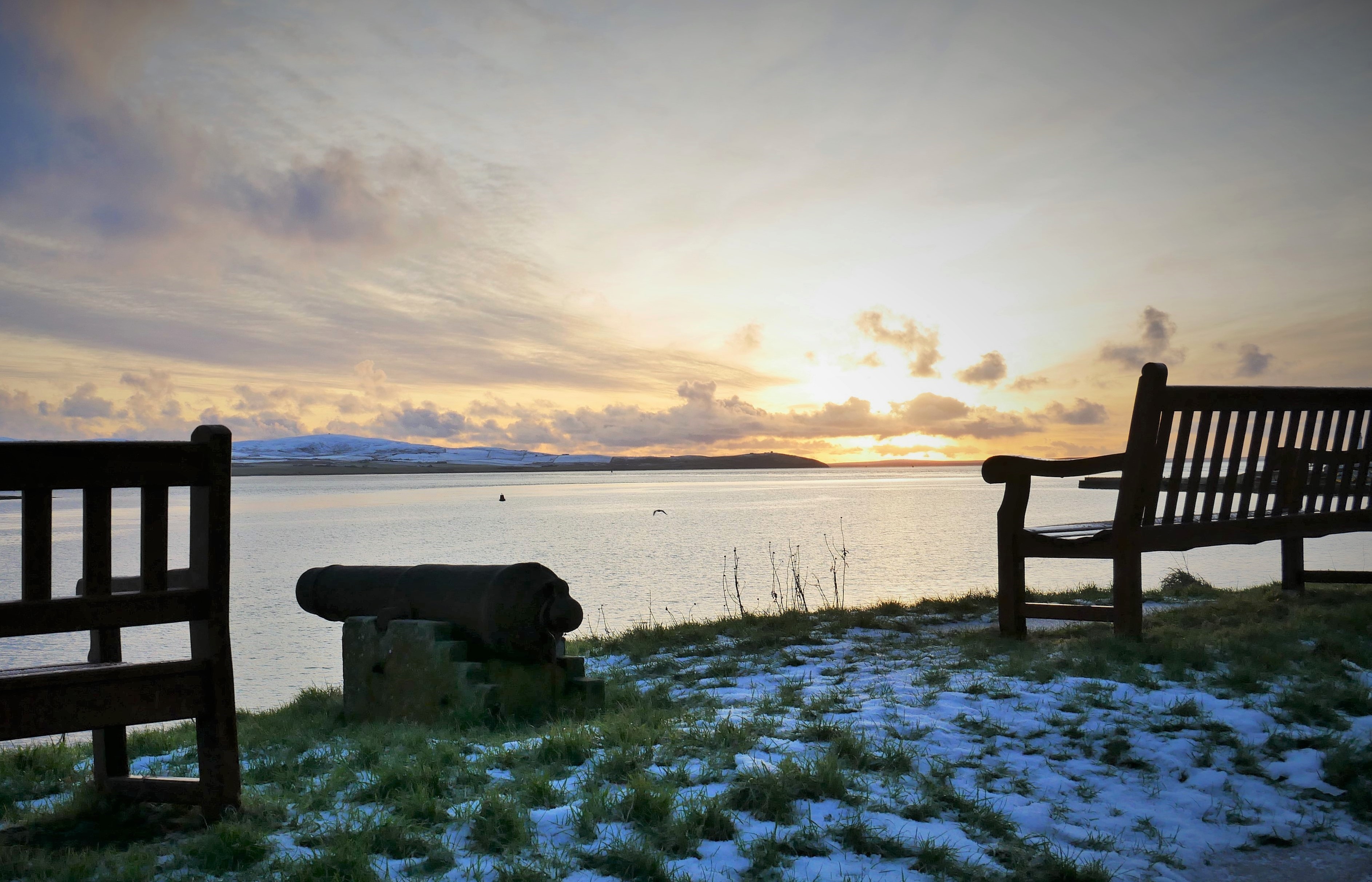
Behind the boat noust are the remains of a sail store - a place to store the sails.
It was built against the field dyke. The stone slabs projecting from the wall were used to keep the sails off the floor.
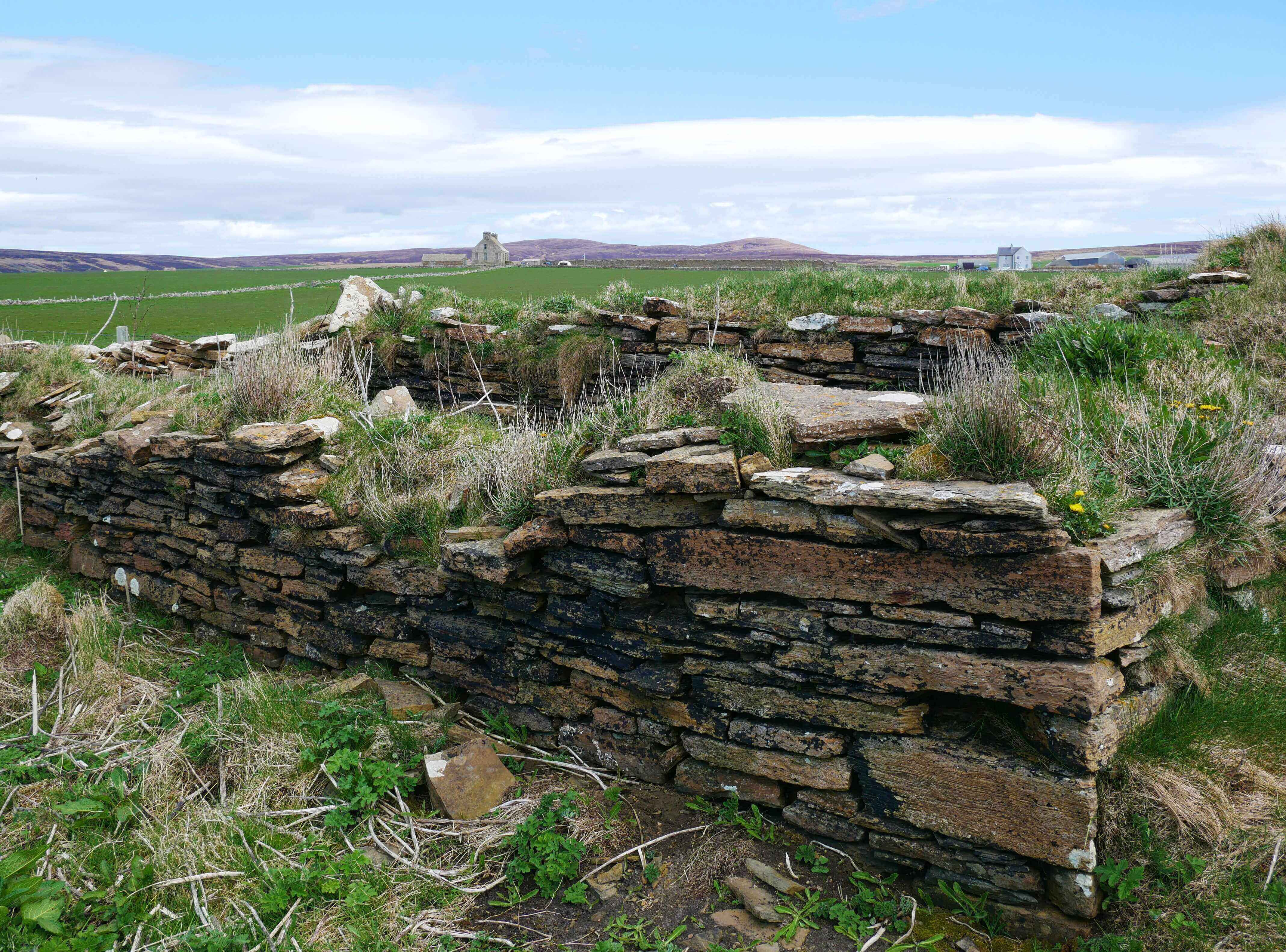
The Old Ha'
Standing in a field by the shore lies the ruin of the original Ha’ Hoose o’ Clestrain.
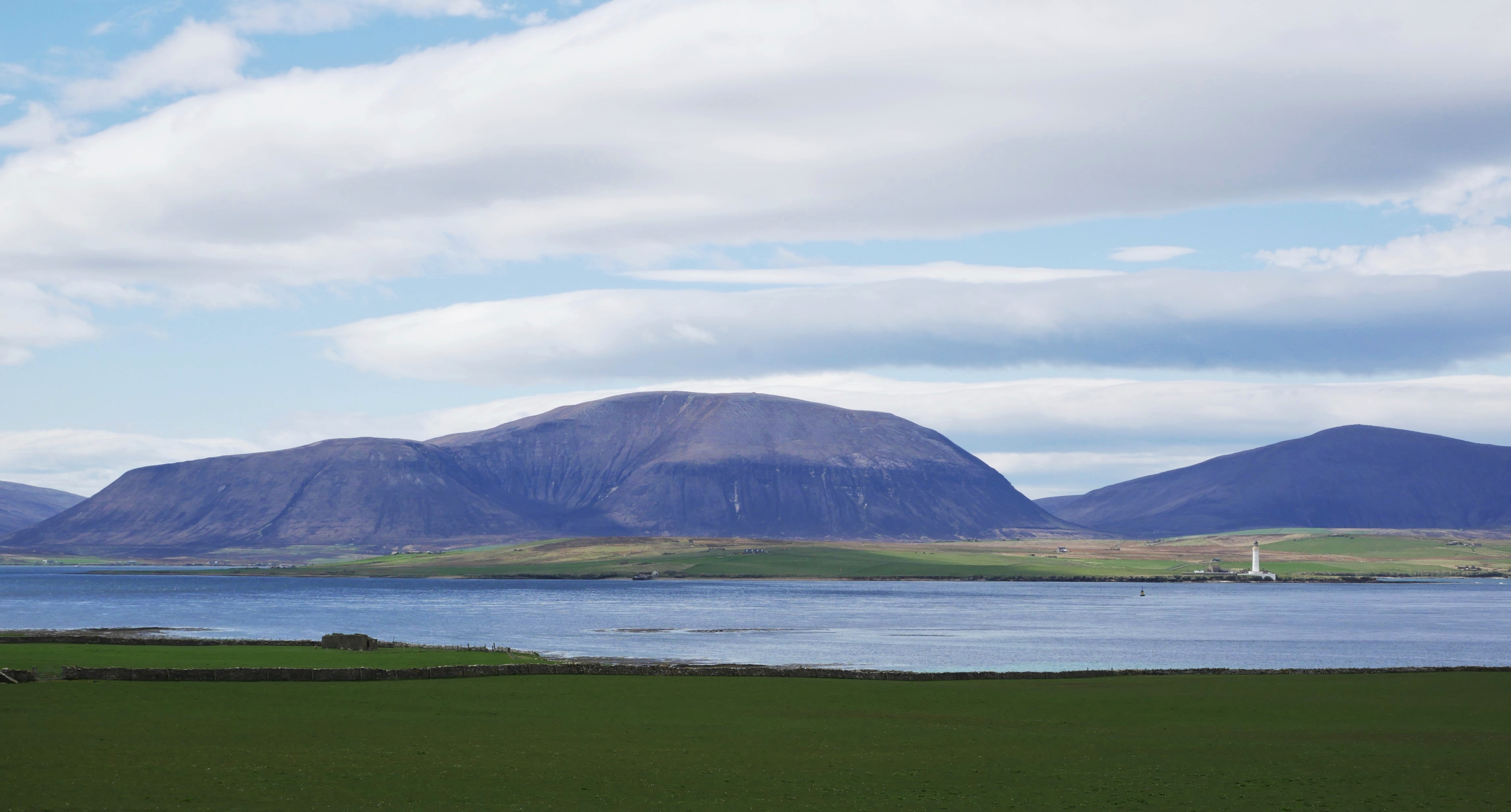
Overlooked by the later Hall of Clestrain, this house has in recent years been written off as merely the store house for the Honeyman estate.
The fine stonework around the doors betray its former glory, however. It must have been the house of the residing family at one time, and is thought to date from the 17th century.
This old house has seen more than its fair share of drama.
The Tale of the Pirate Gow
On the night of the 10th February 1725 there was a knock at the door of the Ha’. When it was opened, eleven armed men forced their way in, declaring that they were pirates and had come to plunder the house.
These men were part of the crew of the Revenge, a pirate ship that had been anchored nearby for a few weeks under the command of Stromness man, John Gow.
But Lady Honeyman was more than a match for the pirates. She ran around screaming, seemingly in panic, but secretly hid a large amount of gold coins about her person and then ran out into the night.
When her daughter heard that the estate papers were to be burnt in retaliation for the loss of the gold, she wrapped them in a napkin and threw them out of an upstairs window before jumping out herself and carrying them to safety.
The pirates did manage to steal a silver plate and other valuables and made the Honeyman’s servant, Edward Gunn of Graemsay, lead the way back to the ship playing the bagpipes as they went.
In another version of the story the ladies of the house hid the valuables under a pile of feathers in an upstairs room. The pirates failed to search through it, as they feared it would spoil their clothes.
Gow was not a very successful pirate. Quite an embarrassment to Orcadians, really.
The pitiful pirates were captured when their ship ran aground on the Calf of Eday.
He ended his days on a gibbet in London.
This Old Ha' is also the scene of one of the best ghost stories in Orkney ....
The White Lady of Clestrain
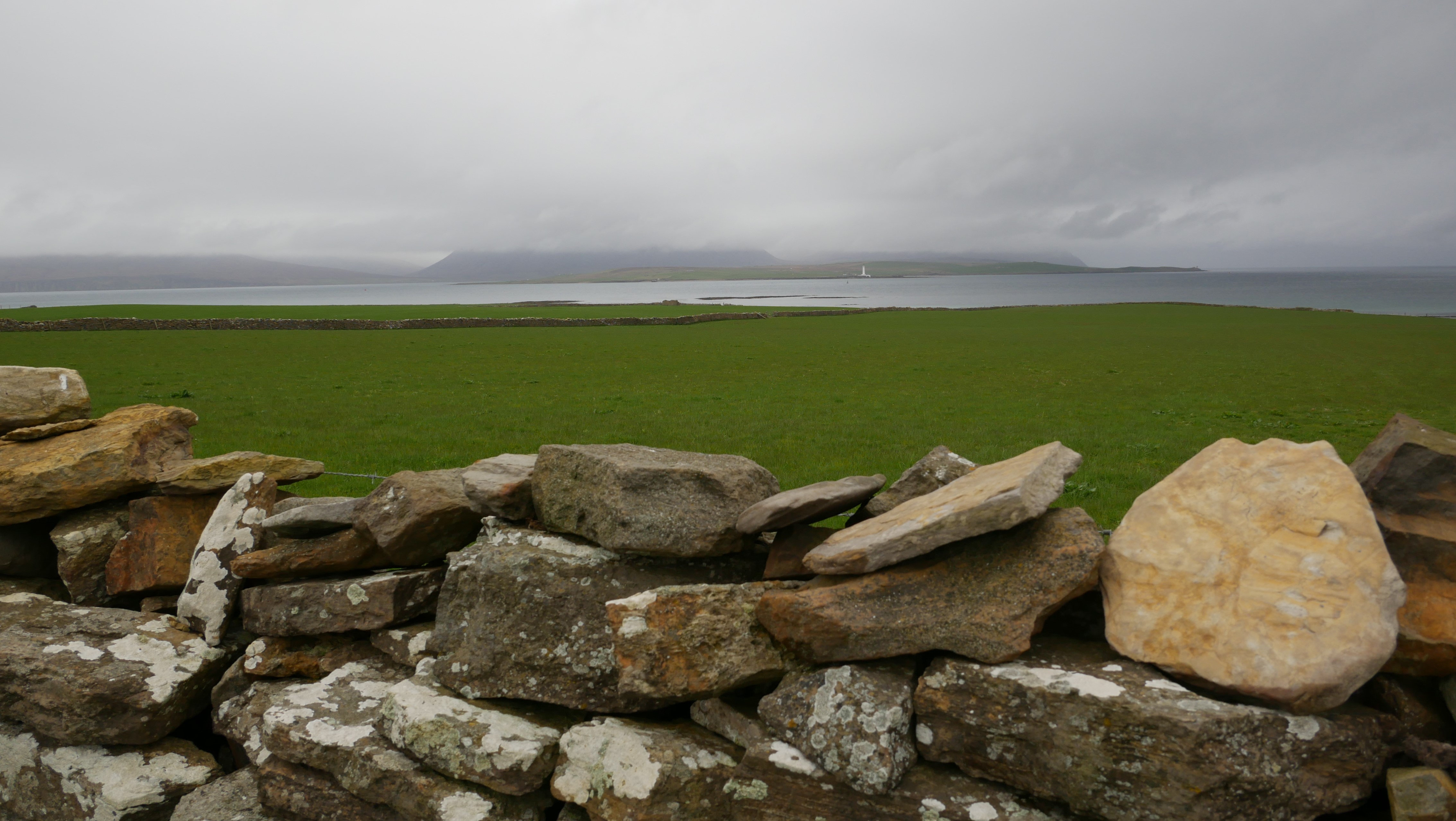
As a boy Dr John Rae would pass the old building with fear and trembling. Sometimes he'd see lights flickering from the windows of the old Ha’ on dark nights.
He was sure they were the ghosts from the story.
In fact, they were smugglers signalling to a boat at sea to let them know that the coast was clear.
Dr John Rae's grave
Along the back wall of St Magnus Cathedral Graveyard as you stand with your back to Broad Street, you will find Dr John Rae’s grave – third from the left.
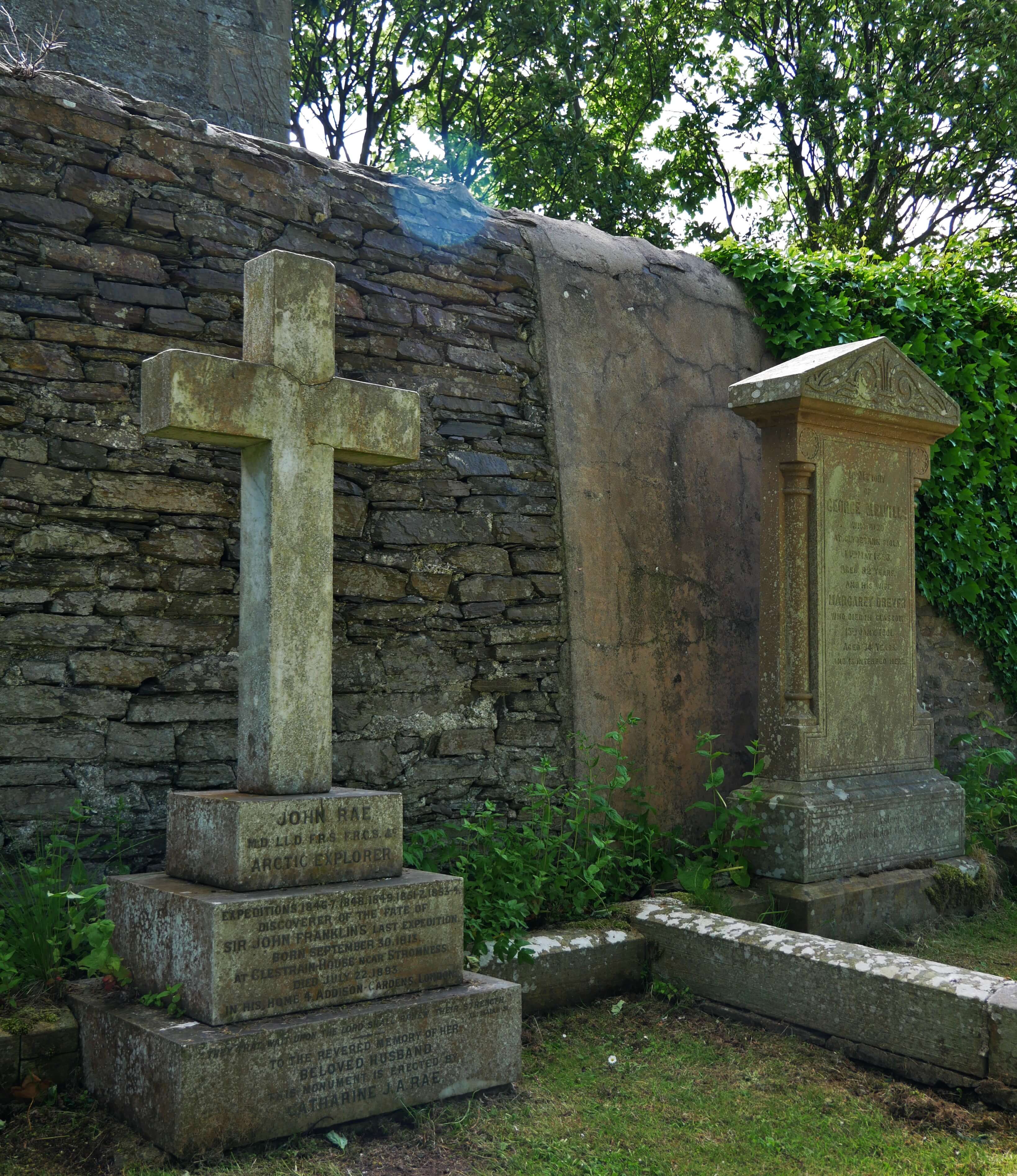
Rae had not left instructions as to where he wanted to be buried, only saying that his funeral should not be too expensive.
His widow, Kate, decided to bring him home.
A newspaper gives us the details:
THE ORKNEY HERALD
Wednesday 2nd August 1893
FUNERAL OF THE LATE DR JOHN RAE.
The remains of the late Dr John Rae, were interred in the churchyard of St. Magnus Cathedral, Kirkwall, on Saturday afternoon. They arrived by the steamer St. Magnus about noon, and at one o’clock the funeral procession formed at the pier. The members of the Kirkwall Kilwinning Lodge of Freemasons attended, wearing the regalia of their order; and there were also present many members of the general public.
The remains were taken to the cathedral, where a large number of people had assembled. After a special service had been conducted by the Rev. James Walker, the bier was borne into the churchyard for interment.
The mourners were Mrs Rae and her sister, who had accompanied the remains from London; and the pall-bearers were Mr A. Gold, vice-convener of the County; Mr T. W. Rankin, Sheriff-Clerk; Mr J. Barnett, Crown Chamberlain; Mr D. J. Robertson, County-Clerk; Mr R. G. W. Irvine; Rev. James Walker; Provost Spence; and Mr S. Baikie, sen.
All places of business were closed during the time of the funeral, the bells of St. Magnus Cathedral were tolled, and flags were hoisted to half-mast. The coffin was covered with wreaths sent by friends in London and elsewhere.
It’s worth mentioning that local businesses closed voluntarily for the funeral. This act of respect shows the great esteem Orcadians held for Rae.
John Rae memorial in St Magnus Cathedral
An added mark of respect was the public subscription to have a memorial of Rae placed in the St Magnus Cathedral.
The result, unveiled the following year (1894), was a Portland stone statue of Rae asleep in the Arctic. He's covered with a skin blanket.
Nearby are his gun and a book.
Rae used to carry books, which he’d have to defrost with his own body heat in order to read.
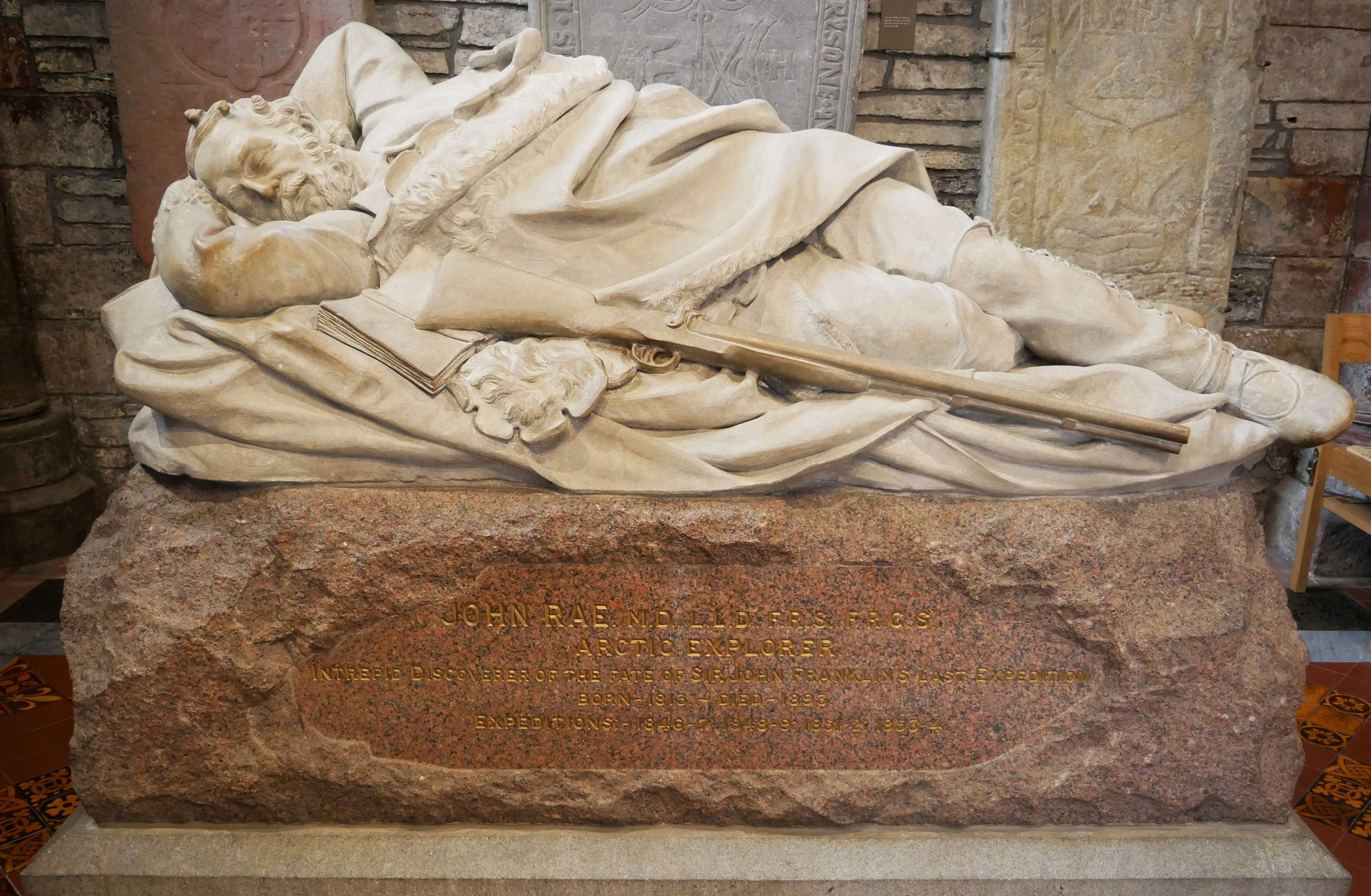
St Olaf's Episcopal Church, Kirkwall
As well as being a beautiful and peaceful place to sit for a spell ...
... this lovely kirk boasts a stained glass window dedicated to John Rae.
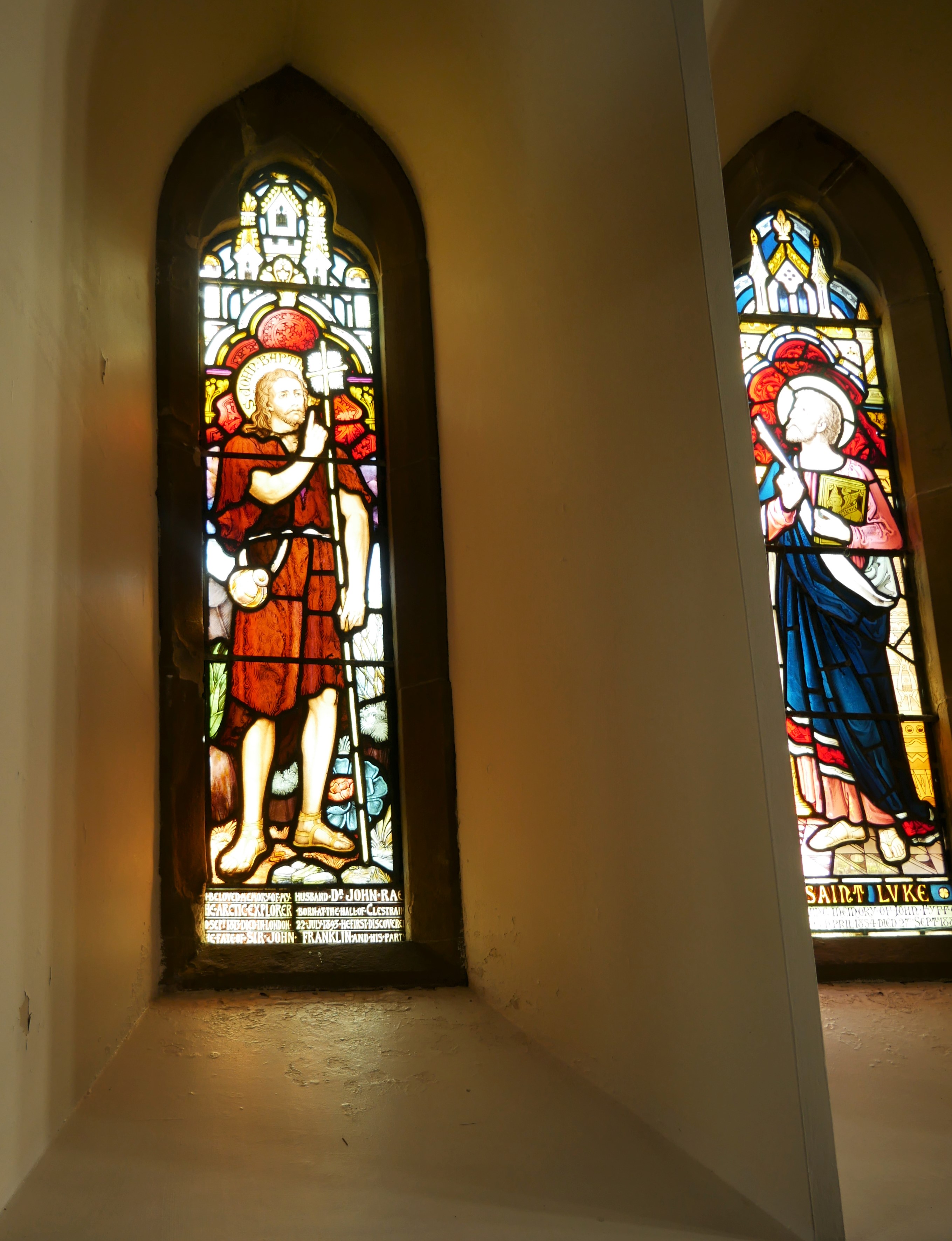
The window was donated by his widow, Kate Rae.
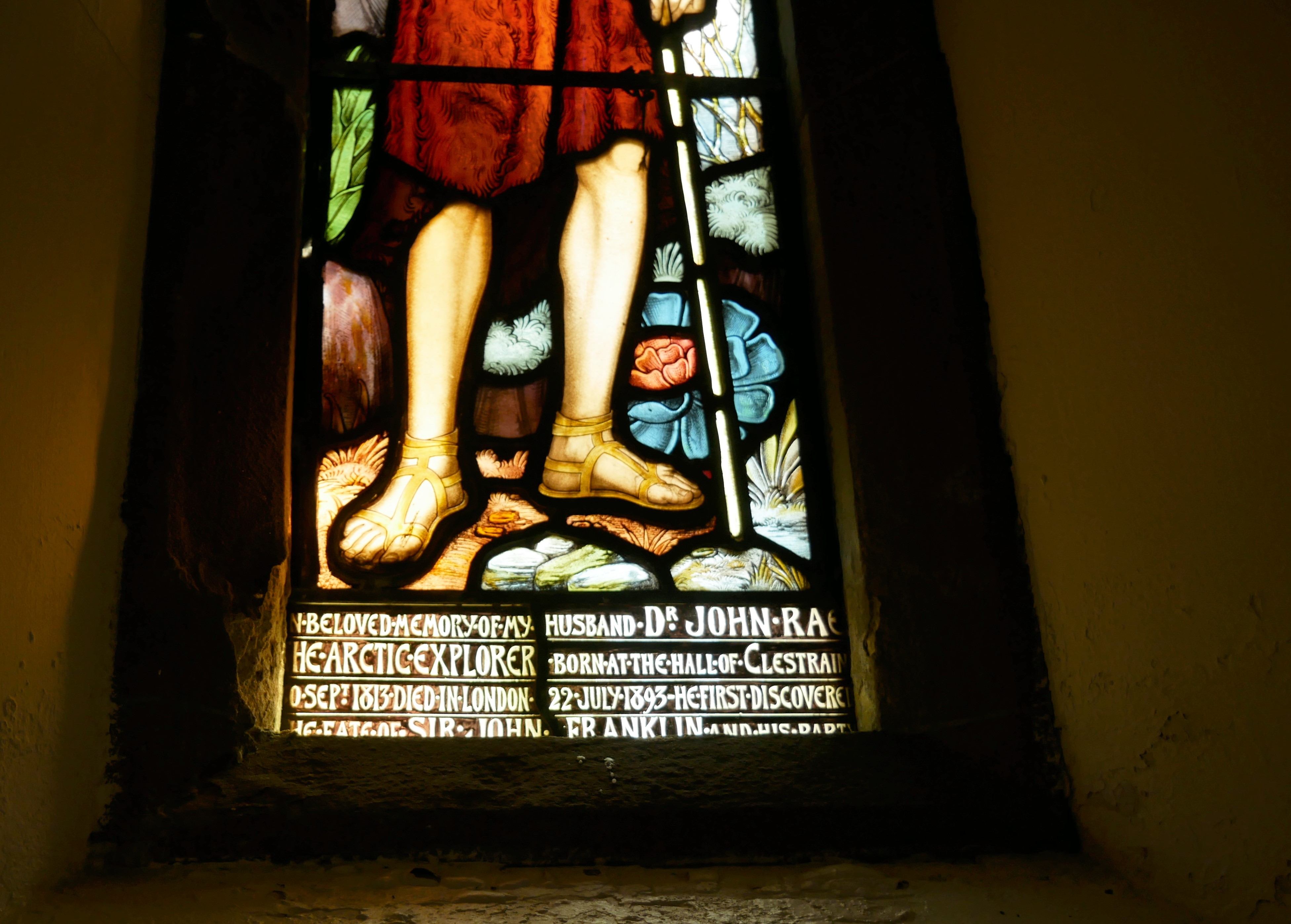
A note about opening hours:
St Olaf's says: 'The church is usually open during daylight hours rather than specific hours.
Most days it’s opened by 9am, but time of locking up varies according to the season – maybe about 4 or 5pm in winter, but often as late as 9pm in summer.
Since it’s the Rector who takes responsibility for this, it’s not open while he’s away on holiday.
And it’s often also closed on particularly wet and windy days as the roof is inclined to leak!'
Dr John Rae statue, Stromness
A bronze statue of Dr John Rae was unveiled in Stromness on his 200th birthday, 30th September 2013.
It stands at the Pier Head, looking towards his birthplace across the bay.
The funds for the statue were gifted by former Stromnesian Alan Twatt.
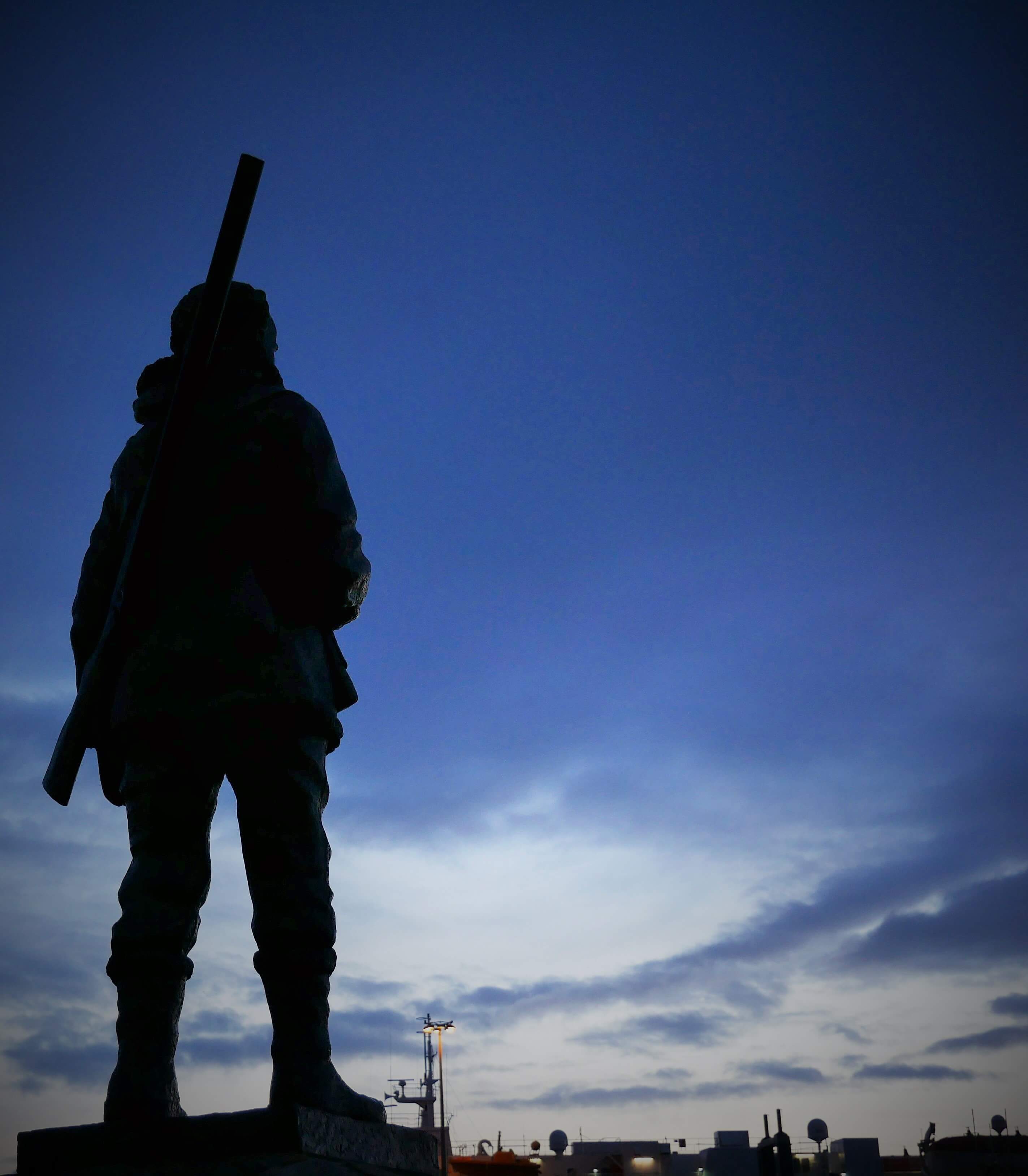
The statue was created by the North Ronaldsay artist, Ian Scott.
Among Ian’s other works are busts of Stanley Cursiter, Edwin Muir, Eric Linklater and George Mackay Brown in the Orkney Library & Archive and the Longhope Lifeboat Memorial in the graveyard at South Walls.
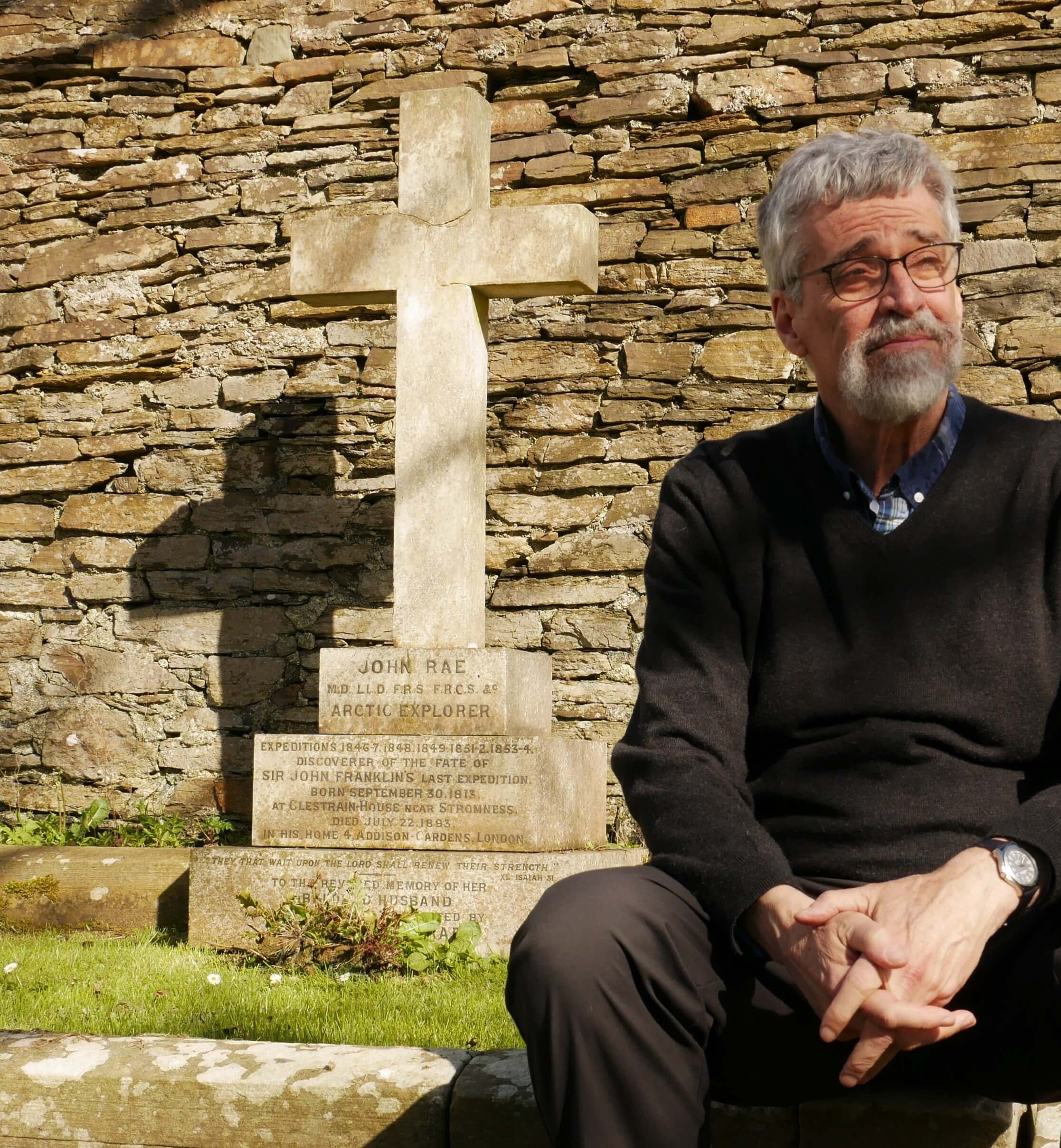
Rest in peace, John.


Tom Muir's suggested reading list
As an avid reader with a huge (and growing) personal library, I have a few suggestions for a deeper exploration into Rae the man and the story of Arctic exploration.
The first three books I recommend are available to buy internationally through our local Orcadian Bookshop.
Click on the books if you'd like to purchase them. We'll make a wee bit of income, and you'll get a new book!
Fatal Passage - Ken McGoogan
The book led to the highly acclaimed film ‘Passage’ by John Walker, in which I appeared. It was, in fact, this film that brought my good friend Ken and me together for the first time, at Admiralty House in London. We have remained friends ever since.
Lady Franklin's Revenge - Ken McGoogan
She was a dedicated traveler at a time when women of her class were expected to concentrate on embroidery and being subservient. It's a fabulous read and goes into more detail about her vendetta against Rae.
New Orkney Antiquarian Journal
I contributed a paper for this collection called ‘Rae and the Supernatural: a Tale of Two Cultures’.

You can find most of these books and the following ones - new or used - on Amazon or Waterstones, too.

The Arctic Journals of John Rae -
Ed. Ken McGoogan
The book reproduces Charles Dickens’ shocking Household Words article railing against the Inuit, as well as Rae’s response to it.
John Rae’s Arctic Correspondence 1844-1855
Ed. Ken McGoogan
Dead Reckoning - Ken McGoogan
Dead Reckoning is a gripping read, well written and absolutely fascinating. Ken looks at the earliest exploration of the Arctic, as well as the 19th century obsession with finding a North West Passage.
The book covers Rae and Franklin, and the frequently ignored stories of Inuit contribution to Arctic exploration - stories that did not always end well for the Inuit.
No Ordinary Journey - various contributors
The exhibition was in the NMS in Edinburgh and at Tankerness House Museum, Kirkwall, now the Orkney Museum. The writers are Stromness historian Bryce Wilson, Dale Idiens, Jenni Calder and Ian Bunyan.
The writings explore Rae’s life in Orkney and the Arctic, the people who lived there and the wildlife that Rae would have encountered. Although the book has long been out of print it is worth looking for. It's filled with beautiful colour photographs throughout.
Finding John Rae - Alice Jane Hamilton
Having visited Orkney for the first time in 2013, for the ‘John Rae 200 Conference’, Jane tracked down people who she could ask about the explorer’s life and times. I was one of those people. We remain good friends and have met in Orkney several more times.
In Finding John Rae, Jane has turned Rae’s story into a novel, giving a feeling of intimacy with the man as he endures the hostility of Victorian society.
Finding Franklin - Russell Potter
His book is well-researched and very readable, covering the various searches for the ill-fated Franklin Expedition and also John Rae. This book looks at more recent searchers, as well, including the highly respected Inuit historian Louie Kamookak, who died 22nd March 2018 aged just 58.
Mr Potter writes about John Walker’s film ‘Passage,’ and he follows the bizarre story of the inscription on the Westminster Abbey plaque to Rae. This memorial plaque was pared down to basically nothing, showing that the old order is still applying ‘Victorian values’ to rewrite history.
Erebus - Michael Palin
Erebus is a very enjoyable and well researched book giving the history of Franklin’s flagship, HMS Erebus, from its launch to its loss and eventual rediscovery.
Palin includes the story of John Rae, but disappointingly makes no mention of Rae finding Rae Strait, the last link in the only navigable North West Passage that existed at that time.
Instead he credits the discovery of the Passage to a crewman on Franklin’s expedition, whose skeleton was found on the Canadian mainland. The myth of Franklin is still strong.
And last, but certainly not least ...
... I have to mention our friend - and a beautiful person - the fabulous artist Barbara Rae. Her new work, The Northwest Passage, was inspired by John Rae.
Barbara's stunning collection of Arctic paintings were shown first at the Royal Scottish Academy in Edinburgh and later in Stromness' Pier Arts Centre.

Click below to hear Radio Orkney talk with Barbara Rae, Michael Palin and Aimee Leonard about John Rae.
Map of John Rae sites in Orkney

Mermaid image (Rhonda's pages) and storyteller image (Tom's pages), and all other illustrations except where noted are here by the courtesy of our dear friend - Stromness author, artist and historian, Bryce Wilson MBE, who owns all copyrights. Thanks, Bryce!

